the new vital signs
Industry leaders are viewing holistic healthcare through a fresh lens, recognizing that wellness requires a more thorough checklist P8


Industry leaders are viewing holistic healthcare through a fresh lens, recognizing that wellness requires a more thorough checklist P8

Maven is partnering with leading employers, health plans, and health systems to transform women’s and family healthcare through cutting-edge technology, deep patient engagement, and on-demand virtual care.
We fill critical gaps in care for any path to parenthood, including:
MATERNITY
POSTPARTUM
FERTILITY*
EGG FREEZING*
SURROGACY*
ADOPTION*
LOSS
PARTNERS
MANAGER TRAINING
BREAST MILK SHIPPING
EARLY PEDIATRICS
INTERNATIONAL
*Maven Wallet can be enabled for seamless reimbursement management.
Learn more and request a demo
sales@mavenclinic.com
www.mavenclinic.com
Centers keeps track of and learns from every opportunity—big or small
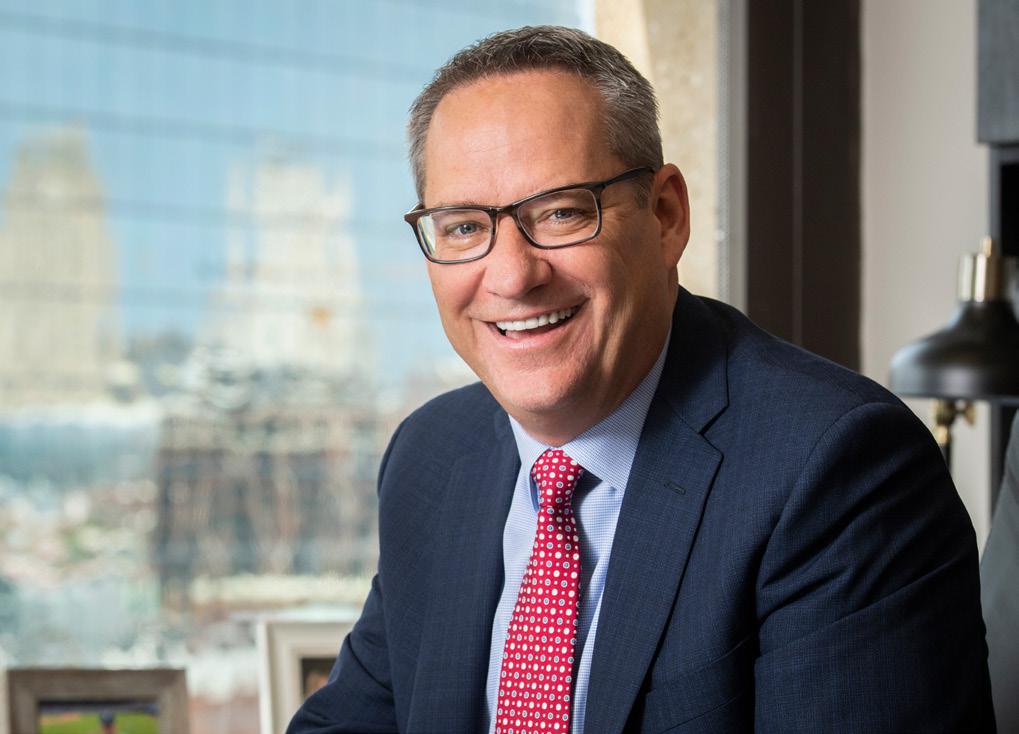
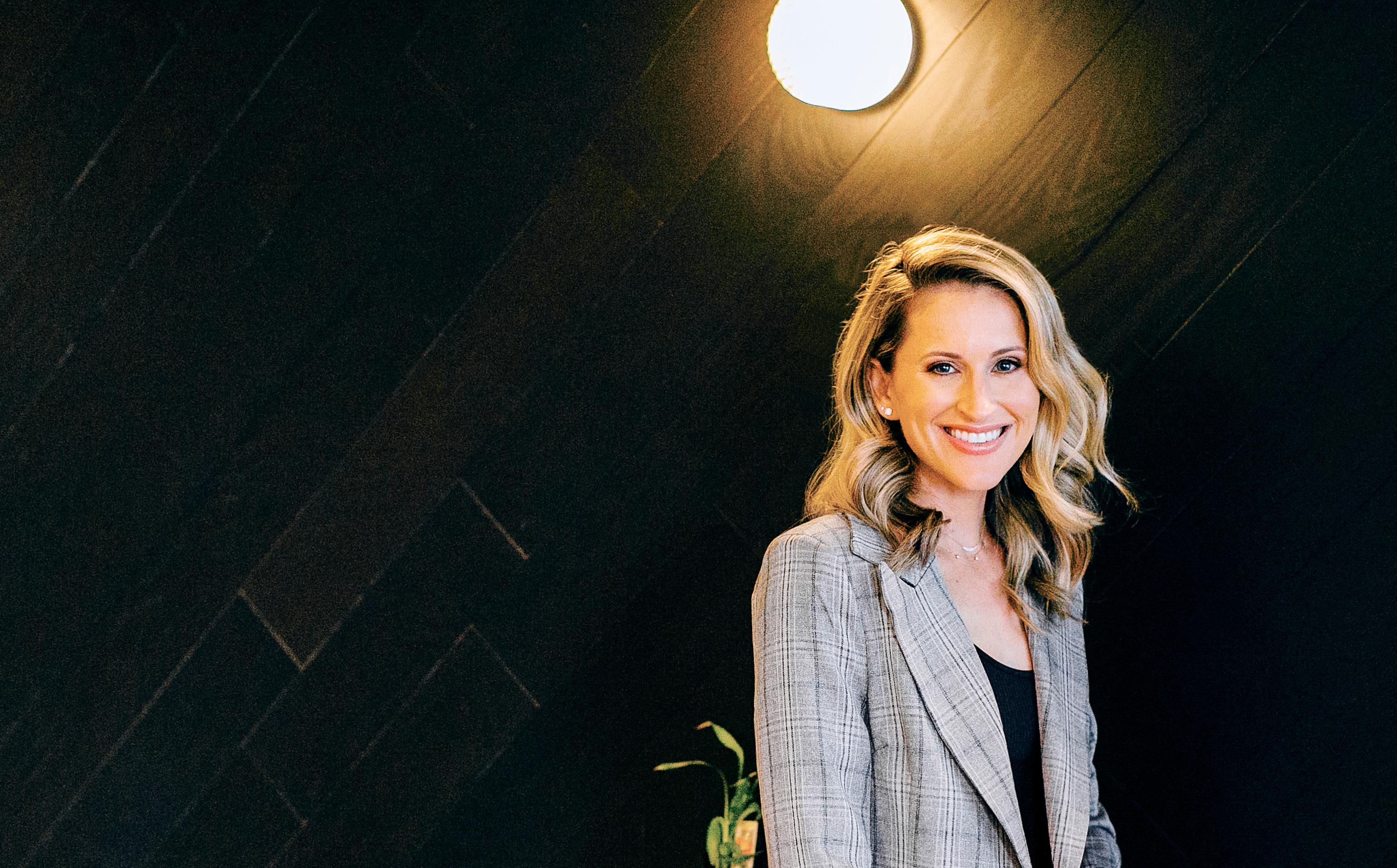
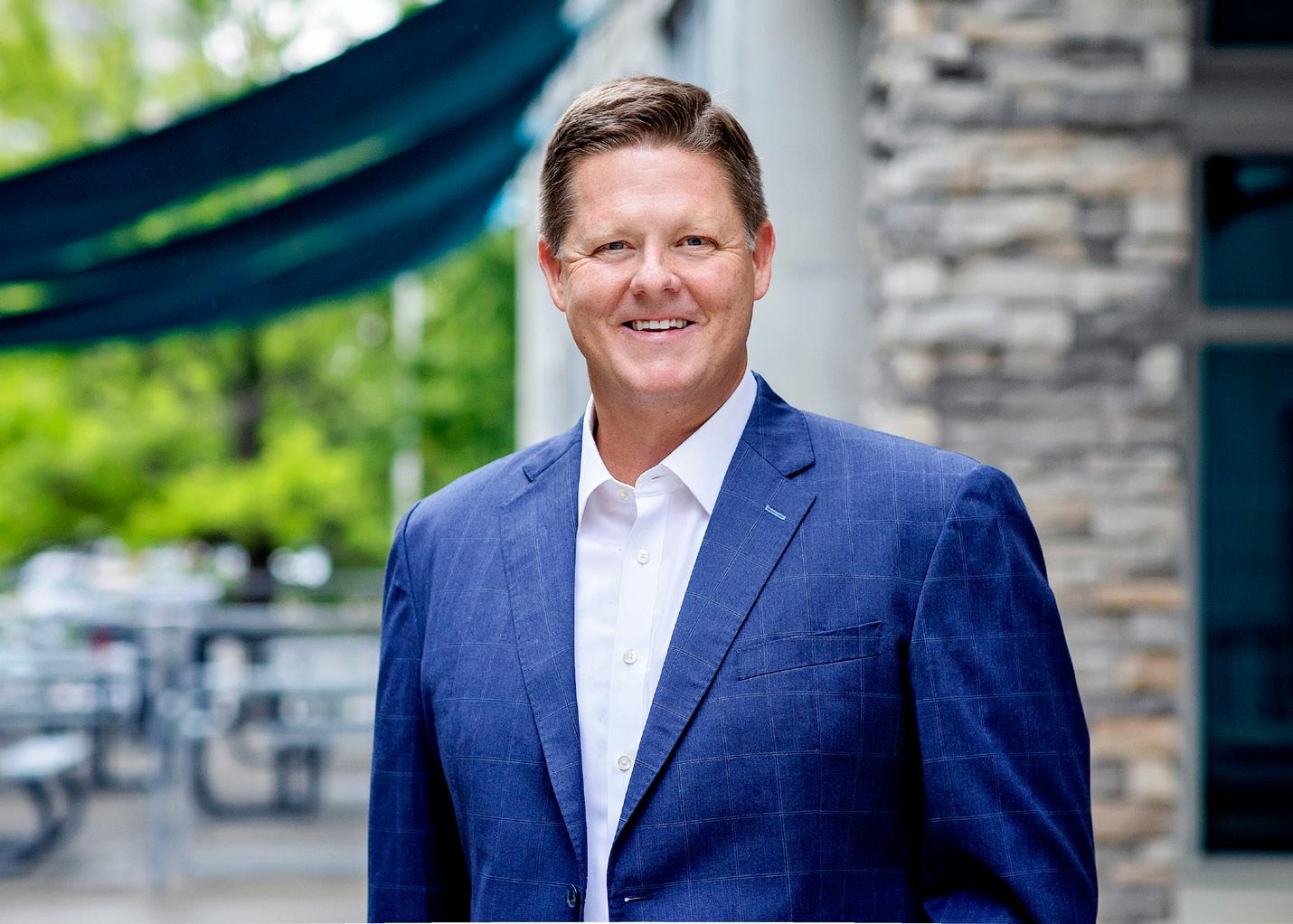 86. Jonathan Wilson’s “crash course” navigating the American healthcare system inspires him to help promote transparency at UnitedHealth Group
14. Walter Harris gives us a look at the Kaiser Permanente School of Medicine
30. With more than two decades of law experience, BIOTRONIK’s David Royster details the importance of patience and the lessons it teaches
22. SVP Scott McAdams ingrains compliance into the culture of Blue KC
56. CEO Matthew Hawkins keeps Waystar Health’s software solutions consumer-centric
The72. Brett Tracy’s second chance at life motivates him to go above and beyond for Carilion’s patients and team members
86. Jonathan Wilson’s “crash course” navigating the American healthcare system inspires him to help promote transparency at UnitedHealth Group
14. Walter Harris gives us a look at the Kaiser Permanente School of Medicine
30. With more than two decades of law experience, BIOTRONIK’s David Royster details the importance of patience and the lessons it teaches
22. SVP Scott McAdams ingrains compliance into the culture of Blue KC
56. CEO Matthew Hawkins keeps Waystar Health’s software solutions consumer-centric
The72. Brett Tracy’s second chance at life motivates him to go above and beyond for Carilion’s patients and team members
support patient care her new and improved total rewards program
138. Head of Benefits and Wellness Bart Trench enacts his plan to support Protective Life employees at every stage of their lives
146. Senior Associate Counsel Rick Kidwell uses the power of honesty to propel UPMC forward
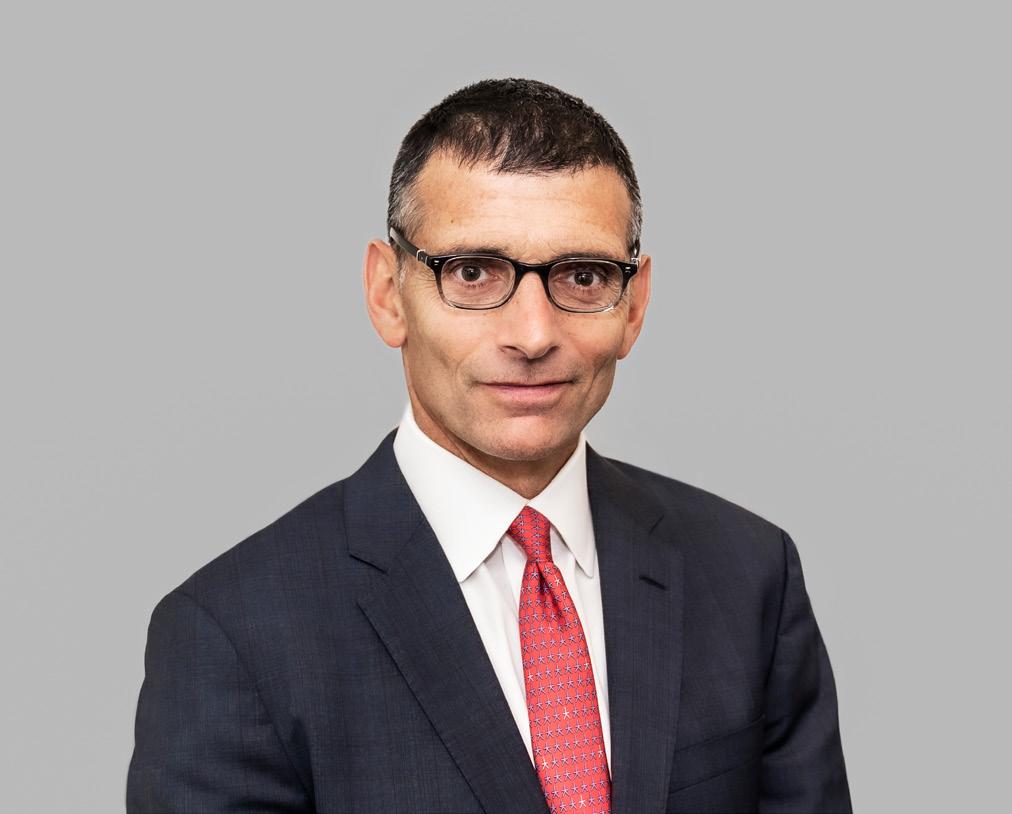
142. AdventHealth’s missiondriven culture inspires Rena Freeman to instill a sense of empowerment in every member of the team
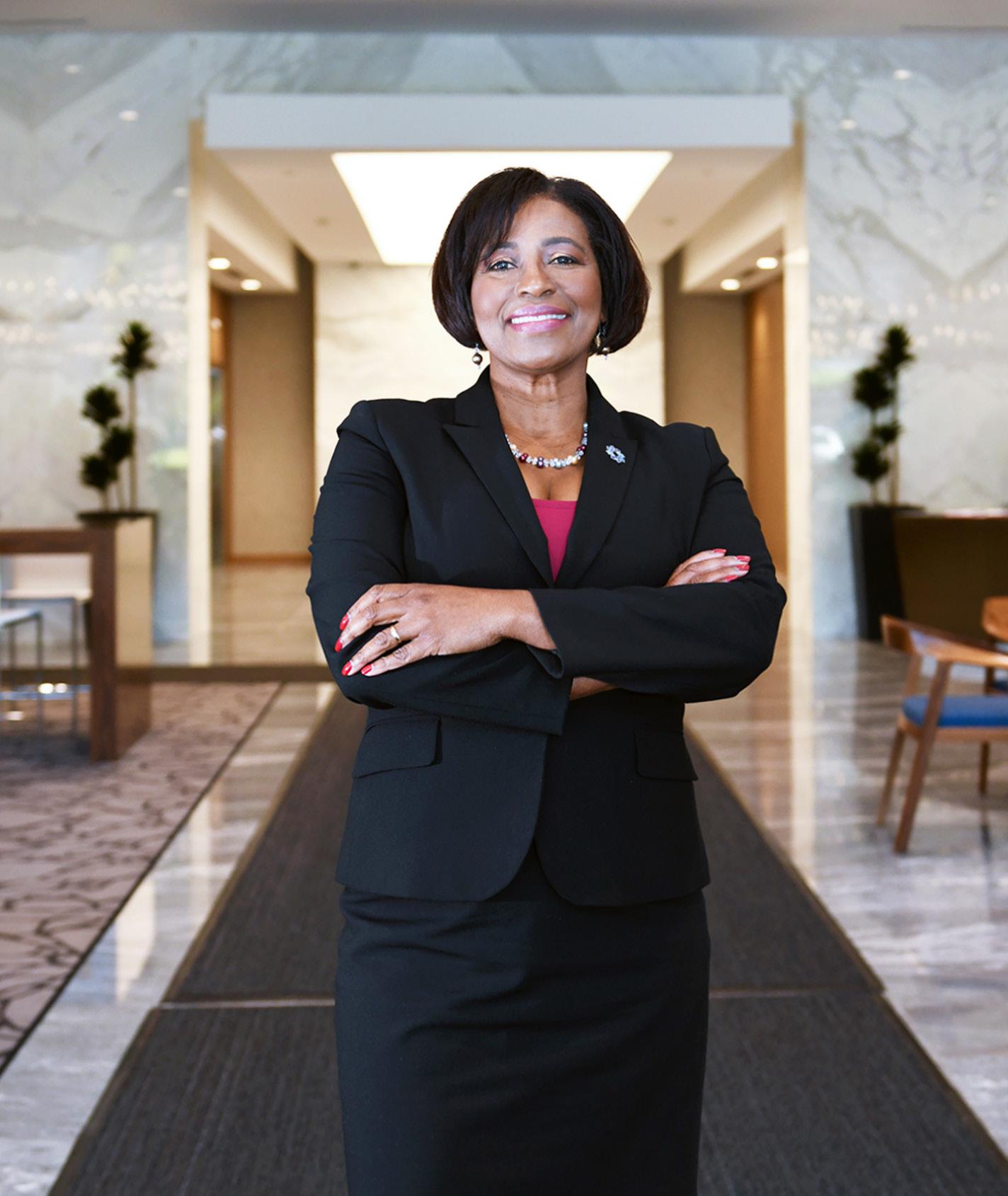
8. Where do health and environment intersect? Healthcare professionals across the country are realizing that a person’s well-being is determined by more than traditional treatment methods. Discover how looking at outside factors offers new solutions inside the clinic.
 Jaclyn Kronstedt (Hackensack Meridian Health); Jamie Panico (Cushman & Wakefield); Cass Davis (Photo Illustration)
152. Cushman & Wakefield’s Mark Weiss uses NYC’s limited space to the public’s advantage
96. Takeda’s Chris Allen ensures all team members know that their contributions are important and appreciated
104. CISO Kapil Assudani’s pulls from years of leadership experience in cybersecurity to create top-notch security programs
Jaclyn Kronstedt (Hackensack Meridian Health); Jamie Panico (Cushman & Wakefield); Cass Davis (Photo Illustration)
152. Cushman & Wakefield’s Mark Weiss uses NYC’s limited space to the public’s advantage
96. Takeda’s Chris Allen ensures all team members know that their contributions are important and appreciated
104. CISO Kapil Assudani’s pulls from years of leadership experience in cybersecurity to create top-notch security programs
CREATIVE
VP, Creative
Kevin Beauseigneur
Director, Editorial
Kevin Warwick
Managing Editor
KC Esper
Senior Editor
Frannie Sprouls
Editors
Melaina de la Cruz
Sara Deeter
Hana Yoo
Staff Writers
Sara Deeter
Billy Yost
Contributors
Peter Fabris
Lori Fredrickson
Yvette Vernon
Zayvelle Williamson
Clint Worthington
Editorial Intern
Brianna Wright
Senior Designer
Lauren Keeling
Contributing Designer
Mary Delaware
Photo Editors & Staff Photographers
Cass Davis
Gillian Fry
Production Assistant
Andrew Tamarkin
CORPORATE
CEO & Publisher
Pedro A. Guerrero
Chief of Staff
Jaclyn Gaughan
VP, Sales
Kyle Evangelista
VP, Hispanic Division
Vianni Busquets
Senior Events Manager
Jill Ortiz
Senior Director, Finance
David Martinez
Director, Client Services
Cheyenne Eiswald
Senior Client Services Manager
Rebekah Pappas
Client Services Manager
Brooke Rigert
Director, Talent Acquisition
Elyse Schultz
Talent Acquisition Manager
Haylee Himel
Director, Business Development
Jenny Vetokhin
Director, Strategic Partnerships
Krista Horbenko
Director, Strategic Accounts
Taylor Frank
Senior Director, Sales
Ben Julia
Sales Training Manager
Alexa Johnson
Content & Advertising Managers
Megan Apfelbach
Mia Avina
Olivia Binke
Joseph Jennings
Kelly Stapleton
Drew Thomas
AHL Magazine® is a registered trademark of Guerrero, LLC.
Facebook: @ahlmagazine
LinkedIn: @american-healthcare-leader
©2020 Guerrero, LLC guerreromedia.com 825 W. Chicago Ave. Chicago, IL 60642
Reprints
Reprinting of articles is prohibited without permission of Guerrero, LLC. Printed in China. For reprint information, contact Reprints & Circulation Director Stacy Kraft at stacy@guerreromedia.com.
When my mother first caught wind of Dan Buettner’s Blue Zones Project, she was hooked—and with good reason.
Buettner studied five cities around the world where celebrating someone’s one hundredth birthday is not all that uncommon. In places like Sardinia, Italy; Okinawa, Japan; and Loma Linda, California, the concentration of centenarians is at another level, and not just because they eat better or live active lives—though that’s a huge part of it. Populations in these areas also focus heavily on meditation, stress reduction, moderation, and strengthening relationships.
In highlighting the important factors and practices that go toward living meaningful, long lives, the Blue Zones Project seeks to instill these mindsets in cities across the United States, enabling communities that once struggled to promote wellness the opportunity to thrive.
Naturally, my mother—the Pilates instructor who rode her bike from California to Florida when she turned fifty-three—was ecstatic to discover the study.
To her, and to so many wellness enthusiasts, the project highlights the importance of stepping outside the four walls of a hospital to tackle the environmental factors that significantly affect our health. It’s all about looking objectively at a community to help change it, while prescribing mindfulness instead of medication, connection instead of clinics, and access instead of apathy.
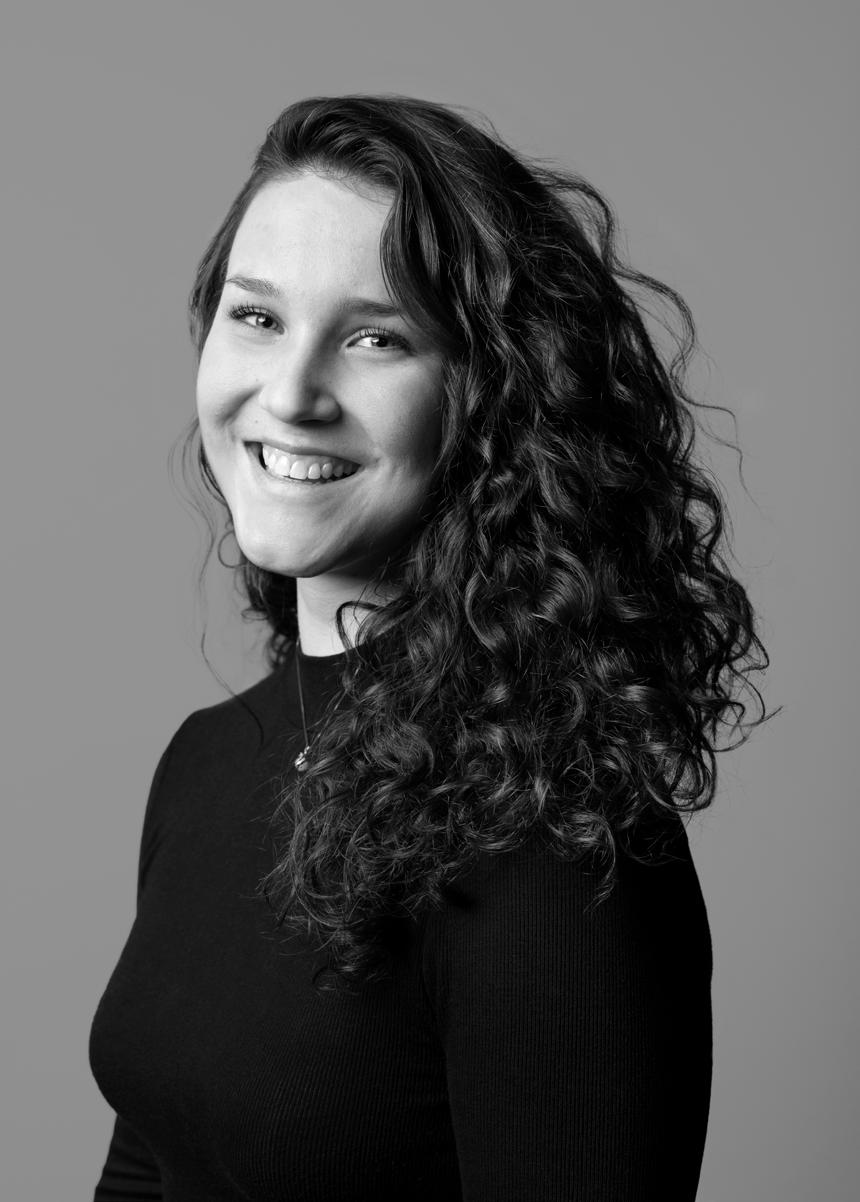
Little did I know before I embarked on this issue of American Healthcare Leader that environmental factors ultimately compound into the social determinants that so deeply affect health. Like other avant-garde leaders in the health industry, Buettner seeks to encourage patients and colleagues to live to their fullest potential, lower or illuminate healthcare costs, and streamline processes to increase visibility and accessibility.
Within this issue, you’ll not only read about the leaders who promote better habits while creating equal opportunities in their circles and beyond, but also those leaders who protect these rights within the organizations they serve. Together, their collective goal is to strengthen the bond patients have with the ownership of their health.
By changing the way we look at our health—and what shapes it—we’re designing new blueprints for our lives that go beyond what we originally thought possible. We’re opening avenues everywhere for populations to feel safe, strong, and content.
And that’s something for everyone to be ecstatic about.
KC Esper Managing Editor

 By KC Esper | Photos by Cass Davis
By KC Esper | Photos by Cass Davis
These main four signals of our life-sustaining functions will always persist as the golden indicators of our basic well-being. But industry leaders are realizing that in order to properly address patients’ health, they need to welcome a more holistic view of it— including the factors that cannot be measured inside a hospital and the interpersonal skills that, when practiced within a clinical setting, make a difference externally.
Did you know?
A study from the Journal of the American Heart
Before patients even set foot inside a doctor’s office, their health has been touched by quite a few factors that don’t necessarily have anything to do with their genetic code. In fact, the Centers for Disease Control and Prevention nominates socioeconomic factors such as someone’s access to food, level of education, housing availability and status, and income as some of the top predictors of health.
As such, doctors and healthcare professionals are realizing that diagnoses rely less on people’s predisposed genetic condition and more on how they interact with their environment and use the resources available to them. Of course, most of the causes of and solutions for a particular condition intersect with the way someone’s environment has paved a path of healing for them.
But, for many who don’t understand how to properly manage their health, it’s up to community clinicians to promote better, well-rounded healing options— and education is key.
While smaller organizations can center their entire practice on holistic healthcare and alternative healing methods, more traditional organizations are doing their part by considering social determinants of health during patient exams and promoting transparency about health management and medical practices throughout the institution.
In-house lawyers and counsel, for instance, have developed and integrated patient liaisons and mediation efforts
Measuring our vital signs is second nature for clinicians—roll up your sleeves, take a deep breath, cough once . . . good.
Association shows that people who have limited access to affordable, fresh food are at a greater risk for heart disease. For people living in food deserts (lowincome neighborhoods with the same limited access), that risk increases by 46 percent.

to bridge the knowledge gap between patient and clinician. Other national institutions are working directly inside a community to develop wellness centers that educate the public about how to eat right, live well, and manage conditions.
Viewing healing through a lens that encapsulates the interpersonal and external factors that serve as the building blocks of our health—and our understanding of them—not only supports better-conditioned lifestyles, but also goes toward combatting health inequity across the nation.
A lot can happen when clinicians widen the scope of wellness. And when working with an all-encompassing checklist of our vital signs, we’re much closer to measuring and sustaining the pulse of our well-being. AHL
A Health Affairs brief lists four pathways that connect housing and health outcomes : stability, quality and safety, affordability, and neighborhood. Residential instabilities lead to increased rates of mental illness, mortality, predisposed health complications, and addiction.

Every step executives take on their career journeys is pivotal to achieving their current successes. Along the way, individuals accumulate technical skills, foster relationships, and develop the leadership acumen that have turned them into pioneers of the industry.
14. Walter Harris
18. Charles Bearham
22. Scott McAdams
26. Daphne Walker
30. David Royster
Walter Harris’s thirty-year career in healthcare started with a deeply personal journey. Having been conceived when his mother was in her early forties, the medical care she received was integral to ensuring that his was a healthy and safe delivery. “I refer back to that moment as to why I have a passion for healthcare and helping others,” Harris says. “It also speaks to my need to be a respectful and humble contributor.”
But his start in the field began with an early job working on the patient-tray line at Northside Medical Center—a job he landed after serving six years in the US Air Force. Learning about the hospital from behind the scenes, Harris realized he wanted to continue a career in healthcare and went to speak with the COO to express an interest in learning more about how the industry worked.
“From that point on, he took me under his wing,” Harris says. This guidance eventually enabled him to move on to a job as the general manager of the healthcare division of Sodexho Marriott International, become a hospital COO with Healthcare Corporation of America (HCA) and Community Health System (CHS), then up the ranks to executive roles at the Veterans Health Administration (VHA), US Department of Housing and Urban Development (HUD), the Centers for Disease Control and Prevention (CDC), the US Food and Drug Administration (FDA), and at George Washington University’s School of Medicine and Health Sciences. Working across an array of fields, Harris prided himself on being willing to take on any new opportunity that allowed him to learn more and broaden his organizational development and operations expertise.

“It has been a driving force in my career to take on jobs that launch me ahead, while recognizing how well I contribute to each position to get where I want to go,” Harris says. By working in healthcare in fields ranging from public health to academia, he was able to apply his expertise inside different settings, using his background to navigate political waters at the VHA, HUD, CDC, and FDA, and setting a priority on the bottom line in complex university settings.
These experiences led to some of Harris’s most valued accomplishments in earlier organizations, such as helping to change the culture and advancing inclusivity during his years as a deputy commissioner at the FDA and identifying and implementing a national housing locator tool for emergency victims at HUD. But his most important accomplishments, Harris says, have been preparing and developing the people he worked with in every setting to ensure that they had the tools they needed to continue moving their organizations forward long after he moved on.

All these lessons are integral to his latest role as the SVP of administration and finance at the new Kaiser Permanente School of Medicine in Pasadena, where since July of 2018, he has been working tirelessly to plan and implement all financial, business, and operational services for its 2020 launch. “I’ve gone full circle in my career between public health, healthcare, and academia,” Harris explains. “Having that well-rounded pathway is what has driven me to the school.”
Harris was first approached about the position in the fall of 2017, and what most impressed him about the school was its mission. “We’re focused on developing physician leaders and patient advocates who will help transform medicine by addressing health equity in the exam room and in the community,” Harris explains. Given his interest in always taking on a new challenge, and the value he saw his diverse skills adding to the school, it was a natural fit.
As a brand-new educational initiative from the nation’s largest nonprofit integrated healthcare system,
“I’m really excited to see this first cohort of students start, figure out their personalities, and to help them to grow.”Innis Casey
Harris characterizes his role as his “small, big job”—a small dot within the Kaiser Permanente enterprise, but one where the school’s mission has tremendous importance and impact. “The challenge is making sure we integrate the school of medicine in a manner that keeps the mission, values, and history of Kaiser Permanente in clear view. We are an anomaly, but one with a huge impact,” Harris says.
Educating internal and external stakeholders about the school’s strong mission and leveraging the robust infrastructure and resources Kaiser Permanente has to offer are critical to the school’s success. In addition to promoting its mission and strengthening internal and external relationships, he’s also played an integral role in hiring talented team members and obtaining operational resources needed to successfully carry out all the tasks required to get a new medical school up and running, including the successful LCME-accredited visit this past spring.
Throughout the school’s inception, Harris’s earlier experiences have helped him navigate many challenges. Harris cites three important lessons that helped guide his decision-making during times of uncertainty: knowing to never judge the book by its cover; knowing how to disagree when it matters; and knowing how to hire, lead, and follow a talented staff.

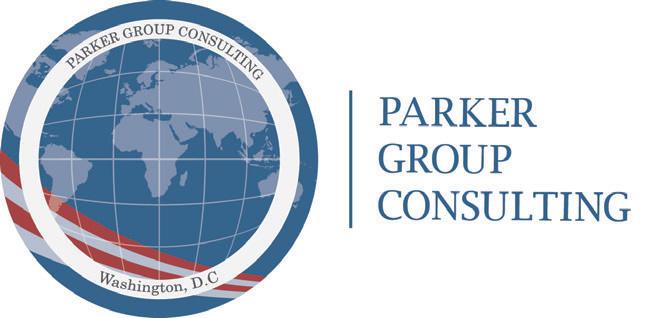


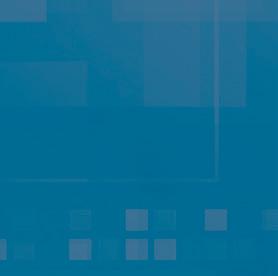





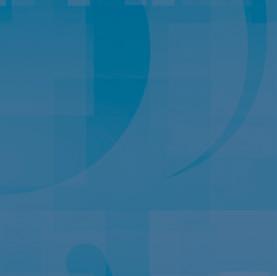
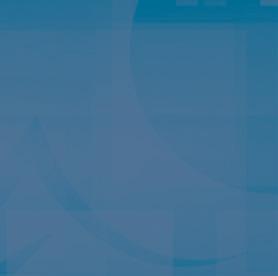

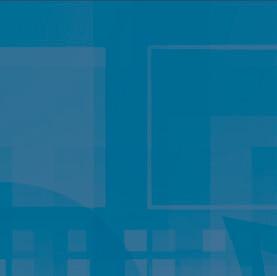
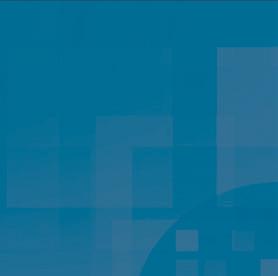
Having accepted its first round of student applications in the summer of 2019, the school will be welcoming its inaugural class in 2020. Harris is looking forward to seeing what comes with the new year and for the years ahead as that first group of students moves along through their own careers and helps to cement Kaiser Permanente School of Medicine as a destination medical school.
“The biggest joy I’ve ever experienced has been watching my two children grow and become adults,” Harris says. “I’m really excited to see this first cohort of students start, figure out their personalities, and to help them to grow.” AHL
Charles Bearham has made a name for himself by driving innovation and reshaping processes, and now he’s using those strategies to transform the revenue cycle management department at MEDNAX Inc.
You don’t have to be a business owner to drive change. Change will happen no matter what, says Charles Bearham, vice president of revenue cycle management (RCM) at MEDNAX Inc. You just have to be ready for it when it comes.
Bearham has always been ready for change, leaping at opportunities to innovate, rethink, and reshape company procedures. “I’ve always been pretty quick to say, ‘This process is horrible and doesn’t make sense,’” Bearham laughs. In fact, that tendency to point out process flaws is what secured Bearham his firstever promotion.
In his early twenties, while working as a frontline clerk in a bank, the new owner of the local credit reporting agency walked in and asked a few people what the credit bureau could be doing better. Right away, Bearham jumped in and pointed out specific areas that could be improved. “The next day, the owner came back
and said, ‘I’m letting go of the manager who’s running the business. I really liked all the things you said—what would it take for you to come over and run things?’ And two weeks later, I walked into the credit agency building and started looking at ways to innovate,” Bearham remembers.
Three months later, while attending a California conference on account collections, Bearham was approached by a hospital administrator from a small community-based hospital. The board of directors was looking for someone to head their collections operations, Bearham explains. “The next thing I knew, I was working at a hospital. I knew I wasn’t ever going to be a doctor,” he says. “But this gave me an opportunity to work with patients in my own way and talk them through the healthcare process.”
Today, Bearham holds a bachelor’s degree in healthcare administration and is a certified revenue cycle

Most people wouldn’t think that healthcare and classical music have anything in common, but Charles Bearham has seen at least one critical connection while volunteering with his daughters’ band association.
Playing in a band or orchestra is about everybody doing their part,” Bearham says. “The conductor has a vision of how the music should be interpreted, but he or she can’t play every instrument. Neither can I, in healthcare. So, it’s about ensuring that we’re all on the same page, listening critically to each player, and keeping pace with each note.”
executive with more than thirty years of experience in healthcare finance, quality management, and strategic healthcare planning. At MEDNAX Inc., a leading national health solutions provider with a network of more than four thousand affiliated physicians in all fifty states and Puerto Rico, Bearham is exposed to one-on-one patient relationships as well as the spirit of entrepreneurship for which he has always had such an affinity.
“We look at things differently here,” Bearham notes. “We don’t just follow the status quo, but actually rethink the way we do things, and that’s the way we talk about innovation. MEDNAX has grown so much in the forty years since it was founded, and now the company is focused on the future.”
While the company may not know exactly what the next several decades will hold, Bearham already knows exactly what part he needs to play in its growth— building and strengthening the company’s supporting infrastructure.
“I don’t know any other business or industry out there that has to spend 5 to 10 percent of what they earn just to get paid,” Bearham remarks. “In RCM, we are so focused on collecting every single dollar that’s out there, that we sometimes end up spending one hundred dollars just to get back that one dollar.’”
This is at the heart of Bearham’s “touch less, perform more” approach to rethinking MEDNAX’s RCM infrastructure. When one knows the actual value of individual steps in the administrative processes, Bearham notes, he or she is much better able to determine whether each step is worth taking in the first place. “The more we can minimize the cost of our administrative efforts,
“MEDNAX has grown so much in the forty years since it was founded, and the company is focused on the future.”
We congratulate Charles Bearham for his leadership in driving major changes across the revenue cycle.
the bigger margin we can provide for the organization to continue its mission,” Bearham stresses.
Increasingly, Bearham is looking toward automation such as robotic process automation to bring costs down for MEDNAX. In addition to adopting enhanced reporting and data tools to enable predictive analytics to drive his staff workflow, Bearham uses his department’s administrative cost analyses to identify the low-risk areas suitable for management by offshore resources.
“It’s about working smarter, and only touching what you absolutely have to,” Bearham asserts. “People who know me know that I have a vision—I’m not sure if I’ll ever achieve it—but I have this vision that someday I’ll be able to sit in the office and see only the accounts I have to look at because everything else is being processed automatically.” AHL
In healthcare, change is a constant. But instead of just responding to this rapidly changing environment, Charles Bearham is actively working to create changes that benefit not just his organization, MEDNAX, but that lead to best practices that benefit healthcare providers across the country. We’re proud to know Charles, and to help support his mission.
capabilities that help you achieve peak business health. Learn more at visiquate.com.

“My family is tired of hearing about compliance, but I find it so exciting,” Scott McAdams says, laughing. “I could talk about it all day.”
McAdams isn’t joking. The sheer number of ongoing initiatives and in-progress projects the SVP and chief audit, compliance, and risk officer at Blue Cross and Blue Shield of Kansas City (Blue KC) has undertaken in just under two years is genuinely staggering, and McAdams doesn’t sound the least bit tired. In fact, he sounds energized just by talking about the success of restructuring his division, the improved and streamlined reporting procedures, and the unwavering support he’s received from President and CEO Erin Stucky, the Blue KC Board of Directors, and the compliance and audit committee.
His list of accomplishments since joining the organization in 2018 is exhaustive, but according to the SVP, it’s just the beginning of earning compliance inclusion in all important decisions and proving the value of doing ethical business.
McAdams talks a lot about the concept of value. The value his team brings to the organization; the value that audit, compliance, and enterprise risk management provide to overall business strategy; and the importance of not only recognizing that value but also earning it.
Blue Cross and Blue Shield of Kansas City’s Scott McAdams is bringing a culture of compliance in a big, Blue way
McAdams had been at Blue KC for barely a year when his boss submitted his retirement. “Immediately, my drive and focus on compliance kicked in and I put together a business plan, demonstrated what I had done at other organizations, and demonstrated the value I thought the
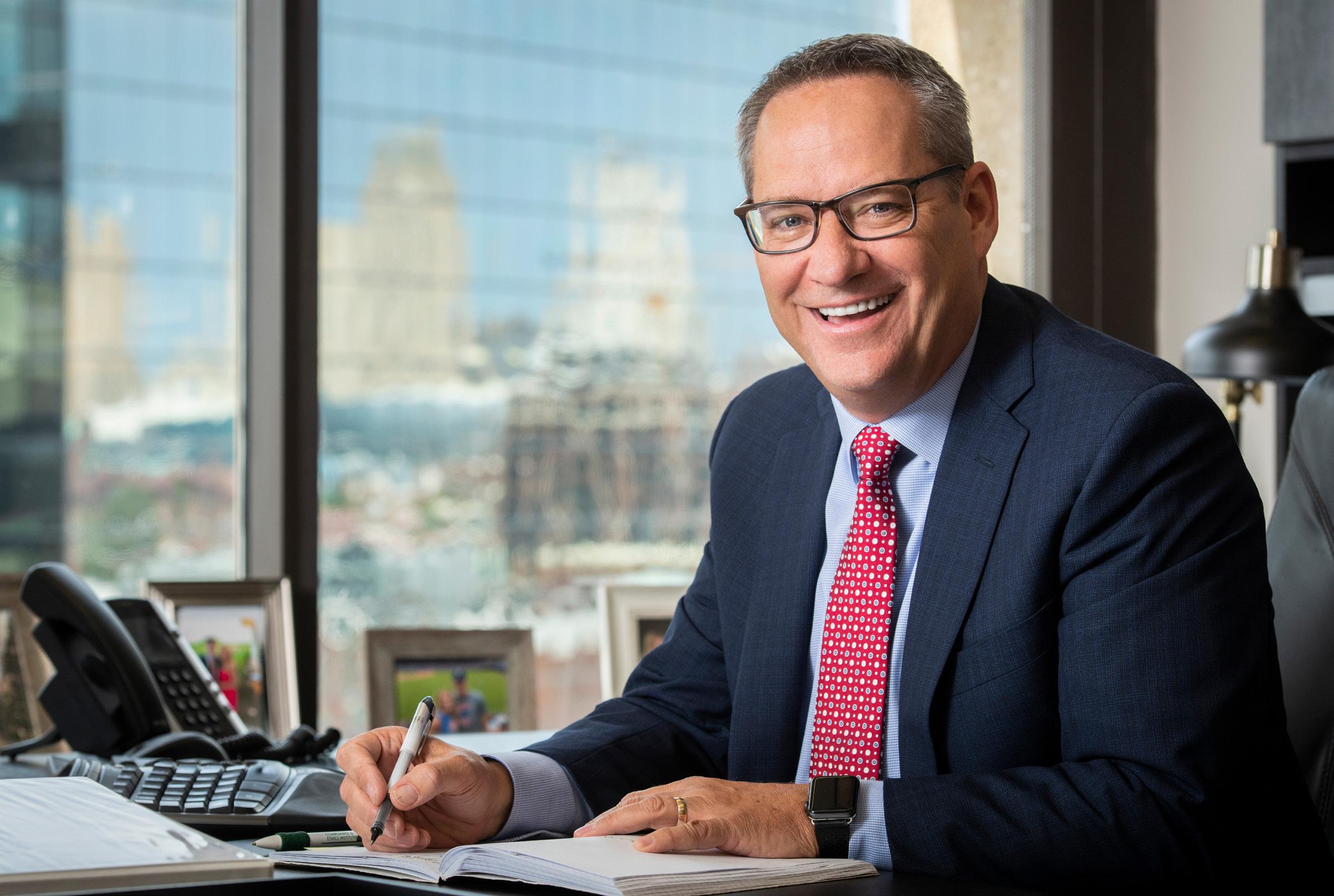
new structure could bring to Blue KC,” McAdams recalls. “Leadership really bought in and could see the vision, and I think the timing was just right.”
Buy-in from leadership, McAdams says, particularly from the new Blue KC president and CEO has been paramount to what he’s been able to accomplish in such a short time. “I will always advocate for the importance of giving compliance a seat at the leadership table,” McAdams says. “Erin Stucky’s commitment to compliance is demonstrated by her giving me a role as one of her six direct reports.”
The elevated role for McAdams has meant heightening Blue KC’s already strong compliance culture, particularly
in developing the company’s enterprise risk management program. “When I started, Blue KC did not have a dedicated risk management program. Other areas were doing a great job with the day-today demands, but we all agreed the work was important enough to warrant its own department. I had the great fortune of getting to develop the program and hire staff to support it.”
McAdams was also able to dramatically recalibrate Blue KC’s reporting to the compliance committee and audit committee. “I believe you should be able to deliver most reports in less than one page. A handout and supporting documentation are tools meant to provide
Cross and Blue Shield of Kansas City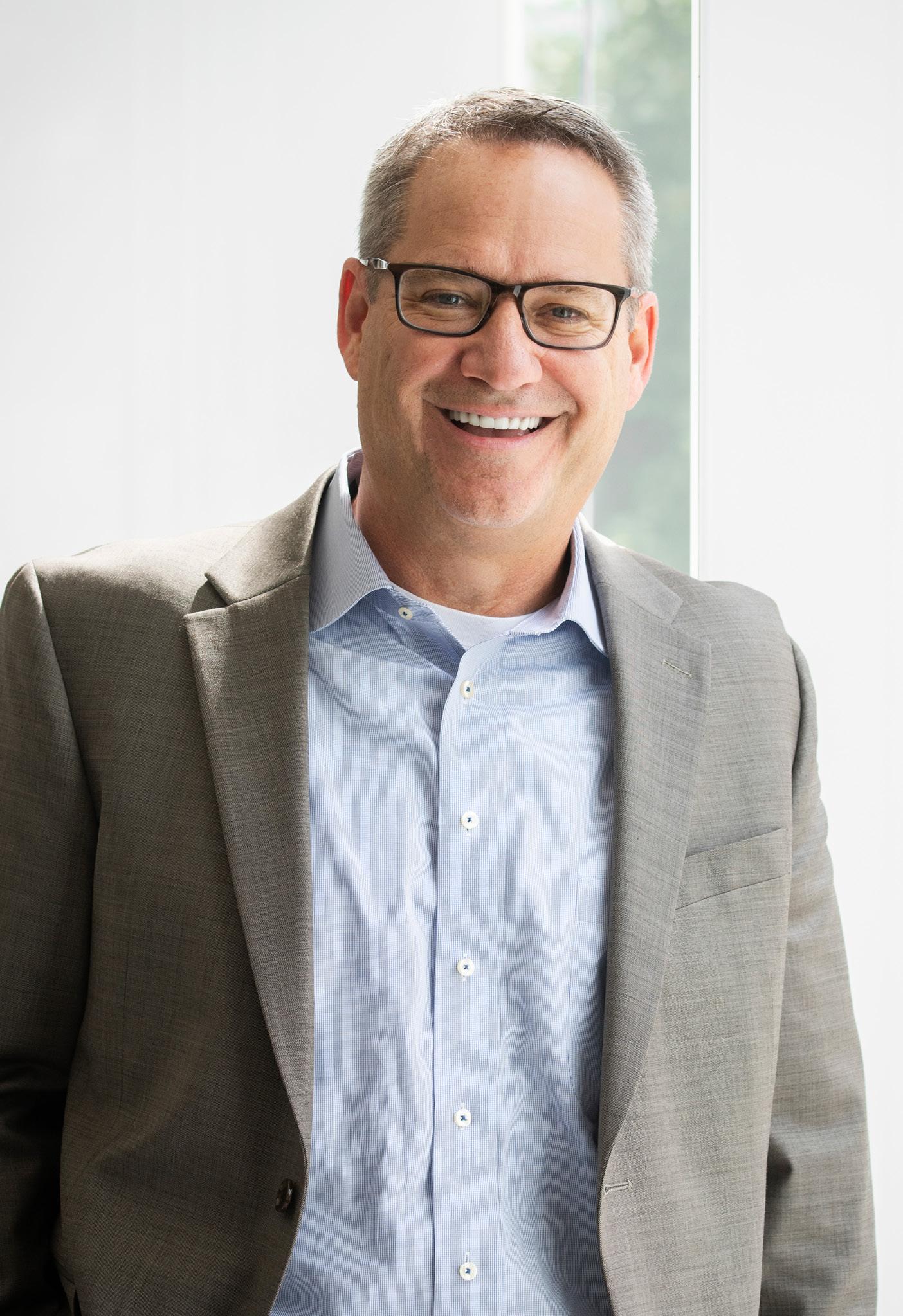
“We’re a highly regulated industry, and you can think that you’re audit proof all you want, but that’s not how I judge success. I judge success by being prepared.”
clarity. The rest of the story can come as a voice-over, if needed.” McAdams said the new format has added great value for the busy members of the committees.
The SVP’s approach to audits is also novel in that, while doing his best to avoid them, the idea of an audit is more an expectation than a fear. “We’re a highly regulated industry, and while it might be nice to imagine you’re audit-proof, we know that sooner or later, it’s going to happen. I judge success by being prepared when it does,” McAdams says. “It’s the closure of those audits with little-to-no findings that is my focus.” The compliance team got hit with a Medicare Advantage program audit within McAdams’s first two months of employment, but the fantastic scores just served to underline the SVP’s point.
For new employees, McAdams has made sure that the ideas of compliance and enterprise risk has built into employee orientation. The compliance department connects with each new employee on the first day of onboarding to relay the importance of audit, compliance, and risk. “Ninety days after an employee’s first day, we reach out with a survey and ask if there are any areas where we can provide clarity,” McAdams says. To supplement the training, the SVP says a brand-new compliance and enterprise risk handbook has been created. “If anyone needs a refresher, it’s a reference tool to really drive those points home; I’m really excited about this handbook.”
There is a fundamental tell of McAdams’s approach that sets up Blue KC for continuing success on the compliance front. It’s the SVP’s continuing education about not only healthcare compliance but almost every other industry as well. “You have to make that commitment to be engaged in your industry,” McAdams urges. Whether it’s his ongoing involvement with industry associations, engagement with peers, or simply studying compliance matters in other industries that may be applicable to his, McAdams is sticking close to his own personal mantra. “I always want to make a contribution,” McAdams says. In other words, add value. AHL
LogicGate is a leading agile GRC platform that empowers healthcare organizations to rapidly operationalize their risk and compliance programs. Unlike legacy platforms or spreadsheets, LogicGate’s drag-and-drop app builder places healthcare professionals in the driver’s seat, allowing them to go from premade process templates to fully scaled program without coding know-how.

Daphne Walker of USPI uses her history as a nurse to navigate the complex world of healthcare law by seeing both sides of the transaction and relying on three key lessons

Daphne Walker has only been chief legal officer of Texas-based ambulatory care company United Surgical Partners International (USPI) since January 2017, but her journey in the healthcare industry extends beyond her legal career.
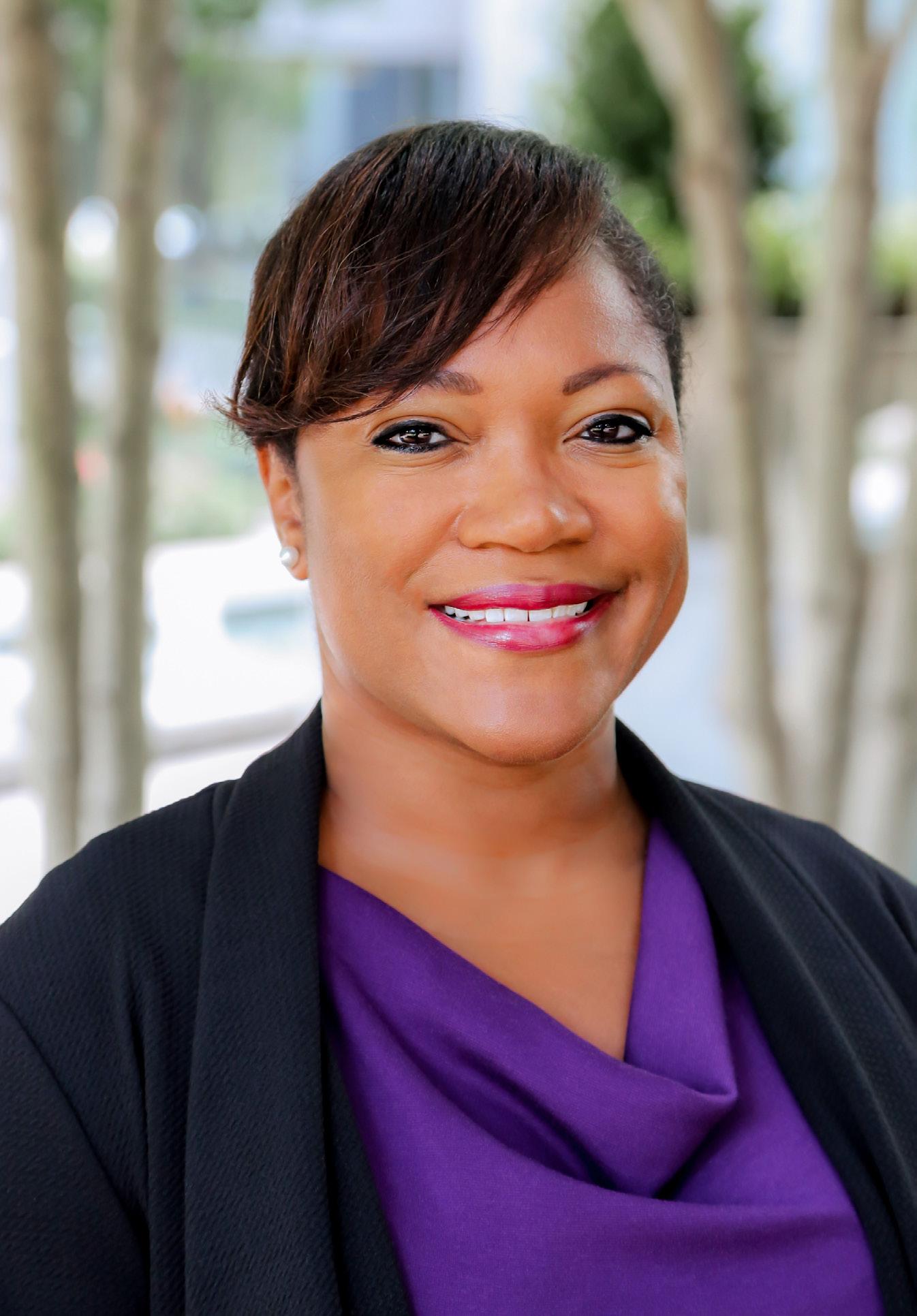
Before obtaining her JD from the Southern Methodist University Dedman School of Law, Walker spent ten years as a registered nurse, developing an early background in hospital operations and getting a feel for the clinical side of healthcare.
For Walker, her time in nursing gave her insight into the intricacies and practicalities of the healthcare business that aids her mightily in her work at USPI. “Context is key,” she says, and nursing gave her plenty of context for her work overseeing the organizations’ legal function with her team of counsels and paralegals. Walker’s understanding of the practical applications of her work in legal heavily informs her strategy at USPI.
Walker says that a key trait she learned during her time as a nurse was empathy—stepping into the shoes of the patients and their families to provide adequate care. In hindsight, she sees that her nursing experience has allowed her to understand the real impact that decisions from leadership can have on healthcare professionals. “When you’re changing a policy or practice, it’s important to know how it’ll ultimately be carried out,” Walker notes.
For instance, as USPI builds out, Walker is consistently mindful of how these developments will serve not just patients but the healthcare workers responsible for them. Her experience as a frontline healthcare worker has proven important in navigating USPI’s “constantly expanding” collection of developments, as the company continues its persistent search for opportunities to grow its business. USPI recently acquired hospital systems in the Oklahoma and Florida markets and is currently looking to acquire new urgent care facilities and new
“Legal analysis based just on established facts is 100 percent accurate but 1,000 percent impractical.”
Daphne Walker Chief Legal Officer USPI
ground-up construction as well, all of which falls under Walker’s purview.
Over the course of Walker’s decades of experience, she’s learned quite a few lessons that help inform not just her current work at USPI but her career development and the maintenance of her skills as chief legal officer.
In order to succeed, Walker cautions, companies need to grow and adapt to external market forces. One big lesson she learned early at USPI was that “there’s always something new to learn; you have to constantly reexamine your thinking in certain areas.” This adaptation extends beyond the constantly evolving nature of healthcare law to the ways that one provides guidance to administrators and partners.
Much of this attentiveness and comprehensive consideration has to do with the fluctuations in healthcare law that happen on a recurring basis, and even the ways in which individual stakeholders interpret those laws. “The law’s not always black and white,” she says. The actual enforcement of a given law depends heavily on the eye of the beholder.

In other words, healthcare law is similar to a traffic light that has just turned yellow. When we see a yellow traffic light ahead of us, do we slow down and prepare to stop or speed up to beat it? With regard to healthcare law, it’s roughly the same concept. Stakeholders have to make sure everyone has the same understanding of the terms and conditions involved.
Having been on both sides of healthcare transactions, Walker has learned to value the understanding of the psychology behind external counsel. “When you’re giving advice as outside counsel, it’s different than being inside and knowing the full thing,” she explains. Knowing all the information about a
transaction will always lead to a better result, something she understands now in her in-house role at USPI.
Walker also stresses the need to avoid working in a vacuum—understanding how her immediate work fits within the broader scope of state and federal healthcare law as well as the performance of the healthcare market. Crucial to this perspective is understanding the difference between fact and practicality: “Legal analysis based just on established facts is 100 percent accurate but 1,000 percent impractical,” notes Walker. To succeed, external counsel need a more holistic understanding of how their work impacts the organization and its various stakeholders.
Hand in hand with gathering the context behind a project comes aptly relaying the information once it’s collected. While it may seem obvious, Walker stresses the importance of communication more than any other strategy. “Communication is just as important as we always thought it was,” she says. “I’ve seen times where our failure to communicate as a department has resulted in confusion or misinterpretation across our portfolio.”
Good, solid communication works in conjunction with understanding context and adapting to the market. Whether she is working with her internal team or her outside counsel, ensuring everyone knows the facts behind the latest case and has the tools necessary to carry out the appropriate strategy goes a long way in securing success for the team and the company.
For Walker, the three aforementioned lessons coalesce into a broader, more flexible understanding of her duties as chief legal officer. As USPI continues its expansion into bigger and more dynamic healthcare markets, Walker hopes to continue growing, learning, and evolving to best serve the needs of the company and its many patients. AHL
After changing jobs just twice in his entire career, David Royster is making a fresh start as general counsel of medical device company BIOTRONIK
David Royster knows the value of patience. Though he has worked as an attorney for more than twenty years now, Royster has changed jobs just two times in his entire life. That career path has taught Royster to play the long game. More so, it’s taught him to play the game his way.
In the three years following his graduation from Washington University in St. Louis School of Law, Royster worked as an associate on the litigation team at Baker & Daniels. And in January 2000, when he joined the legal department at Zimmer Holdings as a staff attorney, it would be the start of an era.
“I was there for seventeen years,” Royster says. “I know that other people would try to move through the various levels of in-house practice as quick as they could by changing jobs and changing companies, but that just wasn’t my chosen path. I knew I had a long horizon to get wherever I wanted to go—it was a marathon, not a sprint.”
To Royster’s mind, his long tenure at Zimmer is what made him a perfect candidate for the general counsel position at BIOTRONIK, a Germany-based medical device company that specializes in innovative cardiovascular and endovascular solutions.
“Staying so long allowed me to get to know the company inside and out, and to grow as the company grew,” Royster notes. “And I was never interested in specialization. I definitely have my strengths in terms of legal practice areas, but I wanted to take advantage of all opportunities to learn and sometimes volunteered without even being asked to be legal support for a new project. It is rare that opportunities open up in in-house legal practice, so you have to take them as you see them, even if you don’t think they’re a natural fit.”
Royster’s experience working in many different practice areas and in-depth knowledge of company operations are invaluable for any general counsel role but especially one at a smaller company like BIOTRONIK, he says. “They needed a general counsel with a lot of experience because the legal department here is fairly small,” the GC remarks. “And for me, it
was an opportunity to have a fresh start and to come in and profoundly shape a fairly undeveloped legal function—to really make a mark on something.”
And now, less than a year after joining the company, Royster believes he is well on his way to making that mark. The legal department at BIOTRONIK is responsible for ensuring that the company grows their sales and market shares in a compliant manner—a task made all the more challenging by the intense regulations associated with the medical device industry.
Essentially, the legal department is focused on “getting obstacles out of the way of the business” and making sure it doesn’t get bogged down in unnecessary litigation or investigations. “The company needs to be able to focus just on its products, which are excellent,” Royster offers.
But when Royster first stepped up to helm the legal department, it wasn’t perfectly positioned to deliver on all that was expected. “There hadn’t been a general counsel for quite a while when I got here, so the department wasn’t in a position
where it could make much of a difference and steer the company at a higher level,” Royster says.
But ever since his arrival, Royster has committed to cultivating relationships with internal leaders at the company and changing how other senior managers perceive the legal department as a whole. “I think I’ve made sure that the legal department is going to have a new prominence and highly visible place in the organization,” the GC says. “And that has fairly rapidly changed the culture and outlook of the legal department here.”
Comparing his own outlook to his mind-set in the early days of his career, Royster says that things have completely changed. “I used to be constantly worried about getting the next promotion, taking the next step, and competing with my colleagues—just getting caught up in the game,” he recalls. “But that wasn’t my natural habitat, and I wish I’d just ignored all the noise and done things the way that fit with my personality and goals. Do your own thing. Have your own journey. And be patient with it—because it’s a long haul.” AHL
Hughes Hubbard & Reed LLP • hugheshubbard.com General“For me, [coming to BIOTRONIK] was an opportunity to have a fresh start and to come in and profoundly shape a fairly undeveloped legal function—to really make a mark on something.”
National, and even global, forces have an unmistakable impact on an executive’s work. Whether it’s a legislative change or an industry-disrupting technological breakthrough, executives must constantly adapt their business strategies to keep their company thriving.
34. James McCurley
38. Debbie Dizon Lauber
42. William Dodero
48. Alexandra Walsh, Sean Eskovitz
52. Alejandro Badia
56. Matthew Hawkins
James McCurley has risen at Community Medical Centers by focusing on reflection and professional growth
Compared to all the financial analysts, day traders, and entrepreneurs that the Great Recession of 2008 put out of business, it conversely sent James McCurley headfirst into a financial career. McCurley was a physics major and a senior at California State University-Fresno with no real idea of where his degree might take him. The recession was in full swing and he found the financial implications fascinating. “I decided to immediately go into an MBA program and that maybe I’d wind up on Wall Street because of it,” McCurley says.
It took McCurley little time to realize that the hundred-hour work weeks of Wall Street weren’t of much interest. So, when a financial analyst position
 James McCurley VP of Revenue Cycle
Community Medical Centers
James McCurley VP of Revenue Cycle
Community Medical Centers
opened at Community Medical Centers, McCurley thought it would be a good place to get his start. Since 2012, McCurley has risen through five positions in the organization and currently acts as vice president of revenue cycle. “It’s changed quite a bit here,” McCurley says. “I went from having zero people reporting to me to three, to fifty, to four hundred fifty.”
McCurley may seem young for someone in charge of the healthcare revenue cycle department, but the VP has demonstrated a capacity to build upon and grow from his experiences with a fierce level of commitment and self-motivation. Investor and entrepreneur Ray Dalio’s Principles sits on McCurley’s nightstand, and the VP says it’s a work that’s ever-present in his life. McCurley has adopted a self-reflection practice that he says takes a tremendous amount of time but has proven to be worthwhile over and over again.

“I keep a notebook where I write down almost every medium-to-big decision that I make, then go back and reflect,” McCurley says. “What was the impact? Knowing what I knew at the time, was it the right decision? I’ve created a feedback loop for myself.” The VP says that it’s not about the decision itself working out or not working out because the right decision still won’t always work out. But by reflecting on the decision itself, McCurley is able to recognize similarities in future choices and grow from those experiences either way.
The idea of a feedback loop reinforces a great deal of effort in his current role. Since taking on the document-heavy challenges of denials management—a denial prevention team headed, in part, by McCurley—he has worked to implement a departmentby-department feedback loop that highlights denials that could have been avoided and asks each department to comment on them and reflect on how to avoid them in the future.
“It’s been incredibly beneficial for the departments and for us to understand exactly what is going on,” McCurley says. Once-a-month in-person meetings help to address bigger picture topics, and each department is better equipped to reduce denial numbers in meaningful and actionable ways.
“My view of my role is to get the big ideas correct.”
As McCurley’s breadth has increased, so has his need to focus on larger business goals for the revenue cycle. “From a leadership perspective, my view of my role is to get the big ideas correct,” the VP says. “Once I’m confident in those ideas, the next step is to get buy-in from individual leaders in the revenue cycle or other operational teams.” McCurley says he places a great amount of emphasis on listening not just to those above him but the subject matter experts who work below him to make sure the right ideas are being approached the right way at the right time.
For the revenue cycle, the big ideas concern the role that the revenue cycle plays in the future of Community Medical Centers. The VP says AI and machine learning have the capabilities to fundamentally reshape how the revenue cycle operates; but he looks forward to taking those challenges on as they come.
“On the tech side of things, I think the revenue cycle will have the greatest transformation when it comes to any of the other business service lines in healthcare, as far as I can see,” McCurley says. “We have to make sure we have the experts and knowledge in place and are doing the research to best utilize our electronic medical records and create the best practices to accompany those.”
On a personal level, McCurley remains dedicated to self-improvement and self-reflection. The VP wakes up sometime before 3:30 and 4:00 in the morning and has integrated meditation into his workout regime. As McCurley’s notebooks fill, data drives his efforts, be they financial or personal, and the records indicate significant growth in both categories. AHL
Olive is excited to be exploring the possibilities for AI-powered digital employees with James McCurley at Community Medical Centers. As we work together to continue advancement of the healthcare sector with artificial intelligence and workflow automation, we look to improve efficiencies throughout the industry in terms of denials management, patient financial experiences, and analysis.


I, myself, am actually a beneficiary of the Intuitive technology. I went through a health issue a few years ago and consulted with four different surgeons. The surgeon I chose was performing my surgery with the da Vinci Surgical System.
It is a phenomenal technology that has really changed the landscape of surgery by offering a minimally invasive surgery option to many patients with technological benefits such as three-dimensional visualization, improved dexterity and range of motion, and greater precision and flexibility for improved surgeon ergonomics. In my own experience, my da Vinci surgery allowed me to recover and return to my normal life.
That’s a critical reason why I, and so many other Intuitive employees, believe in our products and are incredibly passionate about our mission. The opportunity to be part of a company that strives to make surgery more effective, less invasive, and easier on all involved is one that really resonates with our employees. In the world of ever-changing tech and the latest and greatest app or gadget, there is great meaning in doing work whose focus is on enabling physicians to improve human health. I’m just so proud to be part of a company that has the potential of benefiting patients and their loved ones so much.
But there’s another thing that brought me to Intuitive—the unique, hybrid role I enjoy as head of both global employment law and employee relations. Those two areas are typically distinct and have different strategic objectives—one is obviously legal, and the other has a broader focus on the day-to-day employee relationships with the company and resolution strategies over workplace issues. This role is actually the perfect marriage of my traditional employment law background and HR experience.
I’ve been practicing law for twenty years, specializing in employment law, labor, and corporate compliance— my first internship was with the Equal Employment
Debbie Dizon Lauber describes her journey from being a surgical patient to being Intuitive’s go-to person for both employment law and employee relations
Opportunity Commission a few years following Supreme Court Justice Clarence Thomas’s nomination hearings, which centered on claims of sexual harassment. The ’90s were also a time where there was an explosion of employment law legislation. I’m really fortunate that in my first in-house counsel position with 24 Hour Fitness, during a leadership transition, I had an opportunity to hold a dual role as head of employment law and compliance and chief HR officer. That was pivotal for me and enlarged my perspective on the work I do.
My work at Intuitive is not focused solely on minimizing legal exposure. At Intuitive, I have an opportunity to affect how an employee views their role, their level of engagement with the company overall, and to help foster a highperformance culture.
Traditionally, HR has focused on the generic employee life cycle—recruitment, onboarding, development, retention, and exit from the company. But a more meaningful, modern concept
Intuitive’s da Vinci Surgical System works in tandem with a surgeon to perform precise, minimally invasive procedures. Intuitive describes the robotic-assisted solution as moving like a human hand, but with a greater range of motion. It even delivers high-definition, 3D images of the surgical area to help doctors operate accurately through only one or two small incisions.

that has an employee relations focus is the idea of “moments that matter,” where you look at people holistically and focus on the individualized employee experience, recognizing that personal and professional lives intersect and affect the other. “Moments that matter” might include an employee’s first day of work, when an employee has a baby, undergoes their first performance review, or learns they are suffering from a health issue. A person isn’t their title. People are individuals and not just workers. Everyone has a tremendous amount going on in his or her personal life, and the “moments that matter” are when and how your employer and your manager show up for you. That is what will define your employee experience.
In my role at Intuitive, I help ensure not only that we are complying with our legal obligations but also that we enact policies that enhance the employee experience. For example, if an employee needs time off to care for a sick family member, we need to consider not only
our legal obligations to grant leave but also the types of policies we can reasonably offer to support our employees and promote work/life balance without unduly sacrificing either our business needs or our employees’ personal lives. That’s what I love about employee relations—it’s about enabling employee engagement, rehabilitating trust, and supporting business productivity, which ultimately contributes to innovation and positively impacts the bottom line.
When I interviewed with Intuitive, one of the things that drew me was the sense that the company was already doing the right thing and was beyond reproach in terms of its ethical obligations. I wasn’t going to be fixing systemic problems and trying to change a flawed culture but joining a mission-driven company with core values deeply ingrained in its DNA and a strong, ethical infrastructure already in place.
And now we’re using that base to expand. In the last year, we had significant growth in our employee population, and we anticipate that trend will continue. And as the company is focusing more on global expansion, my role as head of employment law and employee relations expands as well.
That growth is due to the increasing need and demand for our products not just in the United States but in Asia, Europe, and South America. We’re broadening our scope and, in addition to robotic-assisted surgery, we are also developing technologies like Ion, our endoluminal system that helps enable lung biopsy—really pushing the scope and addressing the wide diversity of healthcare needs. We are the pioneer in our industry and have only recently seen other competitors join the game. But by focusing on preserving and protecting our unique culture and continuing to live and operate with our core values as our guideposts, we’ll be able to stay competitive. AHL
At Littler, our unparalleled commitment to labor and employment law helps our clients navigate a complex business world with nuanced legal issues, building better solutions for their toughest challenges. Because at Littler, we’re fueled by ingenuity and inspired by you.
At Littler, we’re lawyers. We’re also innovators and strategists, passionate problem solvers and creative disruptors. And we’re committed to helping our clients navigate the complex world of labor and employment law by building better solutions for their toughest challenges.
Littler commends Debbie Dizon Lauber for her leadership and service to Intuitive.
VP and Assistant General Counsel William Dodero highlights the “total team effort” that drove Bayer to victory in the One A Day class action trial
By Sara Deeter
As vice president and assistant general counsel at Bayer, a multinational pharmaceutical and life sciences company known for popular products such as Aleve and Claritin, Dodero explains the team-focused strategies and mind-set that led the company to victory in the recent One A Day class action trial.
A true Bayer veteran, Dodero has had the pharmaceutical giant as a client his entire professional life. After handling various matters for the company as an attorney at O’Connor, Cohn, Dillon & Barr, Dodero worked his way up through senior positions at both Bayer Corporation and Bayer Healthcare.
Throughout it all, Dodero says, one of the primary things that has drawn him to the company and kept him fueled in his everyday work is “Bayer’s commitment to its mission: science for a better life, for the benefit of customers, consumers, and patients across all divisions.”
“Whether it’s the label on a product or the advertising or communications for a product, we take very special care to make sure that we are scientifically accurate, balanced, and truthful in all that we say about our products,” the VP describes. “Bayer has a long tradition and history; it’s a company that people trust. We recognize and honor that—we have legal, medical, and regulatory teams that scrutinize products, how we position them in the market, and how we communicate about them before litigation ever moves forward.”
That intense product scrutiny and dedication to compliance is what gave Bayer such confidence in the One
A Day class action trial, Dodero says. In many, if not most litigation cases, someone has done something wrong; but Bayer knew that their teams had done everything they were supposed to.
The plaintiffs in the One A Day case claimed that Bayer had falsely advertised the health benefits of its multivitamins. But as Dodero points out, those claims comported with what the company is allowed to say under the legal framework for dietary supplements. “And, of course, we would take offense to false product claims,” he emphasizes. “We are a business that takes pride in being truthful, open, and transparent to our customers as well as in supplying quality, science-based products.”
And Bayer’s internal and external teams were “selfless” in their efforts to help Dodero and his team prove that fact, the VP says. Many people across the company went far above and beyond the normal scope of their jobs both to support the legal team and to coordinate the complex, interdependent components of the case. As noted by Patrick Lockwood-Taylor, regional president at Bayer Consumer Health, “It was critical for us to stand up and bring the facts about our products into the light. Thanks to the excellent team effort between our
What does it take to win a certified class action case worth upwards of $600 million? According to William Dodero, it takes an unparalleled team effort and a company dedicated wholeheartedly to its mission.Sarah Heineman Attorney Bayer
 Patrick Lockwood-Taylor Regional President Bayer Consumer Health
Patrick Lockwood-Taylor Regional President Bayer Consumer Health
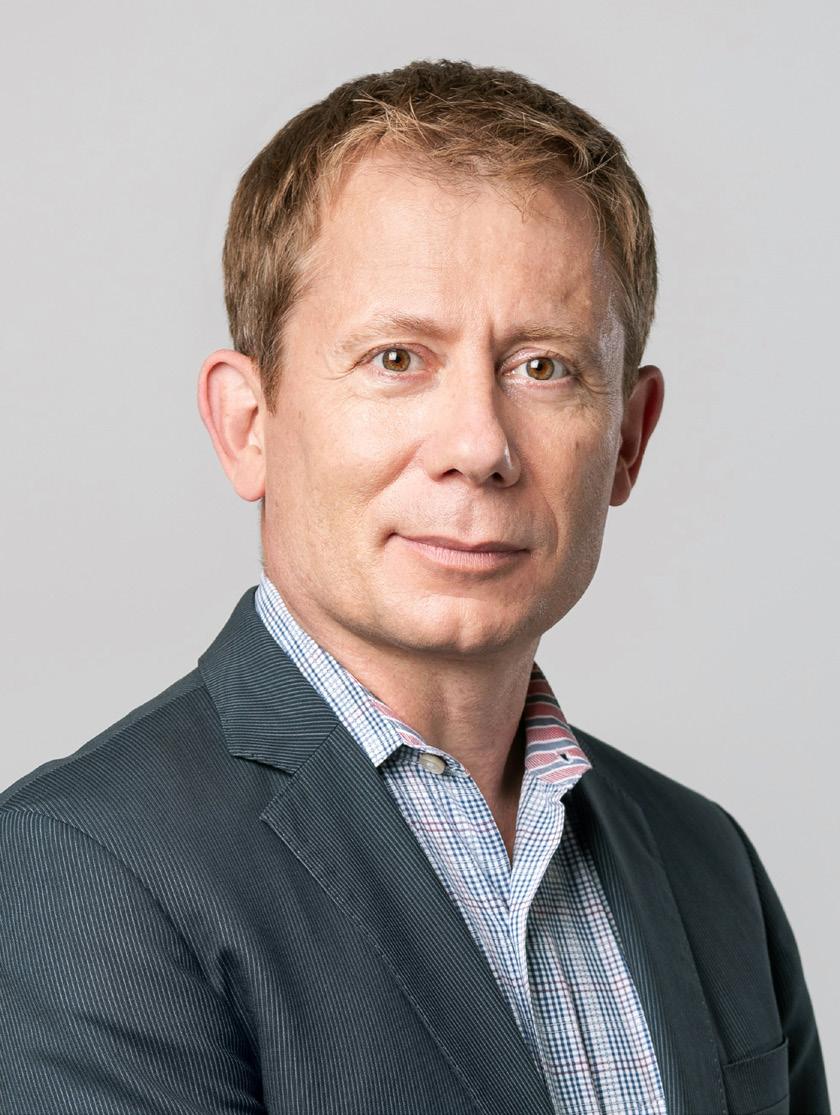
consumer health division, our legal team, and external partners, we were able to do just that.”
Sarah Heineman, the lead in-house attorney on the case, further stresses that team-centric mind-set. “We were tremendously fortunate to be working alongside the consumer health team,” she says, “as they were instrumental in providing us every piece of information we needed to prepare our strategy for this litigation—from preparing the exhibits to testing our team’s approach and advising our top-notch litigation team accordingly.”
Bayer’s internal teams did not take on the weight of the One A Day trial case by themselves, Dodero notes. “The Sidley Austin team, led by Jon Cohn, did amazing work in the discovery phase and built a great foundation for the trial, extracting key concessions from plaintiffs’ lead expert. Alex Walsh and Sean Eskovitz together with their full team at Wilkinson Walsh + Eskovitz then executed a flawless trail strategy, cross-examining the plaintiffs and their experts, as well as presenting our scientific position explained by my colleague and trial witness, Nastaran Faghihnia,” he enthuses. “It is my greatest honor to be a part of such a total team effort.”
“Everybody here is so focused on honoring our mission and the science-based foundation behind what we do—we just tried to bring that out.”
— 2019 U.S. News– Best Lawyers ® “Best Law Firms” Survey
“Bill provided incisive strategic input and extraordinary support at every step of the One A Day litigation,” says Sean Eskovitz and Alexandra Walsh, founding partners of Wilkinson Walsh + Eskovitz LLP. “Above all, Bill had the courage of his convictions to take the case to trial and let us rest on the strength of our cross-examinations without calling a single defense witness. Bill knew, based on his years of trial experience, that those were the right calls for the litigation.”
Dodero believes leading a high-performing team means giving them space to explore and take the lead in their own areas of expertise—as well as space to criticize. “I like to say around the office that, ‘I want to be told I am wrong at least three times a day,’” Dodero says. “If you tell me I’m wrong, that means we have an open line of communication that doesn’t depend on hierarchy or titles. It also means we are going to get the best of everybody’s views, and we don’t wait for disaster before we say it’s going wrong.” During the One A Day trial, Dodero says, that culture of open discussion was critical to helping him and his in-house team develop their legal strategy.
A strategy that paid off, by all accounts—the jury for the One A Day class action case spoke emphatically in favor of Bayer. But that decision, Dodero notes, was important to more than Bayer itself.
“That case could have started a cascade that called into question both our product and the entire dietary supplement industry, opening the floodgates for similar cases in future,” he says. “But we stayed true to what our products do and don’t do. Everybody here is so focused on honoring our mission and the science-based foundation behind what we do—we just tried to bring that out.” AHL
We understand that class actions are more than a short-term financial threat; they are an attack on reputation, brand quality and product identity. Clients across industries turn to Sidley for guidance in avoiding, preparing for and defending against consumer class actions.
“Bayer has a long tradition and history; it’s a company that people trust. We recognize and honor that.”

We know that trials are won by tight-knit teams of smart, innovative, and highly skilled litigators committed to delivering excellent results for their clients


Our results speak for themselves. We have successfully tried cases to juries and judges across the country, from Los Angeles and San Francisco to New York, Washington, Philadelphia, and Boston and in many other jurisdictions

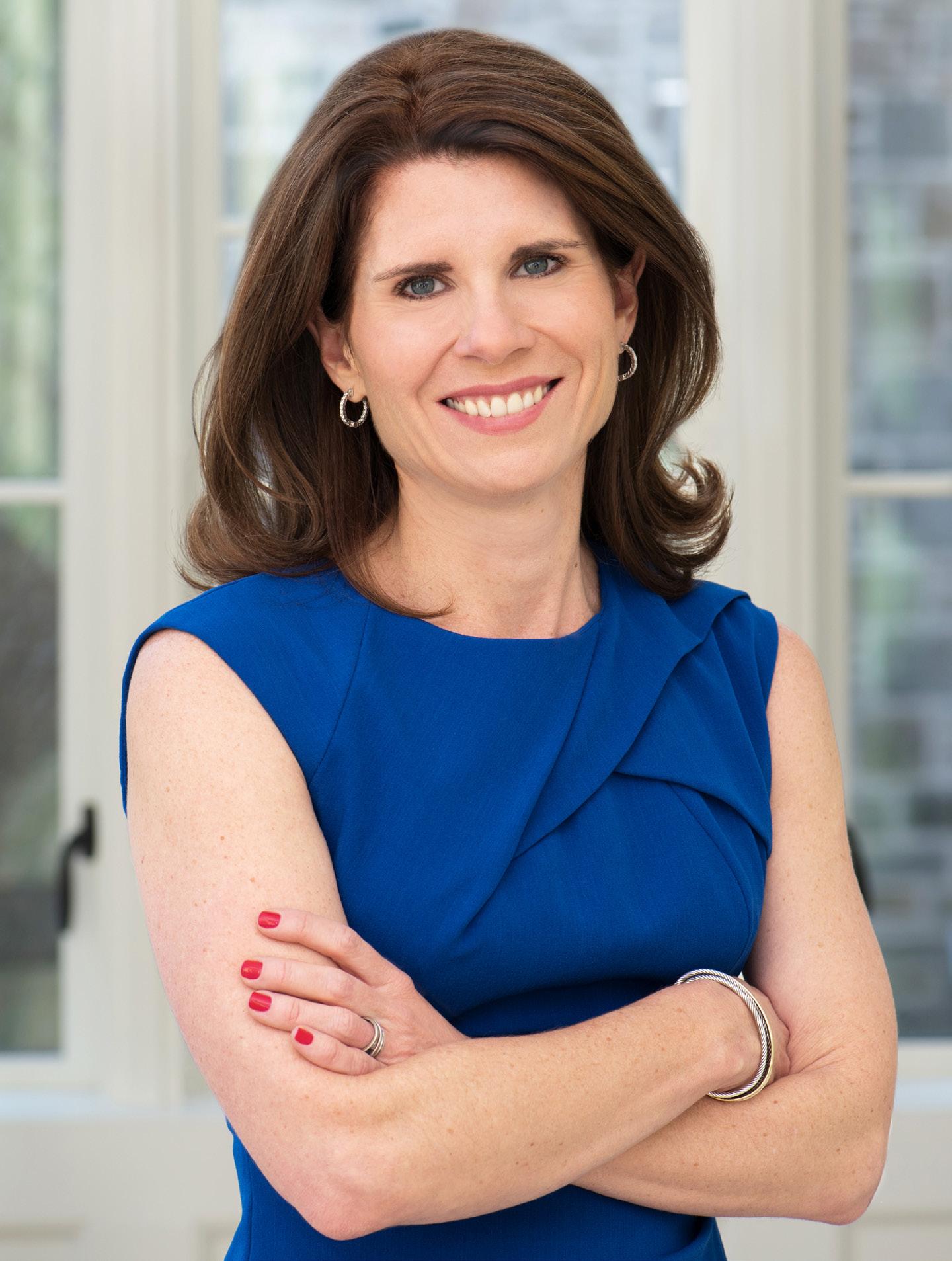 Alexandra Walsh Founding Partner Wilkinson Walsh + Eskovitz LLP
Alexandra Walsh Founding Partner Wilkinson Walsh + Eskovitz LLP
Alexandra Walsh and Sean Eskovitz, founding partners of Wilkinson Walsh + Eskovitz, explain the confidence and strategy that won pharmaceutical giant Bayer a resounding victory in its recent One A Day class action case
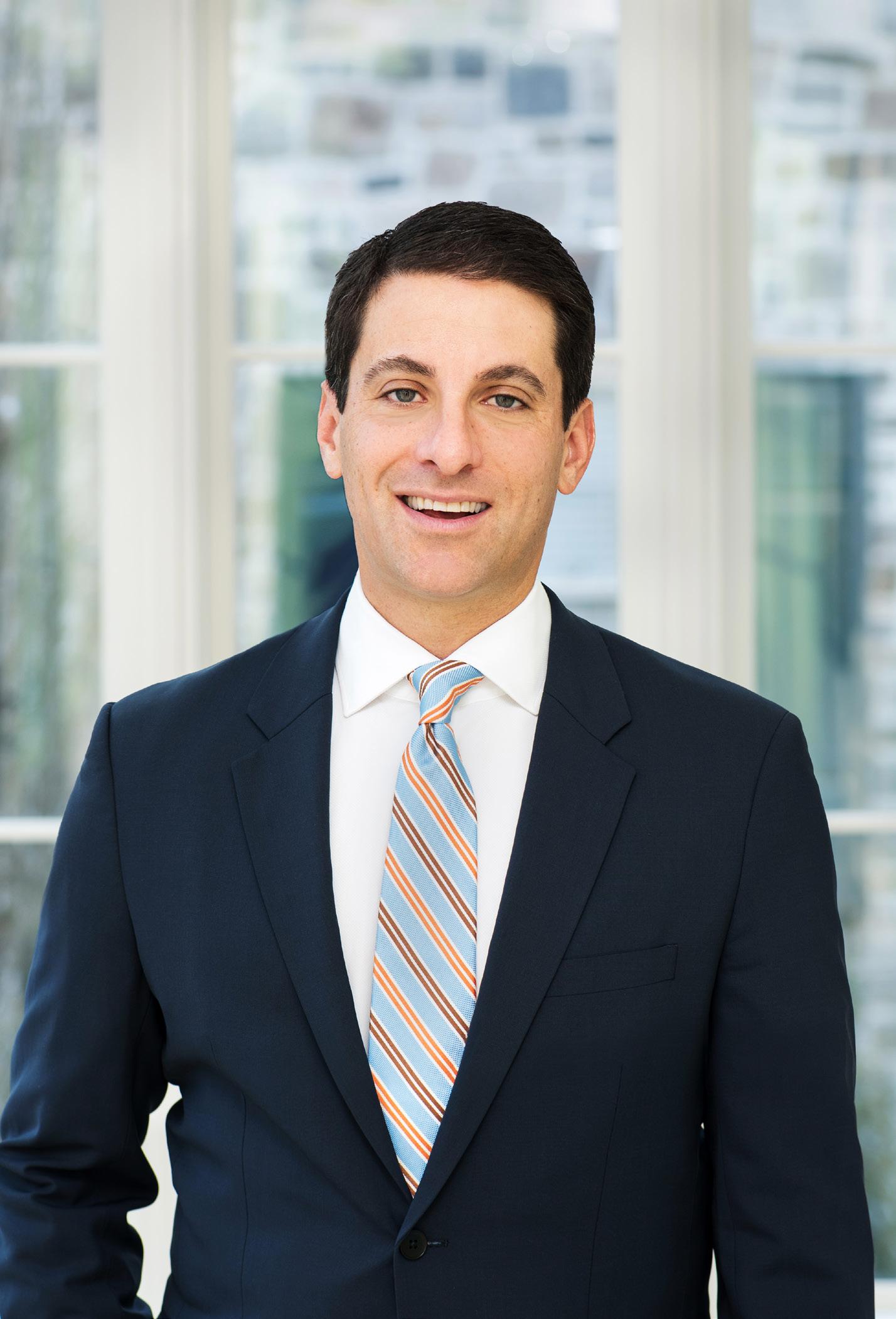 By Sara Deeter
Sean Eskovitz Founding Partner Wilkinson Walsh + Eskovitz LLP
By Sara Deeter
Sean Eskovitz Founding Partner Wilkinson Walsh + Eskovitz LLP
American Healthcare Leader recently caught up with two of the attorneys who led the defense: Alexandra Walsh and Sean Eskovitz, founding partners of Wilkinson Walsh + Eskovitz LLP (WW+E).
Wilkinson Walsh + Eskovitz was founded with the exclusive purpose of winning high-stakes trials, Eskovitz explains. He and the other founders of the firm had spent years working with top law firms across the company on a range of cases.
“But we wanted to work in a small firm with a highly talented group of colleagues who were dedicated specifically to high-stakes, high-profile trial work,” Eskovitz says. “We also wanted to focus on bringing up the next generation of trial lawyers. There’s a lot of talk about trial work drying up and becoming a dying art, but we have a deep bench of experienced trial lawyers who are filling an important need in the market.”
Now, WW+E has grown to more than forty lawyers, including a number of younger lawyers. “We’re handling cases of the same size, complexity, and significance that we were handling in our prior firms,” Eskovitz notes, “and we’re doing it in a very efficient way because the entire firm is geared towards that kind of practice.”
The One A Day class action trial was certainly high profile—and high stakes. The plaintiffs were seeking a full refund of all the money customers had paid to purchase the One A Day multivitamins over the past decade, plus penalties. This added up to hundreds of
millions of dollars in potential damages.
Essentially, Eskovitz explains, the plaintiffs were alleging that the multivitamins were marketed as being able to help promote heart health, physical energy, and immunity. But, the plaintiffs claimed, the average person gets all the vitamins and minerals they need from their diet. So, while people with grave biochemical deficiencies may benefit from taking multivitamins, the average person gets no benefit at all.
According to Walsh, one of the biggest challenges of the case was the need to break down relatively complicated biological issues and explain them to the jury in an accessible and engaging way. “I firmly believe that our job as trial lawyers—and the surest path to victory—is not to tell the jurors what the science shows,” Walsh says, “but to teach them the concepts and principles they need to understand and apply to decide the case.”
But in this case, the WW+E team chose a rather unusual teaching method. “Your natural urge in a case where plaintiffs are seeking such huge damages is to put on a massive defense and attempt to beat down every point the other side makes,” Walsh says. “But we concluded early on that this was not the right approach for the One A Day case.” Instead, she,
In February 2019, the legal industry saw a true rarity in the modern world: a consumer class action going to trial. Plaintiffs in California, New York, and Florida claimed that Bayer, a leading pharmaceutical company based in Leverkusen, Germany, had mislabeled a popular group of multivitamins called One A Day.
Eskovitz, and the rest of their team decided to focus on their cross-examination efforts. “We realized it would be more effective to use plaintiffs’ own witnesses against them,” Walsh explains. “And we had the full support of our clients, Bill Dodero and Sarah Heineman, who have tremendous trial judgment themselves, in taking this somewhat unorthodox approach.”
Eskovitz’s cross-examination of the plaintiffs’ nutrition expert was pivotal. “That cross-examination not only undermined his thesis that the average person doesn’t benefit from these vitamins in the way they’re advertised,” Eskovitz recalls, “but I was able to use that cross-examination during closing argument to establish several nutrition and science points critical to Bayer’s defense.”
Cross-examination of the plaintiffs’ nutrition expert yielded further important insights, such as the fact that the expert had told his own wife to take multivitamins even though she did not have a biochemical deficiency and that the expert’s teaching credential was only a title (he did not teach students or collect a salary).
But one of the most colorful parts of the case, Eskovitz says, was when the plaintiffs put forth a bar chart supposedly showing that every individual has different nutritional needs. “We were able to show the jury that the chart had been pulled from a Philadelphia Eagles fan page site, which compared the average heights of NFL teams,” Eskovitz recounts. “They had just changed the descriptions on the axes.”
Walsh then cross-examined the lead plaintiff representing the class. On cross, the plaintiff admitted she only recently learned about the lawsuit from her husband and purchased One A Day multivitamins once shortly before she joined the lawsuit. The plaintiff also conceded that she continued to take multivitamins and gave them to her children.
On closing, Walsh referred back to a study cited by the plaintiff’s expert as support for his opinion, which outlined the effects submariners faced when coming back to sea level. The expert argued that the submariners’ vitamin levels were very low, but they suffered no serious diseases. Walsh then used this study to pose the jury with the question: Is vitamin-deprived, submarine living the standard people should try to attain, or would most people, including the plaintiff and the expert, prefer to live a healthier life by doing things like taking a multivitamin?
After just an hour of deliberation, the jury came back with a decisive verdict—they found in Bayer’s favor on
every single count, even those they weren’t required to decide. But despite their resounding victory, Eskovitz and Walsh both emphasize the courage of conviction that it took for Bayer to even let the case go to trial. “This kind of case can take a lot of guts to try,” Walsh points out. “The number of consumers allegedly affected can be very high, and the damages can add up very quickly. It was hugely gratifying to work with Bill and Sarah, who had the courage to take that risk in order to defend their company.”
Bayer, and Dodero and Heineman personally, believed in the One A Day product and in their teams, Eskovitz echoes. “And that sends a signal,” he emphasizes. “They are not a good target for the plaintiffs’ bar because they will not simply cave at the threat of a trial. And this case underscores that these kinds of cases are winnable at trial.” AHL
“We’re handling cases of the same size and complexity and significance that we were handling in our prior firms, and we’re doing it in a very efficient way.”
Dr. Alejandro Badia of OrthoNOW has proven his effective business model—now he needs help in getting it to the national stage
By Billy Yost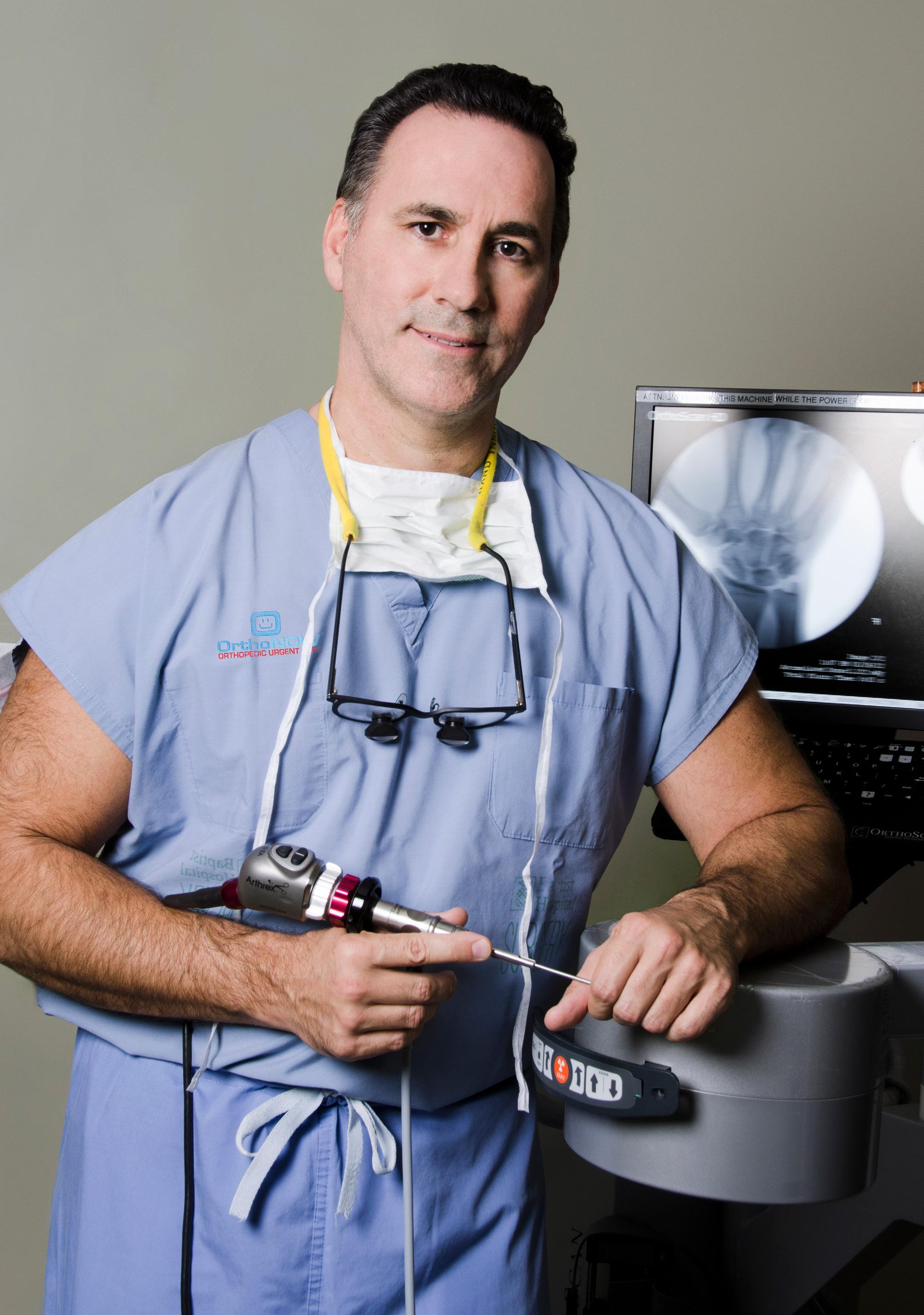 Alejandro Badia Chief Medical Officer OrthoNOW
Alejandro Badia Chief Medical Officer OrthoNOW
That journey began in 2010 when Badia’s entrepreneurial nature took the reins on a problem he figured had been ignored in healthcare for far too long. “The best analogy I can give is I went to medical school, so I learned about the eye. I could maybe do some sort of rudimentary eye exam . . . maybe,” Badia says. “But if you came to see me, a hand surgeon, about your eye, I would refer you to an ophthalmologist. For some reason, orthopedics isn’t given that level of importance.”
Patients he was seeing had sometimes seen up to four doctors before even ending up at Badia’s office. And while well-meaning, most of the diagnoses of “shoulder pain” or “ankle sprain” were completely unhelpful to both clinicians and patients. “I knew there was a better way to help the right clinicians get paid, save insurance companies money, and, most importantly, get patients the right orthopedic care right away.”
From this need, OrthoNOW was born. OrthoNOW’s system and methodology allows patients with orthopedic needs to get help right away rather than waiting in an ER while their “nonemergency” needs are pushed to the back of the line. Not to mention, these patients would receive more accurate diagnoses from doctors specialized in their unique needs.
Badia knew he had a winner on his hands. An app developed for OrthoNOW, On My Way, won the 2017 Sports Medicine Technology Awards for its integrative design, letting clinicians see and learn about a prospective patient’s injury while they’re en route to the office. The OrthoNOW concept, from top to bottom, was designed to severely disrupt a portion of healthcare in dire need of redesign.
“Dr. Badia is not only a great surgeon but also a great colleague,” says Dr. Ranjan Sachdev, CEO of Exscribe. “He is truly an innovator who cares about the comfort and well-being of his patients. To design a walk-in entity where a patient can walk in, see an orthopedic practitioner, and get X-rays and lab work all within one hour is truly the definition of forward-thinking."
There is only one problem. While everyone else sees the good that OrthoNOW can do, no one is willing to make the first move.
“Part of this is that it’s hard to change culture,” Badia says. “Many people who are reading this have the ability to help reshape healthcare, and believe me, we’ve reached out. I always hear of how much money in healthcare is on the sidelines, but no one seems willing to help us change the system.” Without the support of a major healthcare player, Badia’s self-funded venture just doesn’t have the influence or the access it needs to start making the nationwide impact he believes OrthoNOW can make.
“I’d like to make it clear that this journey has been arduous,” Doctor Alejandro Badia says, minutes or so from performing his next surgical procedure. “I started OrthoNOW because of what I saw as a deficiency, and we just haven’t been able to have the impact that I was hoping for at the beginning of this journey.”
Badia says OrthoNOW is a turnkey solution that has the capacity to make healthcare better literally overnight. “Ninety-three percent of workers’ compensation claims are orthopedic,” Badia says. “Why start with your family doctor? This is an entire step you could bypass. Not only does this cost less money, it actually improves orthopedic care.”
Part of Badia’s frustration lies in exactly what his flagship operation has been able to accomplish. “We’re not in a great location, we don’t have great signage or clientfacing visibility that we should have,” Badia says, laughing. “But you know what we do have? We have almost ten years of data analytics that demonstrate that in some months, one out of four patients require a medical procedure. We’re throwing off a lot of downstream income.”
It’s not just about the profitability of the home location. “Search our reviews,” Badia challenges. “You don’t get those kinds of comments from unhappy patients.” To drive this point, OrthoNOW’s CFO is fond of saying, “The one thing you’ve never heard in the history of
mankind is, ‘Boy, did I have a great experience in the ER last night.’”
Badia says it’s not his goal to diminish the role of the ER or urgent care clinics. He believes OrthoNOW would diminish the number of patients who are either made to wait long hours for unhelpful treatment or insufficient diagnoses. A few less people in the ER seems like it should benefit everyone.
Badia may be stymied, but he’s in no way diminished. “We could have sold off just our app alone, but that isn’t what this is about,” the surgeon says. “This is about bringing a faster and more convenient, common-sense approach to initial orthopedic assessment or care.”
If an organization with a national presence integrated the proven model Badia established, Badia is certain OrthoNOW would become a national player almost immediately. The options are limitless, but in the same vein of pharmacy chains moving into healthcare, Badia sees the potential for OrthoNOW being able to make the same significant impact on a community level. He’s already proven it. Badia just needs the chance to show it. AHL

“Ninety-three percent of workers’ compensation claims are orthopedic. Why start with your family doctor? This is an entire step you could bypass. Not only does this cost less money, it actually improves orthopedic care.”OrthoNOW has become a onestop shop for all orthopedic care needs.
“When I was in school, my favorite professor told our whole class, ‘If you want to make an impact in life, ride on a horse that can win a race worth winning,’” Matthew Hawkins, CEO at healthcare technology company Waystar, remembers. “At the time, I remember thinking that I didn’t know much about horse racing, but it was a message that really wound up influencing the rest of my life.” Hawkins says that in having the opportunity to develop and implement software that can bring effectiveness and productivity to its users, Waystar is able to positively impact healthcare—and he can’t imagine a race that’s more worth running.
Waystar’s proprietary platform was created, in essence, to help healthcare providers of any size spend less time worrying about reimbursements and more time delivering care. Hawkins understands his charge may be strong but feels that it’s necessary to say it loud and clear. “The status quo isn’t going to get
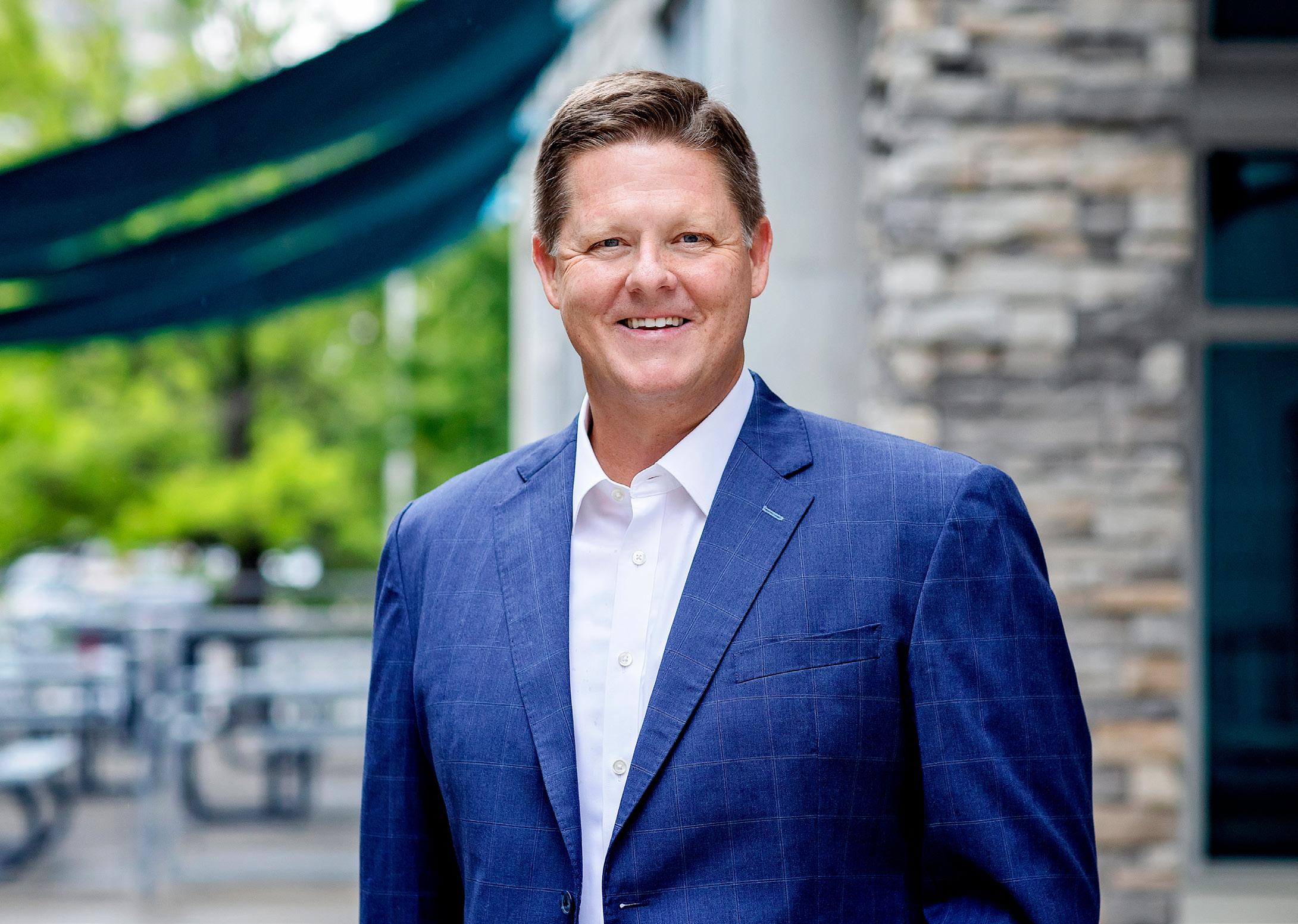
us where we need to be; incrementalism can work in some industries, but I don’t believe it is sufficient in healthcare today,” the CEO says. “We’re still spending $3 trillion on healthcare in this country with significant administrative burdens and mountains and mountains of waste, and we want to help change that.”
The Waystar platform’s cloud-based software eases the administrative burdens that help providers get paid with minimal chance of claim denial or getting bounced back from insurance companies. “Our algorithms, AI, and machine-learning capabilities allow our software to do what has previously been done manually,” Hawkins says. By automating processes like prior authorization, patients are able to receive vital care faster—and without the back-and-forth phone calls that can pile up for healthcare administrative teams. “We’re literally saving hours of time just with this one piece of our platform,” Hawkins says.
Waystar is also able to boast a 98 percent first-pass clean claim rate across its network because of machine learning technology that makes sure claims forms are coded properly, reducing the chance of insurance companies denying claims and elongating the reimbursement process. It’s an accomplishment that earned Waystar a number one ranking from KLAS. “Our competitors are getting by with a first-pass clean claim rate in the low 80 percent range, and all they’re doing is creating tons of downstream work for a claim that wasn’t submitted correctly,” Hawkins says.
Hawkins says that Waystar’s customer focus is the perfect supplement to its software solutions. “There is a reason we’re ranked first in the industry in customer support and client satisfaction. Communicating with Waystar is such a different experience than what many users have become accustomed to when using other technologies within their systems and offices,”

In an evolving healthcare landscape, you need to find more revenue without burdening your team or adding costs. Look to Waystar’s industry-leading, userfriendly technology to help you collect more across the entire revenue cycle.
Hawkins says. “You can call our client support team at any time and we will be all over it; we take a great deal of pride in that.”

The CEO’s focus on people isn’t a new development. “I learned that I get energy from working and interacting with people,” Hawkins says. “We’re a software business; we don’t rely on robots or fleets of trucks. We rely on people.” In many ways, Hawkins sees his role at Waystar as the perfect combination of his customer-minded approach and his passion for software solutions. It’s precisely why Waystar has been able to drive change from both technological and relational perspectives.
The CEO says that Waystar’s mission-driven approach is what attracted him to the company in 2017. “We are honestly crazy enough to believe that, as more people use our platform, we’re going to actually be able to transform the healthcare market and provide a benefit to future generations for decades to come,” Hawkins says. The market seems to be on board.
In July 2019, EQT and CPPIB announced their intent to acquire a majority stake in Waystar, joining Bain Capital as big believers in the company’s ability to make a significant impact on healthcare. “We see these partnerships as a continuation of our relentless goal to take care of our clients,” Hawkins says.
As Waystar continues on its path to transform healthcare, Hawkins is confident that he’s finally found the right horse to ride in a race that can’t afford not to be won. “We’re creating a great place for our team members to work and to make them a part of something so much bigger than themselves; I’m grateful just to be part of it.” AHL
“We’re still spending $3 trillion on healthcare in this country with significant administrative burdens and mountains and mountains of waste, and we want to help change that.”
Some executives feel the importance of their work because they have experienced its impact firsthand. Shaped by their mission to help others or by their personal experiences with healthcare, many executives are drawn to the industry from a sense of empathy and a desire to make a difference for others.
60. Kamil Ali-Jackson
64. Brett Boskiewicz
72. Brett Tracy
76. Marc Goldstone
82. Carly Marino-Healy
86. Jonathan Wilson
92. Estrella Parker
Chief Legal Officer Kamil Ali-Jackson uses a wealth of personal and professional experience to empower not only herself but others
By Yvette VernonKamil Ali-Jackson tells her story like she lives her life: with great passion, unbridled enthusiasm, humor, and grit.
Ali-Jackson is a beneficiary of the civil rights movement. Born in the 1950s, she grew up in and benefited from an evolving and embracing America.
“I was a product of a time in our country where we remembered how we had treated the less privileged and had a genuine desire to do something about it,” says Ali-Jackson.
Ali-Jackson was fueled by the energy of this era.
“Everyone who was a part of that time was inspired
and aspired to do something that would positively impact our country and those historically disadvantaged,” she says.
“The desire to be part of the solution is one of the reasons I decided to become a lawyer. Through law, I believed I could play a role in making not only my life better but the lives of others as well.
“As an entrepreneur who happens to be an attorney,” Ali-Jackson continues, “I have learned there are different ways to have a positive impact and help
 Kamil Ali-Jackson Cofounder, Chief Legal Officer, Chief Compliance Officer, and Corporate Secretary Aclaris Therapeutics Inc.
Kamil Ali-Jackson Cofounder, Chief Legal Officer, Chief Compliance Officer, and Corporate Secretary Aclaris Therapeutics Inc.
shape the social and moral fabric of a company I create as well as a country I want to live in.”
For many years, Ali-Jackson did things the “traditional way.” She followed her two older sisters to the Ivy League, graduating from Princeton University with a degree in politics. She followed one of those sisters into law and obtained her law degree from Harvard Law School. She worked at a big law firm and thought, “This is success. I made it.”
But life had other plans for her. Married to a lawyer, childless, and working nonstop, Ali-Jackson realized she had to do something different to have a life, a love, and a career that she actually liked rather than one she merely endured.
“In the early 1990s, I found a new job: an in-house counsel position at a global pharmaceutical company,” Ali-Jackson explains. “I was desperately seeking a better quality of life and so, I jumped. I am so glad I did.”
Ali-Jackson evolved from a litigator into an international transactional attorney for Merck & Co. Inc., a global, multi-billion-dollar pharmaceutical company. She learned about the pharmaceutical industry and acquired her business skills. “I was selected to work as a licensing executive—not an attorney— in the corporate licensing department. I acquired an appreciation for the ‘business’ side of a deal.”
Subsequently, Ali-Jackson found herself across the negotiating table from her next supervisor, who became the general counsel of Endo Pharmaceuticals Inc. She joined Endo and eventually ended up becoming a serial entrepreneur and co-founder of several small, specialty pharmaceutical companies. Two of those companies, Ception Therapeutics and Ceptaris Therapeutics, were sold to larger
 Tamara Fleming Photography
Tamara Fleming Photography
“I became more intentional and thoughtful about how I loved, parented, lived, and worked—I became fearless, not reckless.”
pharmaceutical companies. A third company, Aclaris Therapeutics Inc., became a publicly traded company in 2015 and is where Ali-Jackson currently serves as chief legal officer, chief compliance officer, and corporate secretary.

Her years as a lawyer and mother have shaped AliJackson’s leadership style and philosophy, which is to identify, acknowledge, and hire excellence; exemplify, encourage, and reward initiative and diversity of thought and experience; lead with empathy; and strive to empower all who work for her, including those who are typically “not in the room.”
The essential tenet of her leadership philosophy?
“Fear nothing and no one.”
“After my three-year-old son died in a car accident, I realized that nothing worse could happen to me,” AliJackson explains. “As a result of my only son’s death, I became more intentional and thoughtful about how I loved, parented, lived, and worked—I became fearless, not reckless. I now have a husband who supports me unconditionally and three beautiful, accomplished daughters—one of whom is a new lawyer, practicing law in California.”
On a daily basis, Ali-Jackson tries to incorporate her leadership philosophy in the workspace of her life. She diligently strives to pay attention to who is in the room when decisions that affect others are being made. She vividly remembers what it was like to not be included in the decision-making process, and that sense of empathy drives her to be more inclusive.
She encourages asking for help and asking questions. “The worst that can happen to you is someone says ‘no,’” she says. “A ‘no’ is not fatal. There is always someone else who will provide the help or answer the question.”
Ali-Jackson also believes that failure is important. “We should look at failure as a way to learn something new or as an opportunity to self-correct and avoid continuing down a path that shouldn’t be taken,” she notes.
“I strive every day to empower others with passion and grace, so that they, too, may survive and thrive,” says Ali-Jackson. “As I work with my team to develop future chief legal and compliance officers, I hope that when they attain their personal definition of success, they remember me as someone who tried to help them thrive no matter the challenges they faced, and more importantly, as someone who always had a smile on her face or a laugh on her lips.” AHL
As senior managing counsel of litigation at Cigna, Brett Boskiewicz employs both his broad-ranging legal skills and a proactive litigation approach in service of the company’s mission
By Sara Deeter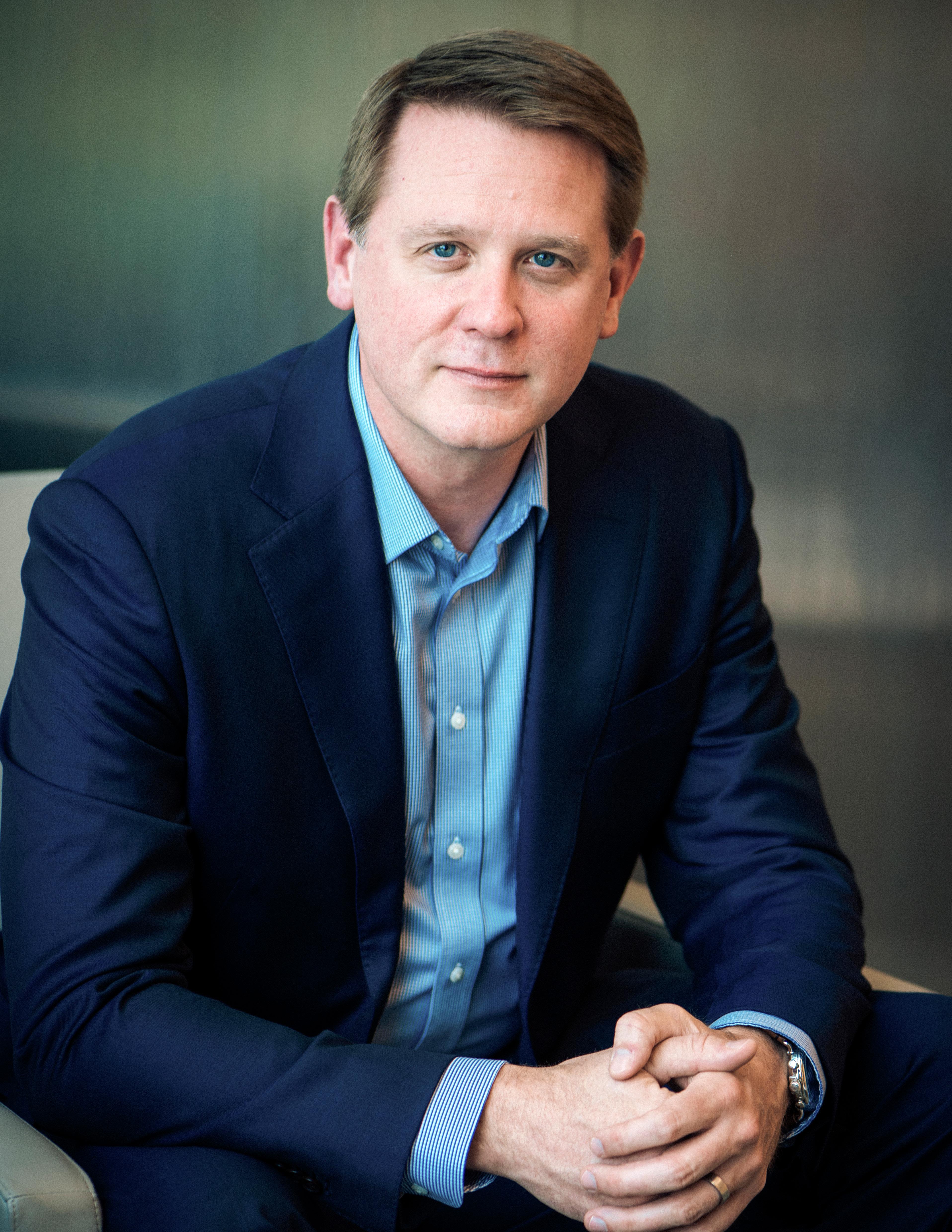 Sherry Sutton Photography
Sherry Sutton Photography
his
More than four years ago, when a friend reached out to Boskiewicz about an opportunity with Cigna, Boskiewicz was intrigued by the challenges and learning opportunities available at the company. “And when I interviewed and learned more about Cigna’s purpose and culture and saw the quality of the legal team, particularly in litigation, I was very excited about the opportunity to join,” he recalls.
Though Boskiewicz had cultivated a solid foundation in a broad range of legal matters before coming to Cigna, his introduction to the company entailed a bit of a learning curve. “There’s a steep learning curve coming into a company of this size and complexity. You can hit the ground running, but you're going to be running for a while,” he says.
Boskiewicz doesn't regret having “run for a while,” though. “Someone told me when I started that it would take about three years to feel like I have my feet firmly underneath me,” he says. “That was great advice because it allowed me to have patience with myself as
I learned as much as I possibly could about Cigna and the people across the enterprise who live Cigna’s mission every day.”
Naturally, Boskiewicz's patience paid off. In his first role as counsel, he worked on mostly average-sized litigation matters involving Cigna’s core operations and provided legal support to the company's claims resolution unit and service operations teams. Working with those teams gave him great exposure to how Cigna’s operations function and the various services Cigna provides, Boskiewicz says. “Many people on those teams have been with the company a long time. Those people have so much knowledge, experience, and perspective, and were very gracious with their time and willing to teach me how things were done and why they were done that way.”
Boskiewicz credits his rise through the company to that support and the many opportunities he received to learn about the company. But one experience in particular has stayed with him. Not long after he joined Cigna,
At Cigna, a global health service company whose mission is to improve the health, well-being, and peace of mind of those it serves, Brett Boskiewicz feels part of something bigger. Cigna “does things differently,” he says, and as senior managing counsel on the litigation team, Boskiewicz keeps the company’s customer-centric mission at the forefront of
work.
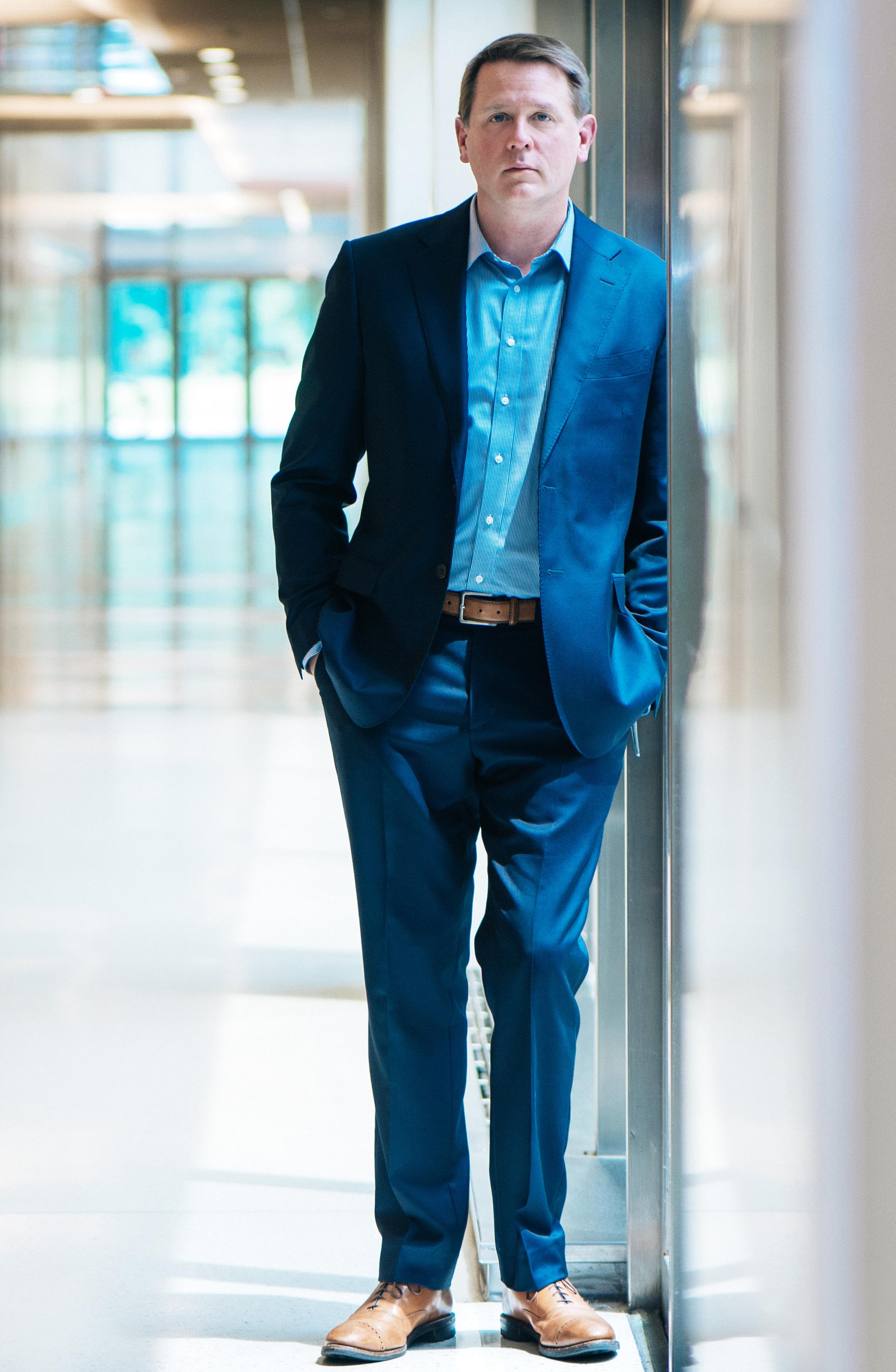
sense of collaboration that Boskiewicz says defines
he visited one of Cigna’s customer service operations facilities and spent time with the employees who help its customers every day.
“These people are typically the first point of contact for our customers when they need help or have questions about their healthcare benefits,” Boskiewicz says. “I sat in on their phone calls with customers, listened to how they responded to questions—often going above and beyond the questions asked, and felt how much they really cared about helping each customer. I heard many customer stories that day. I saw our employees demonstrate great empathy for our customers and a true desire to help them through any circumstance. They really personify and live Cigna’s mission every day.”
It is that experience, and Cigna’s employees and customers, that fuels Boskiewicz in his current role as senior managing counsel. “I keep Cigna’s purpose and our customers' needs in the front of my mind in everything I do. I want to make sure that we do the right
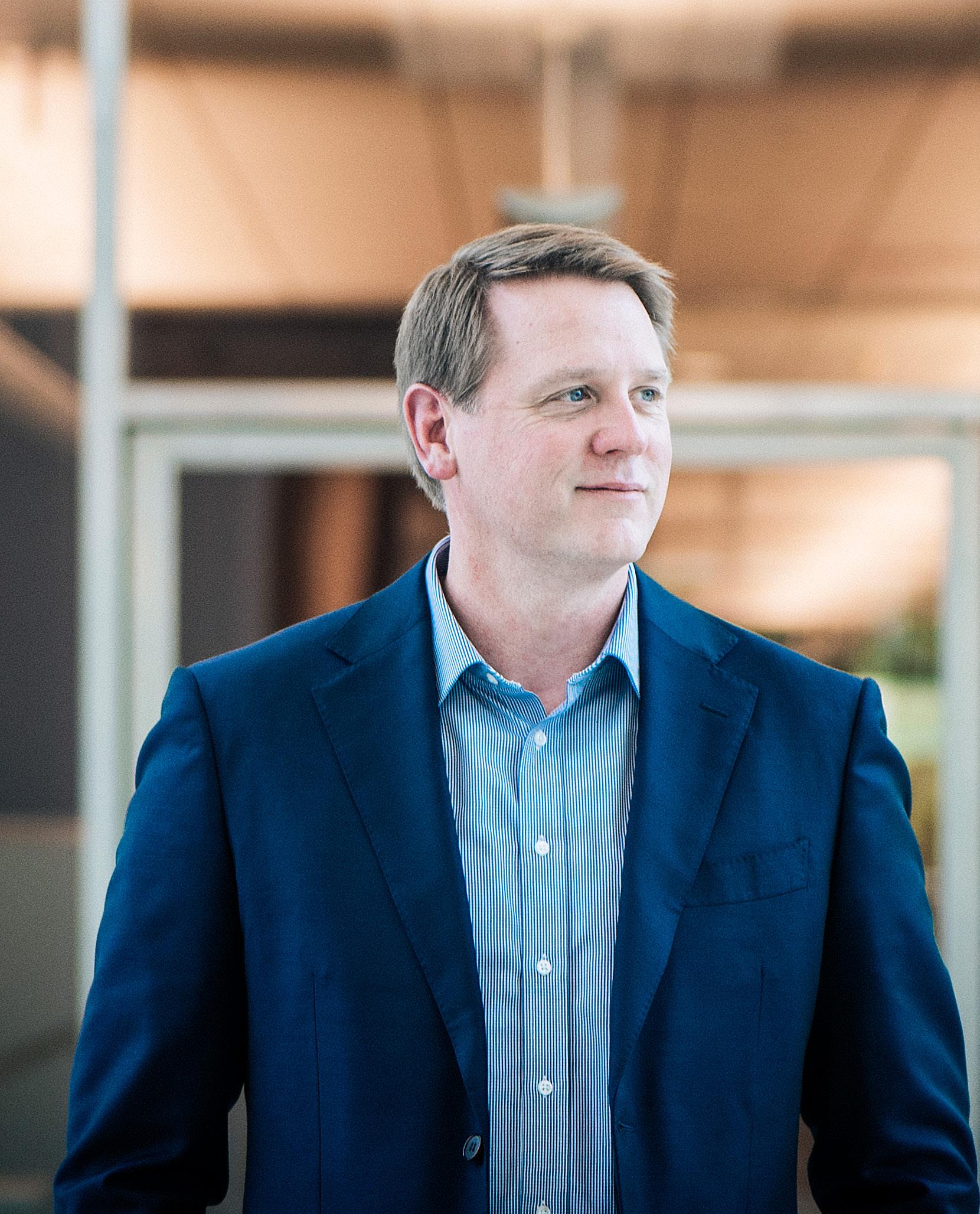 Legal Volunteer Program (CLVP), members of the legal
the
Legal Volunteer Program (CLVP), members of the legal
the
Robinson+Cole is proud to partner with Cigna in its mission as a global health services company dedicated to promoting the health and wellbeing of the people it serves.
We salute the leadership of Brett Boskiewicz and his contributions to Cigna’s mission.
thing and focus on achieving the right result for Cigna, our customers, our clients, and our provider partners in every matter.”
“Brett is a great litigator because he combines his strong legal skill and deep knowledge of the industry with outstanding judgment,” Josh Simon, partner at Kirkland & Ellis Litigation, says of his colleague. “He always looks beyond the crisis of the day to see the big picture, and he is particularly adept at using lessons learned from litigation to improve the business. He is a pleasure to work with.”
In the legal department at Cigna, Boskiewicz and his litigation colleagues take a rather unusual approach to getting to “the right thing.”
“For many larger companies, litigation is reactive— defending litigation brought against the company—and is usually handled somewhat passively, following a more typical, formulaic litigation path,” he explains. “We do things differently. Our team is highly engaged from the


We practice law differently. Our name carries high expectations for driven, resourceful, and credible execution for clients. Gibbons’ award-winning talent has been our foundation since inception.
The Gibbons Healthcare Team
. ERISA and Health Benefit Plan Litigation

. Healthcare Fraud and Abuse
. Network Disputes
. Regulatory Counseling
. Privacy Counseling
. Mergers, Affiliations, and Other Corporate Transactions

. Nonprofit Issues
. Outside General Counsel
. Government Affairs Counsel
. Hospital Systems Representation
. Physician Practice Representation
. Home Health and Hospice Agency Representation
. Reimbursement Matters
gibbonslaw.com
NJ NY PA DE DC FL
Gibbons P.C. is headquartered at One Gateway Center, Newark, New Jersey 07102.
Results may vary depending on your particular facts and legal circumstances.
“There’s a steep learning curve coming into a company of this size and complexity. You can hit the ground running, but you’re going to be running for a while.”
beginning and proactively collects and evaluates information as soon as possible. This allows us to develop our strategy early in a case, provide informed recommendations to our stakeholders, and drive any changes that might be necessary.”
In other words, Boskiewicz and his team don't manage litigation in the traditional sense. But since Cigna itself is known as an innovator within the healthcare space, the approach is quite fitting. “We develop and direct the litigation strategy consistent with Cigna’s values and mission and, more importantly, ensure that potential risks are appropriately addressed—often before the litigation matter has concluded,” Boskiewicz explains.
Cigna’s unique, differentiating approach in integrating medical, pharmacy, and behavioral health benefits focuses the coordination of care around the customer’s “whole person” health needs—in terms of both body and mind. “Our combination with Express Scripts has strengthened that approach and enhanced our ability to deliver personalized and affordable services to our customers,” Boskiewicz says. “It is an exciting time to be part of Cigna. I look forward to seeing what the future holds.” AHL
Morgan Lewis :“Brett is the kind of in-house healthcare litigator with whom Morgan Lewis relishes partnering. He combines a trial lawyer’s mentality with a goal-oriented approach and never loses sight of the big picture. He brings outside counsel 'under the tent' and functions as a natural extension of the Morgan Lewis team representing Cigna.”
Robinson & Cole LLP ’s extensive industry knowledge and experience allows us to provide creative, sophisticated, and practical legal solutions to the challenges faced by our healthcare services clients. We are proud to be part of Cigna’s trusted network. Visit rc.com.
Hinshaw congratulates Brett Boskiewicz—Brian W. Shaffer, Partner
“I keep Cigna's purpose and our customers’ needs in the front of my mind in everything I do. I want to make sure that we do the right thing and focus on achieving the right result for Cigna, our customers, our clients, and our provider partners in every matter.”

We are proud to support healthcare industry innovators like Cigna and its senior counsel, Brett Boskiewicz. Together we strive to provide guidance to healthcare companies and related stakeholders as they navigate myriad issues resulting from the ever-shifting healthcare landscape.

Carilion Clinic’s Brett Tracy has had a second chance at life—and he’s not taking it for granted as he takes over as VP of revenue cycle
Brett Tracy has an “insatiable drive” to accomplish, learn, and improve. Part of that drive he attributes to his competitive nature and his many years as a football player. But the other part, Tracy says, goes back decades—to when he suffered an aneurysm. “Only two people before me recovered from the type of aneurysm I had, and one of those people didn’t fully recover,” Tracy says. “So, having made a full recovery, I view all this as somewhat of a second chance.”
And Tracy isn’t letting his second chance go to waste. As VP of revenue cycle at Carilion Clinic, this new drive translates into a desire to support his
teams, build upon current knowledge and skill sets, and seek opportunities for continuous quality improvement. Never satisfied with what he has done that day, Tracy is convinced that both he and the team can “always be doing something better” and can look for creative strategies to meet patient needs.
In previous positions, Tracy has been a part of teams that focused on process improvement, waste reduction, and organization. “My goal is to build upon those past experiences to support all levels of staff within the revenue cycle and to be creative in collaborating with clinical departments and patients,” he says.
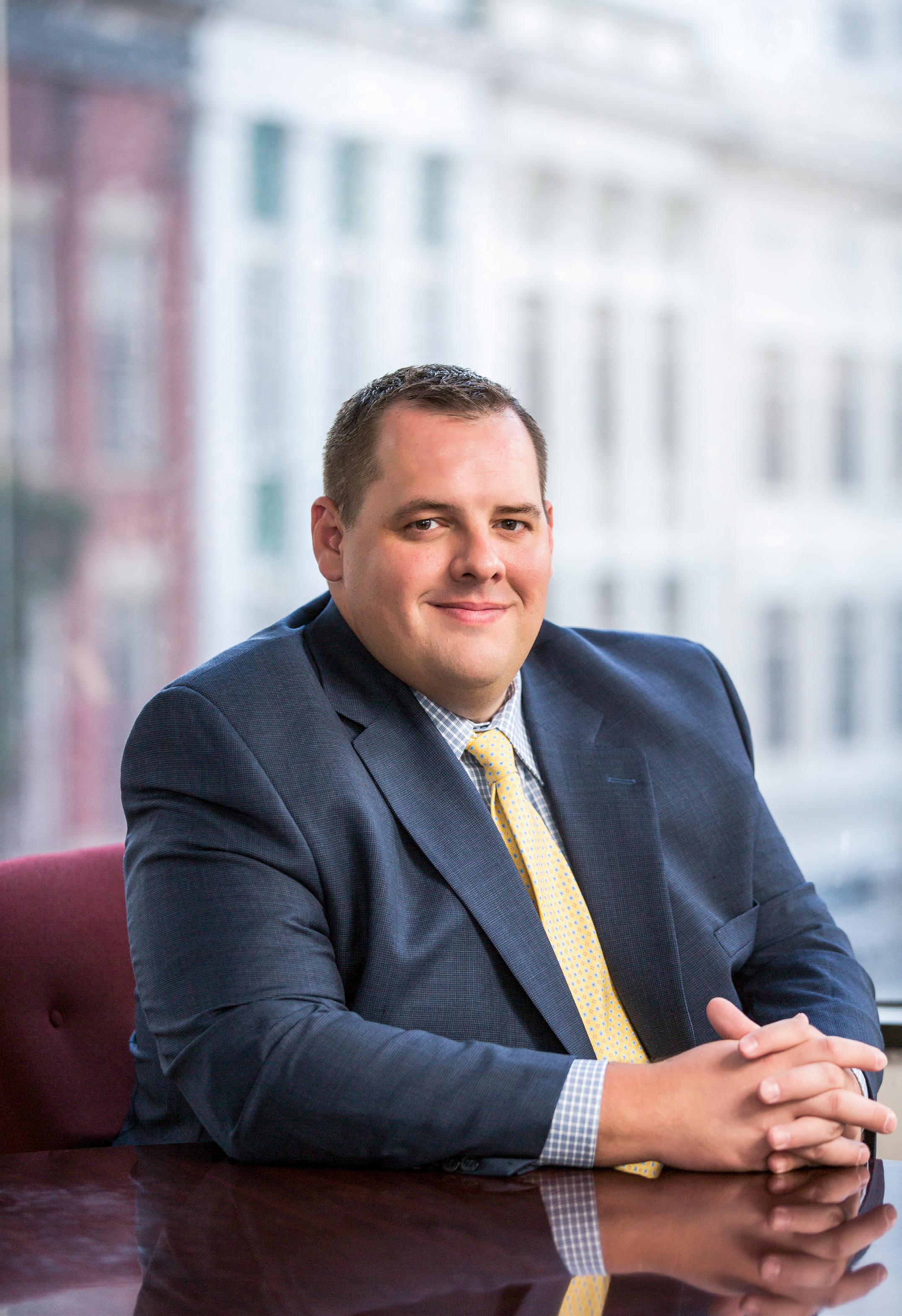
According to Tracy, there are more than seven hundred revenue cycle employees, more than fifty component teams, and an astounding diversity of age and experience across those various teams. Some employees are in their early twenties, and others are in their early seventies. Tracy strives to not only connect with each individual generation but also to bring the generations together.
“We try to have a seven-month window before an employee’s retirement where they can work alongside the person who is succeeding them,” Tracy says. “It helps to show that people approaching retirement are not being marginalized, that we—and our younger employees—value their contributions and knowledge.”
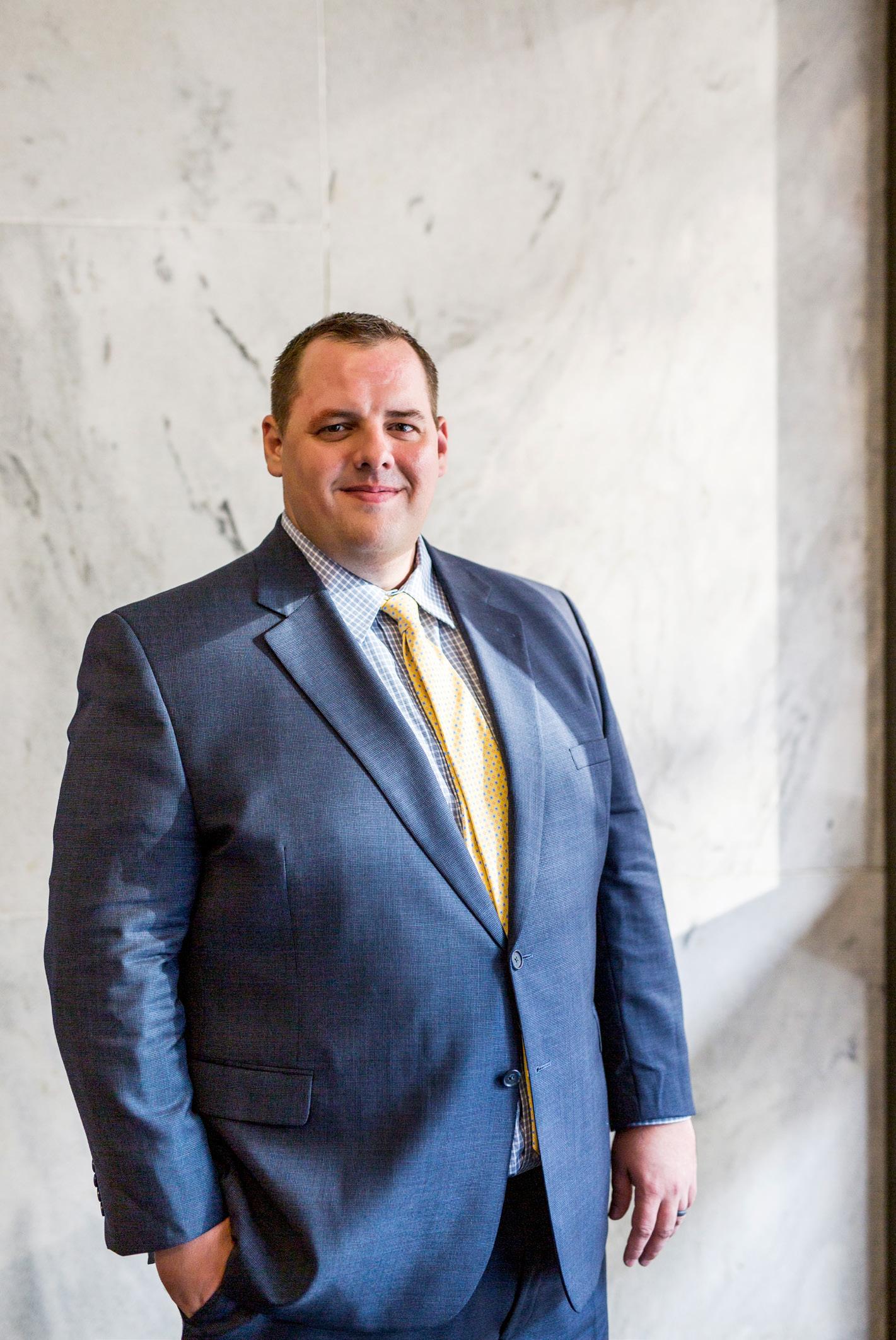
“There’s always opportunity to improve and create avenues for the organization to pursue other things—things that can help patients and provide a foundation for future growth.”
By all accounts, Tracy is delivering on that promise. In recognition of the issues surrounding patient affordability and access to care opportunities, Tracy and his team are looking to use technology to improve Carilion’s patient education and engagement.

“Almost 50 percent of patients prefer not to talk to a human when they’re dealing with customer service,” Tracy remarks. “They’d rather be able to find the information on the company’s website or email someone about the issue. I’d like to establish a chat function that solves patients’ needs and is also able to explain the financial side of things—it could tell a patient how much it costs for a mammogram, for example.”
Tracy is also working on developing videos to explain what happens when an individual receives care through Carilion. “When a patient gets their bill, they don’t always know what it means just by looking at it,” the VP points out. “So our goal is to develop tools for educational videos and put a link on patient statements as well as on our website and in patients’ rooms that can be leveraged to really explain things.”
Tracy also acknowledges that transparency about hospital’s pricing tends to be a big issue among patients. Unless you’re a medical professional, he explains, it’s often difficult to understand the charges. That is why Tracy aims to help Carilion develop “self-service patient estimates where a patient can put in their information and get an immediate calculation of how much their procedure would cost, based on their insurance and benefits utilization.”
Tracy emphasizes that the revenue cycle department already does a fantastic job in addressing these areas of concern. “But,” Tracy contends, “there’s always opportunity to improve and create avenues for the organization to pursue other things—things that can help patients and provide a foundation for future growth for the organization.” AHL
As SVP and GC at Prime Healthcare, Marc Goldstone wants his team to understand that knowledge and appreciation of both healthcare and the law is essential to the efficient delivery of highquality, effective healthcare
By Sara DeeterMarc Goldstone has some unusual credits to his name. As senior vice president and general counsel at Prime Healthcare, he has helped advance the operational efficiency of nearly fifty different hospitals with forty thousand employees and physicians based in fourteen states. But Goldstone has also saved lives, delivered babies, and even pulled a drowning infant from a creek on an early Christmas morning.
As a paramedic turned attorney, Goldstone has used his firsthand knowledge of the healthcare system to transform the legal department at Prime into a team that truly serves the needs of staff, clinicians, and patients alike.
After graduating from the Rutgers University School of Law in 1994, Goldstone took advantage of his medical background and the support he received from the American Health Lawyers Association community to secure a position as general counsel and chief legal officer of the Monmouth Ocean Hospital Service Corp.
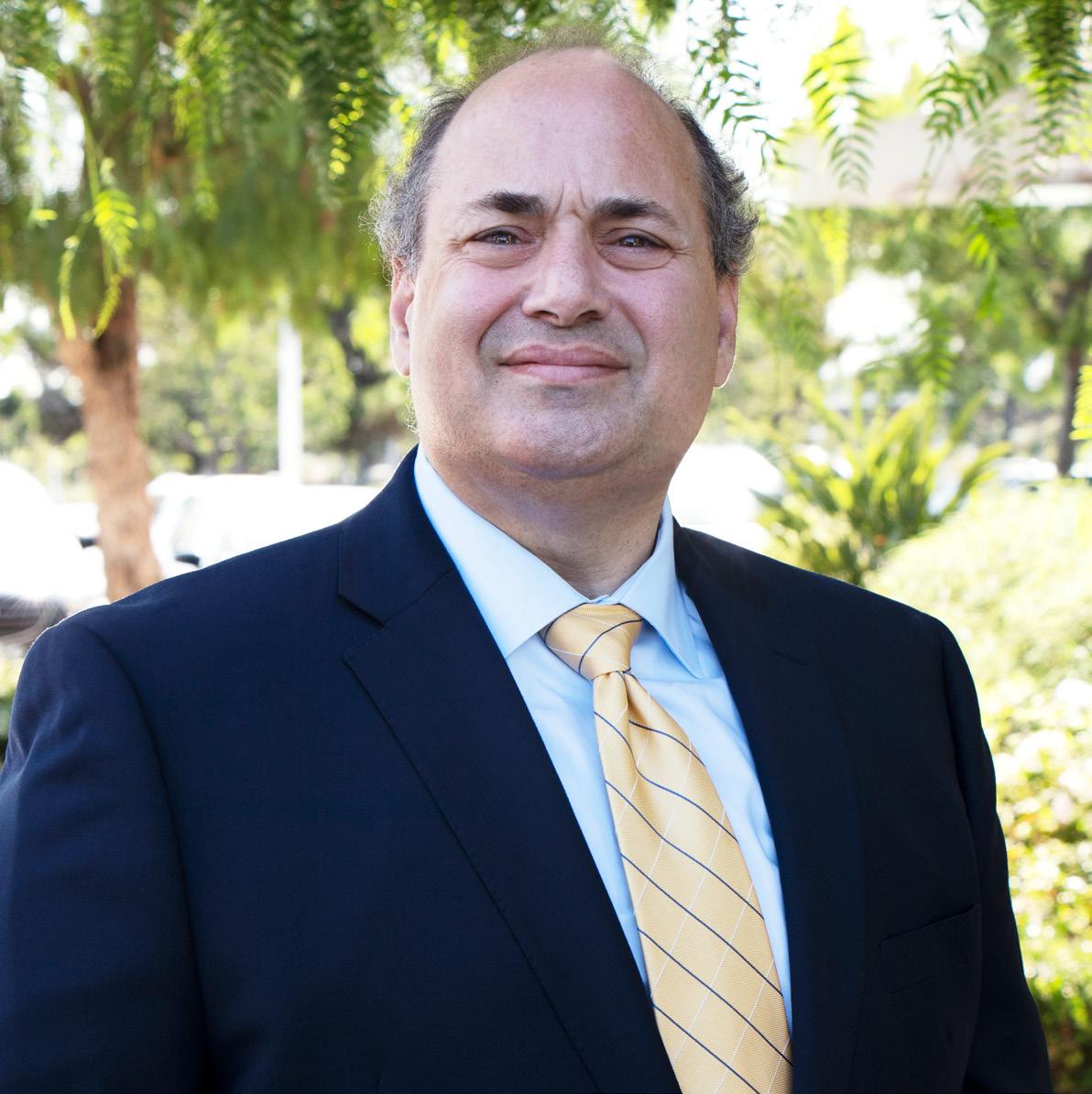
After years of working for health systems like Monmouth and Community Health Systems, Goldstone was struck by the service model he saw at Prime, an award-winning health system with an affiliated nonprofit foundation that owns fifteen of the system’s forty-five hospitals.
“It’s rare that one individual, physician or not, can buy a hospital and make it successful, let alone buy one hospital and then build that into an award-winning, forty-five-hospital health system,” Goldstone remarks. “It indicated to me that Dr. Prem Reddy,
Araceli Renteria, Prime HealthcarePrime’s founder, president, and CEO, had a better understanding of what makes hospitals work and how you efficiently deliver high-quality healthcare in an increasingly fractured and unstable market.”
But however impressed Goldstone was with Prime from the start, he has continued to enhance its legal and clinical efficacy. As the leader of the legal department, Goldstone wanted to be able to recognize his team’s achievements and professional growth. When he first joined Prime, he noticed that there was an opportunity to clarify the legal organizational chart and develop a well-defined career ladder. “When I first visited with the team, some of the lawyers expressed a desire to understand where they fit into the structure of the department and the company, and what their long-term career prospects were,” offers Goldstone.
By creating a clear, formalized career ladder for the legal team, Goldstone has been better able to highlight the actual value that his team members bring to Prime. “I’m always looking for things I can do to satisfy our employees, especially our high achievers, without having to stretch already thin healthcare budgets,” the GC says.
Goldstone’s dedication does not go unnoticed by his team members and colleagues. “I’ve worked with Marc for years and have found him to be an extremely knowledgeable attorney who cares deeply about Prime’s mission and its efforts to meet the healthcare needs of the communities it serves,” says Wilson Jones, a partner at Thompson & Knight LLP.
Goldstone has actually gone a step further than commending his legal team for their abilities—he actively drives his team to continue expanding their skill sets through his establishment of a subject matter expert list. That list serves as an “inventory of the intellectual capital” of his team, Goldstone explains, and is designed to enhance
“I don’t think anybody can expect every lawyer to know everything all the time . . .
. . . The lawyers here understand that they’re delivering exceptional value by becoming subject matter experts in addition to knowing their general field of law.”

Marc Goldstone has furthered his efforts to improve the nation’s health education and vital health services as a federal appointee to the National EMS Advisory Council and as a member, vice chair, and director of the American Health Lawyers Association.
Goldstone is particularly passionate about the science of emergency medical services (EMS), a burgeoning area of research with few peer-reviewed studies. “Nobody can really tell if driving around with sirens on actually saves lives,” explains Goldstone. “But we still do it, and people get into car accidents because of it—in fact, a paramedic I used to work with died in a red lights and sirens accident. Let’s figure out if our well-intended actions are supported by the data, and if they’re not, let’s stop doing them and make sure that we do the research to develop data-driven best practices that really make a difference.”
the efficiency of both the legal department and Prime as a whole.
“I don’t think anybody can expect every lawyer to know everything all the time,” Goldstone says. “Yet it’s important that the attorneys have specialized expertise about certain things because there’s always going to come a time when one of your hospitals needs an expert in behavioral health, telehealth, EMS [emergency medical systems], or another specialty area. The lawyers here understand that they’re delivering exceptional value by becoming subject matter experts in addition to knowing their general field of law.”
In order to become subject matter experts, the lawyers on Goldstone’s team work closely with clinicians, chief medical officers, and other leaders to understand the medical and business aspects of their chosen area of expertise.
“The operators here really like it, because they don’t have to ask a lawyer for advice and then be told to ask another lawyer and another. They can go right to the subject matter expert list and say, ‘Oh, here’s my behavioral health expert. Let me talk to that lawyer,’” notes Goldstone.
Bill Horne, CEO of Quovant, commends Goldstone for his leadership approach, as it helps the two partners carry forth successful business outcomes. “Marc is an innovator who embraces the latest technology and programs to enhance the productivity and efficiency of his legal department,” he notes. “We are honored to partner with his team at Prime Healthcare.”
At the end of the day, Goldstone says his team’s dedication to understanding the needs of physicians makes Prime a better place for those physicians to practice. “Prime is a physician-led organization. You can’t run a hospital with just physicians, but they are a very important part of the leadership team and care delivery team, and aligning their interests benefits the hospital, the patients, and the community,” Goldstone says. “We encourage the entire Prime legal team to see the big picture across the entire healthcare system, from top to bottom. We know about providers and facilities and care being delivered in the field, about reimbursement and regulatory enforcement as well as litigation. There aren’t a lot of lawyers who have that kind of vision when they’re asked to counsel.” AHL
After 20 years, millions of hours and billions of dollars in legal bill review, we’ve seen almost everything. But it’s what we can show you that matters: How much you can save, plus what your firms are doing, who’s doing it best and where you can do better.
See how our tech and talent can take you beyond basic spend analytics to improve law firm performance and focus your team on what matters most.
Start seeing the story in your spending at Quovant.com/AHL
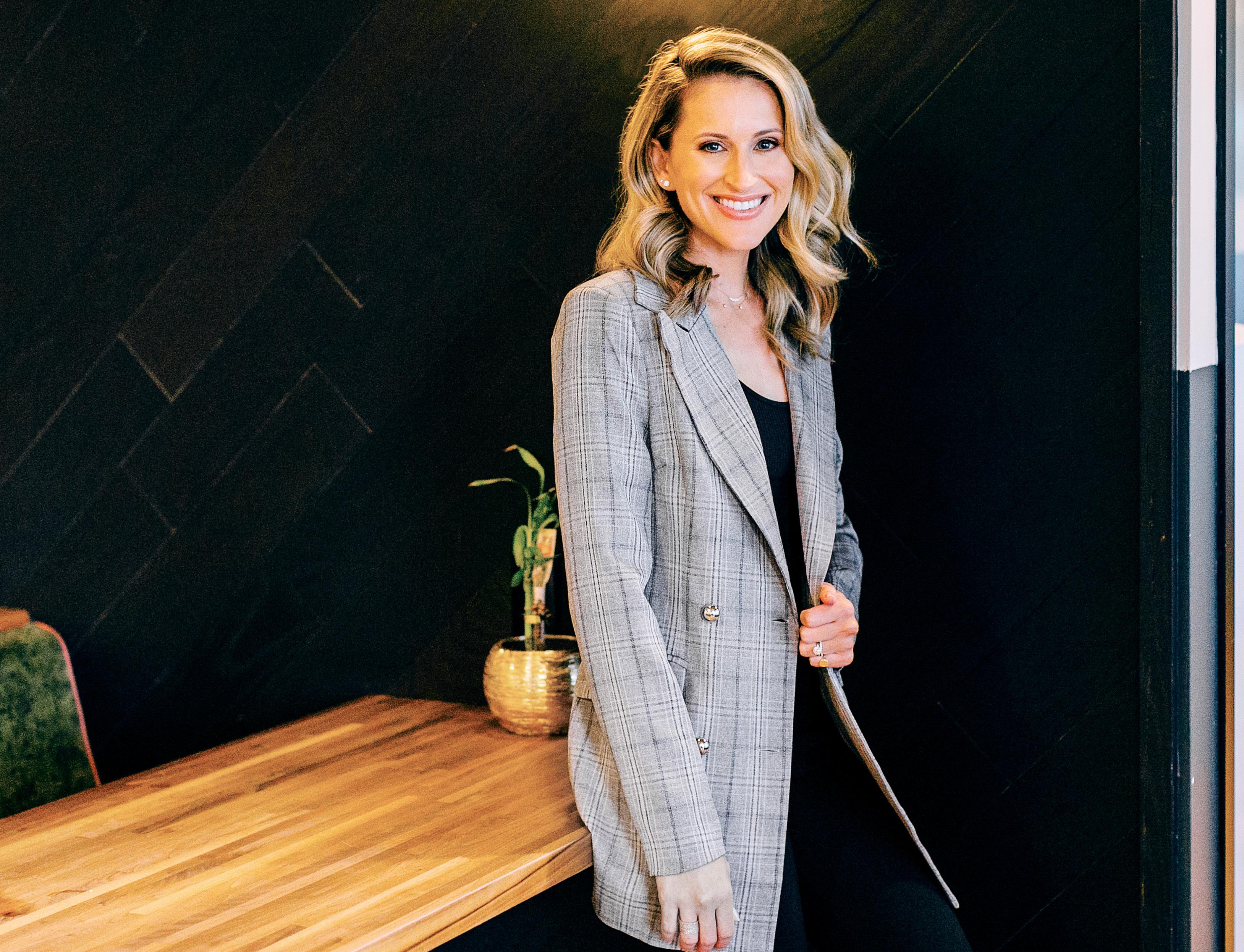 Carly Marino-Healy Founder Marino Wellness
Brittney Hannon
Photography
Carly Marino-Healy Founder Marino Wellness
Brittney Hannon
Photography
Carly Marino-Healy of Marino Wellness provides offices with the means to help employees instill healthy habits and build better culture

How do we stay healthy? Amid hectic schedules we do our best to reach for the right foods, stay active, and breathe deeply. But, in the bumble of a busy day, we tend to forego our well-being to prioritize everything else: work, hobbies, kids, pets, spouses. So, where do we fit ourselves in? Marino Wellness aims to show us how.
Carly Marino-Healy, founder of Marino Wellness, was born with a devotion to movement. Growing up classically trained in ballet, she adopted the discipline and overall passion that practiced exercise and wellness bring. As she got older and looked toward a career centered on the benefits of movement, her career choice seemed obvious.
“The most natural fit for my passion was to study kinesiology—the study of motor skills, the mechanical aspects of movement, and the body's physiological responses to physical activity,” Healy says. “After spending so many hours at the barre, it just made sense.”
Healy’s studies went beyond movement. Her master’s in exercise physiology with an emphasis in public health gave her a deeper understanding of chronic conditions prevalent in the United States (like obesity) as well as the ways in which exercise and proper nutrition relate to overall health. And, after spending the first portion of her professional career at NBC Universal as the associate wellness director, she realized that she wanted to make a positive influence on a broader audience.
“I spent several years of my career in public health implementing evidenced -based practices to prevent obesity,”
Healy explains. “This experience allowed me to hone my skills in population-based wellness strategies, identifying key programs targeting chronic conditions.
“Then,” she continues, “I realized the same factors affecting the public sector also affected the everyday worker, and there was no comprehensive private sector solution. There was a clear need for employers to improve health outcomes in the workplace, but they did not know how to effectively improve physical activity levels, nutrition behaviors, or how to reduce the stress of their workforce.”
From this need came Marino Wellness. Seeing as people often split their time between home and work, Marino Wellness focuses on the latter, specializing in office massage, meditation, fitness, and health education programs to help ingrain healthy habits into one of the settings that beckons our attention most.
“Our vision is to create the opportunity to adopt a healthy lifestyle within a busy work day,” Healy explains. “That way, the average worker can find more of a work/life integration. We’ve identified evidence-based programs that companies can adopt to help make the healthy choice the easy choice at work.”
Marino Wellness’ model fluctuates
based on the size, need, and investment of its clients. Companies can integrate weekly yoga classes or bootcamps to increase physical activity. They can implement lunch-and-learns or health coaching to address nutrition behaviors. The company even offers stress management programs like weekly chair massage or meditation sessions to enhance emotional and mental well-being.
No matter which programs a client chooses, the key to success, says Healy, is making wellness an ongoing part of the company culture. In fact, as more companies adopt a value on investment (VOI) model for employee wellness programming, Marino Wellness’ business strategy has gained a lot of traction.
“We are in an era where decision makers know that if they do not prioritize employee well-being, there will undoubtedly be negative impacts on business,” Healy says. “There is a paradigm shift happening: employers are recognizing wellness as a mainstay in corporate culture, stigmas around stress and emotional well-being are being removed, and the largest segment of the workforce, millennials, expect employers to prioritize well-being. As a result, employers are recognizing that such programming is a necessity.”
In addition to providing on-site programs, strategy, and turnkey solutions, Healy’s team encourages offices to promote well-being by focusing on the small things: casual dress codes, access to healthy snacks, and flexible work schedules. Small changes like these add up to a happier, healthier culture.
The team also encourages companies to be creative in terms of what they think their wellness programs should look like. At Marino Wellness’ own office, for example, employees take “wellness breaks” throughout the week to take part in a yoga class, get a massage, take a walk outside, or engage in mindful meditation. They’ve even started a “green drink happy hour” to feel good inside and out and teach healthy eating habits.
“We’re wellness enthusiasts at headquarters,” Healy laughs. “For us, we’re really passionate about making sure that we practice what we preach.”
As Marino Wellness helps its clients pave a path toward well-being, Healy has noticed more companies weaving physical, mental, and social health into their foundational fabric. “It’s really exciting because this is the future of office wellness,” she says, “and it only gets better from here.” AHL

“It’s really exciting because this is the future of office wellness, and it only gets better from here.”
 By Sara Deeter
By Sara Deeter
 Jonathan Wilson Senior Associate General Counsel UnitedHealth Group
Jonathan Wilson Senior Associate General Counsel UnitedHealth Group
Wilson’s own sense of resolve has seen him through a fast-paced and highly driven legal career. But it is the adversity he has faced in his personal life that truly inspires and motivates him to advocate for both the business and the American public in his role as senior associate general counsel at UnitedHealth Group.
After graduating from the University of Iowa College of Law in 2004, Wilson went on to serve as an attorney at the offices of Dorsey & Whitney, complete both an executive development program at the Stanford University Graduate School of Business and a fellowship in public policy at the University of Minnesota Hubert H. Humphrey School of Public Affairs, and to build a diverse practice as a partner at Best & Flanagan.
Being able to learn new subjects and work in a dynamic environment was one of the things that first drew Wilson to the legal field, he says. “My uncles were both lawyers, and they both had interesting and fulfilling careers—they weren’t pigeonholed into doing one thing as their interests developed and their careers grew,” Wilson recalls. “And I’ve been lucky enough to challenge myself and work on some really creative things in my own career.”
Wilson had an excellent opportunity to flex his creative muscles in a case he took years ago, when he represented a company that had installed the security for a large professional sports arena. The sports franchise was refusing to pay Wilson’s client for its work, creating potentially enormous problems with cash flow and business reputation.
“They couldn’t afford to tie themselves up in long-term litigation, but I figured out that the sports team didn’t own the stadium—the county did,” Wilson explains. “I
obtained a mechanics lien and, within a week and a half from when I first took on the case, the county had called the sports franchise and told them to pay my client.”
After years of helping his clients navigate difficult issues, Wilson was interested in finding a new challenge, particularly an in-house role that would allow him to get more proactively involved in company operations as well as legal issues. But that decision was catalyzed after Wilson witnessed his wife’s own struggles with healthcare.
“We’d been married a little less than a year when my wife started having migraines,” Wilson remembers. “It kind of came out of nowhere. Initially, neither one of us thought it was too serious, but doctors eventually started to order more tests and refer her to more specialists, and we got a better picture of what was going on.
“She had a tumor on the temporal lobe of her brain that had been slowly growing for years,” Wilson continues. “It was very scary news to hear.”
Neither Wilson nor his wife had experienced a serious medical issue before, he explains, which made the experience all the more stressful. “We didn’t know what to expect or how to navigate an array of providers, specialists, referrals, and physical therapists,” Wilson says. “How do you budget for everything? How do you ensure that you’re getting the best care from the best doctors and for the best price and outcome? It really was a crash course in the US healthcare system.”
Thankfully, the anxiety of the experience was alleviated somewhat by the incredible support that Wilson and his wife received from everyone around them—and not just friends and family. “At the time, my wife’s benefits were administered by UnitedHealthcare, and they were so great about answering our questions, helping us identify resources, and giving us a heads-up on how much things were going to cost and what we could expect in terms of next steps,” Wilson offers. “My wife is completely healthy now, but if we hadn’t had all of the support we received, I don’t know what we would have done.”
After seeing the healthcare company’s support for his wife, Wilson couldn’t pass up the opportunity when he was invited to interview at United. To him, the position was a chance to both learn more about the industry and see if he could do something to make a difference for others going through intense medical situations.
For the past four years, Wilson has been charged with designing and leading UnitedHealthcare’s affirmative litigation team, which files cases against providers, manufacturers, and others who have illegally added costs, hassles, or delays in connection with patient care. “I try to streamline things and simplify them as much as possible
“You have to have resolve if you’re working in the healthcare space,” reflects Jonathan Wilson. “Most of the matters you deal with aren’t easy to fix, and it can take so long to get to the right result.”
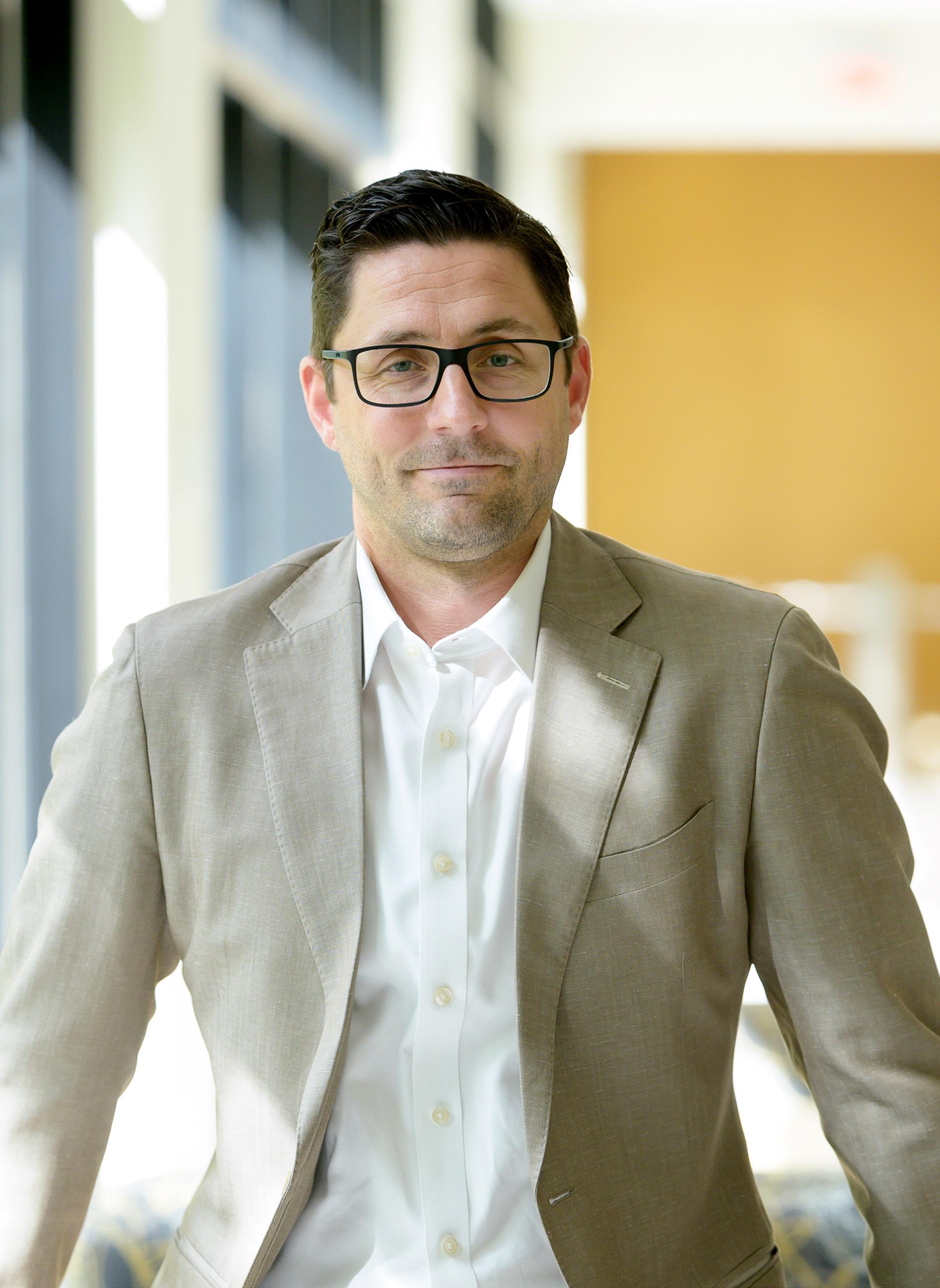
“I try to streamline things and simplify them as much as possible so that my team and I can drive affordability for patients.”
so that my team and I can drive affordability for patients,” Wilson says. “There are a handful of bad actors in the industry who are forcing people and health plans to spend money on things that they don’t need to spend money on. The cases we file are designed to increase transparency and stop that bad conduct.”
“Jonathan’s tireless work to pioneer the affirmative litigation program at UnitedHealth Group has been a game changer for the industry,” says Jeff Gleason, partner at Robins Kaplan. “Our partnership with Jonathan and UnitedHealth has been a great example of how the business and legal sectors can come together to find solutions to make the healthcare system more affordable for everyone.”
“An in-house litigation department doesn’t have to be reactionary and only handle things on the defensive front,” he explains. “It can partner with the business and collaborate with decision makers from across different segments to help drive innovative solutions to difficult problems.

“Our affirmative litigation program isn’t just about recovering money,” Wilson continues. “It also focuses on achieving long-term value for the healthcare system by preventing recurrent harm and exposing important issues in a way that leads to improved performance and greater accountability. We’re trying to protect customers and ensure that there is integrity in healthcare.” AHL
At Robins Kaplan LLP, our healthcare litigation attorneys have successfully recovered millions of dollars for our healthcare clients who have suffered losses due to fraud, waste, and abuse. We serve clients in both affirmative and defensive engagements in courts throughout the country as well as complex arbitrations in cases involving claims of breach of contract, fraud, conspiracy, antitrust, and RICO. Our skilled trial attorneys and acumen in the courtroom allow us to maximize recovery in pre-trial settlements and, if resolution is not possible, we are prepared to try the case to verdict, where we have achieved significant results for our clients.


Estrella Parker has always wanted to make an impact. Throughout her career, she has moved forward with the aim of using her talents, skills, and education to solve world-class problems. And today, as chief human resources officer at Satellite Healthcare, Parker has certainly fulfilled her goal.
When Parker first started out in her career, she actually had no thought of working in human resources. After graduating from the University of the Philippines with a degree in computer science, she earned an MBA at the University of California, Los Angeles' Anderson School of Management and worked as a senior consultant at Gemini Consulting. But just a few years later, when Parker had transitioned to a role at Prudential Insurance, her career trajectory changed forever.
“The president of the division at the time, who was very forward-thinking, decided to build an in-house HR function,” Parker recalls. “She wanted to take a different perspective on the traditional HR department, so she asked me to step in and run it.” Ever since then, Parker has used her tech- and business-centered background to innovate and disrupt the HR field. “It’s not about being defined by the field,” says the CHRO, “but what I can do to truly make a difference.”
At Satellite Healthcare, Parker serves as the general manager of company’s HR function. She is also a member of the executive team that finds strategic ways
As chief human resources officer at Satellite Healthcare, Estrella Parker helps the company find and drive the strategies that allow people living with kidney disease to live the best life possibleParker Chief Human Resources Officer Satellite Healthcare
Part of what makes Estrella Parker so passionate about Satellite Healthcare’s commitment to educate the public about kidney disease is the memory of her cousin, who was diagnosed with kidney failure when she was in her early twenties.

“She’s my hero, my inspiration,” Parker says of her cousin. “At the time, I didn’t understand much about what was happening. Until I joined the Satellite team, I didn’t realize all that can be done to help make life better for people living with the disease. It’s been very fulfilling to be able to give something back.”
to grow, expand, and live the company’s mission. In addition, Parker is a member of the executive leadership committee for the National Kidney Foundation, a major nonprofit organization committed to kidney disease prevention and the support of people living with kidney disease in the United States.
One of the nation’s leaders in care and treatment for kidney disease, Satellite Healthcare’s mission is “very simple,” Parker says. “Our mission is to make life better for those living with kidney disease because when people come to us, they’re telling us they want to live.” But Satellite takes a broad view of the term “life,” Parker emphasizes. They don’t just want to help patients live longer—they want to help them enjoy healthier, happier lives even while living with a serious chronic condition.
“Our employees strive to truly get to know each patient,” Parker says. “We work with them to individualize treatment as much as possible so they can live a life that’s meaningful to them.” For many patients, Parker explains, that extra care makes all the difference in the world.
“We had a patient worried about losing his job because of the twelve hours a week he needed to spend at the dialysis center,” Parker recalls. “We asked him if he had ever considered home dialysis, which offers a lot more schedule flexibility. He said, ‘No, nobody ever told me about home dialysis!’ It’s about finding
Estrelladifferent modalities and creative solutions so that people can still do the things they want to do.”

In addition to an individualized, empathetic approach to patient care, Satellite Healthcare strives to increase public awareness about kidney disease, Parker says. “Unlike cancer or heart disease, kidney disease has never had much public attention,” she notes. “That’s despite the fact that one out of every seven Americans is living with kidney disease, and that 90 percent of those with the disease don’t even know they have it.”
Increasing awareness means more people will get tested for kidney disease. Early detection and treatment can slow the progression of the disease and the need for treatment. More awareness also means greater choice for patients when treatment is needed. “Too many patients ‘crash’ into dialysis,” Parker says. “They didn’t know the signs. Their kidneys fail
and they begin dialysis in the hospital. Early stage kidney disease healthcare smooths the transition to a treatment option that works best for the patient, whether that be preemptive transplant, home dialysis treatment, or in-center dialysis. If we can avoid the medical emergency, we can help patients adjust to their life on treatment in a more supportive, holistic way.”
Satellite Healthcare’s mission is unquestionably meaningful, but as Parker says, it wouldn’t mean nearly as much if the organization didn’t execute that mission with an abiding sense of compassion, empathy, and love. That’s what keeps patients coming to Satellite, and that’s what keeps people like Parker working there.
“We have an environment that helps us really live our values,” Parker says. “So, it’s very natural and easy for me to thrive here and be an advocate despite any challenges we face along the way.” AHL
“Our mission is to make life better for those living with kidney disease because when people come to us, they’re telling us they want to live.”
Healthcare is a constantly evolving industry that demands executives to plan ahead. Often, this means business leaders need to address department- or company-wide issues to remain focused on driving innovation and devising strategies to maintain a high level of care.
96. Chris Allen
104. Kapil Assudani
110. Paulette Wright
118. Brian Savage
124. Chris Johnson
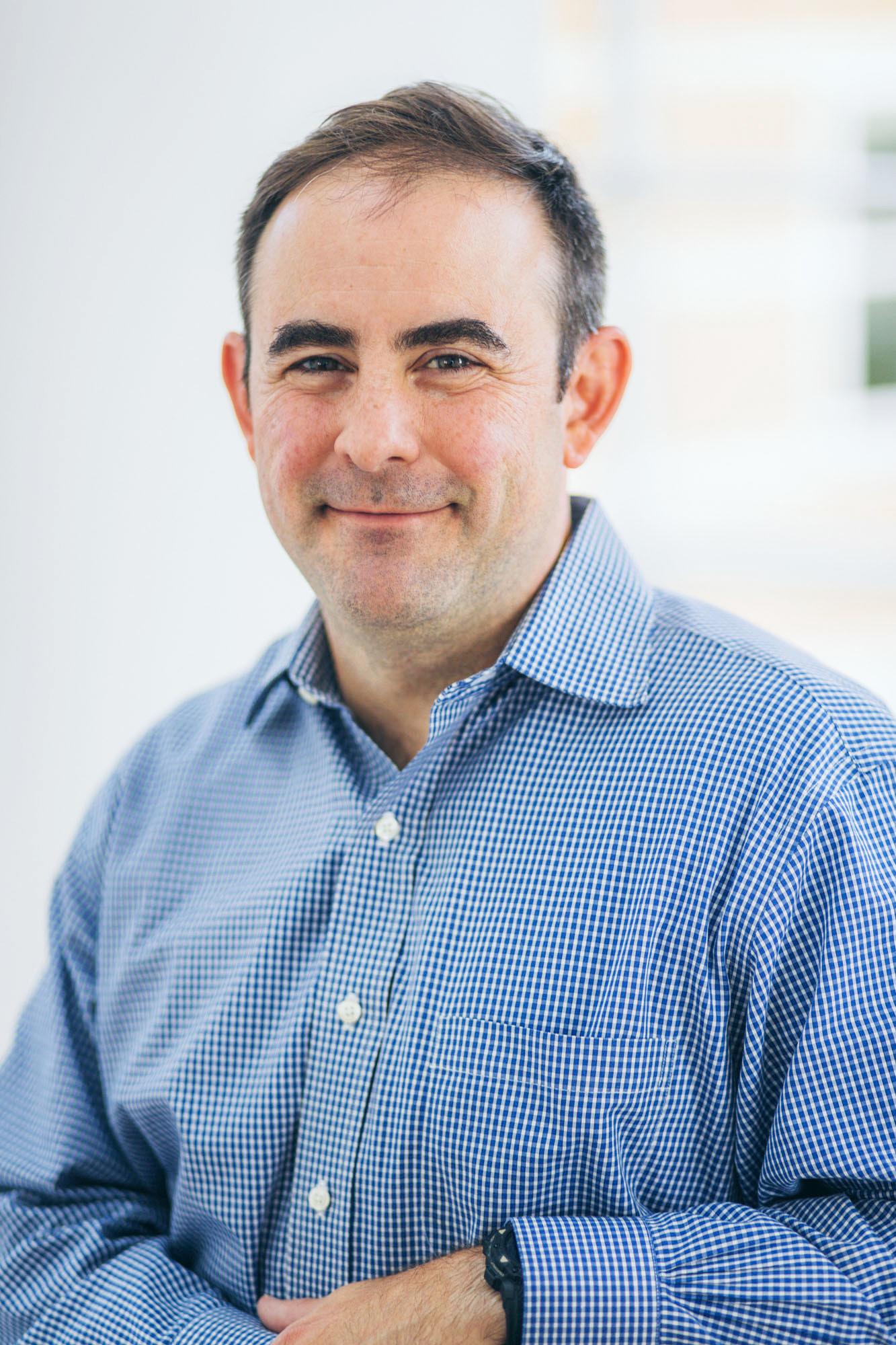 Chris Allen
Takeda Pharmaceuticals
Chris Allen
Takeda Pharmaceuticals
Currently the vice president and head counsel of the litigation and investigations department at Takeda, Allen spent the first fifteen years of his career at Nixon Peabody LLP. When he first started there as an associate, Allen had no thought of entering a STEM-focused field like pharmaceuticals. “I was the guy who studiously avoided any math and science and technology, except for maybe geology class,” Allen laughs.
But when Allen was a second-year associate, the firm took on a mass-tort product liability case for a large pharmaceutical company, and one of the partners told Allen that he would soon be taking depositions of dozens of treating physicians and prescribers.
“I was thrust into it, really,” Allen recalls. “During those depositions, I had to engage the doctors on very technical issues. But the science of the medicine was vitally important to the case, and I actually found that I really liked it.” And by the time Allen left Nixon Peabody, much of his practice centered on the life sciences industry, including pharmaceuticals and medical devices.
Allen’s opportunity to dive into the deep end equipped him with skills that allow him to navigate through any legal landscape. “Chris has impeccable judgment, both as a legal counselor and a business problem-solver,” says Mark Jensen, managing partner of King & Spalding’s Washington, DC office. “And when coupled with an extraordinary depth of expertise across litigation, transactions, and regulatory matters, his leadership inspires confidence in those around him.”
Now, as a leader at Takeda, Allen emulates the partner who nudged him into the pharmaceutical world all those
A world-class company needs a world-class team.
At Takeda Pharmaceuticals, a global leader in the pharmaceutical industry founded more than 230 years ago, Chris Allen enables the success of the US litigation and investigations department by prioritizing relationships and making sure that his people remain motivated and engaged.

years ago. “There are benefits to being thrown in the deep end,” Allen says. “A lot of senior attorneys don’t do that for junior associates—they worry about the client relationship, or a high-stakes case being jeopardized—but those experiences are vital for an attorney’s professional development.”
Ninety-nine times out of a hundred, Allen says, he will tell his team members to take the opportunity, to take a risk and try swimming in the deep end. And thankfully, given the recent merger between Takeda and Shire, a leading biotech company, there is plenty of interesting, challenging work to go around.
Of course, Allen doesn’t throw his team in the deep end without a lot of support and encouragement. “The question is, ‘How do you get the best out of people?’ And I’ve found that the answer is to make sure people feel that they’re doing meaningful work and that they know their work matters—that they’re making a vital contribution to the company,” Allen says.
According to Allen, great work goes unremarked all too often in the legal world. Especially at law firms, junior attorneys don’t get the recognition they deserve. “You bust your tail as a young associate, working on briefs over the weekend and missing weddings and birthday parties to get the work done,” Allen says. “But then, even when it’s an exceptional product, the partner will often just say, ‘This is fine. It looks fine.’ There’s never a thank you, or an acknowledgment of what you gave up.”
Despite what he’s seen, Allen’s own attention toward recognition does not go unnoticed. “Chris is a superb strategic thinker who also invests the time needed to know cases well enough to advise and contribute at every level,” says Fred Kelly, partner at Haug Partners LLP. “He is tireless, thoughtful, and quick with a compliment to everyone on the team—a real pleasure to work with.”
The leader-team member relationship isn’t the only one that you have to pay attention to and foster, says the VP. On an in-house counsel team, he says, you have “one client, in a certain sense.” But really, when you think about the need to be a trusted advisor to internal business leaders, you have many clients. “Relationships just become vastly more important in an in-house role,” Allen notes. Following the Takeda-Shire merger, Allen has dedicated himself to ensuring that the transition continues smoothly but also to making sure that internal stakeholders have a relationship with his team.
“It’s vitally important to get to know new colleagues, whether it’s within legal or elsewhere in the organization, to understand what’s important to them and what
“The answer is to make sure people feel that they’re doing meaningful work and that they know their work matters—that they’re making a vital contribution to the company.”
King & Spalding Life Sciences and Healthcare Industry Highlights
300+ lawyers and professionals
450+ drug and device manufacturers and healthcare providers

Named “Practice Group of the Year” for Life Sciences
(2016 – 2018) and Healthcare
(2017 – 2018) by Law360

their concerns are,” Allen says. “And on the other side, there’s a need to make sure that they have a good understanding of my team’s skill sets and that they know we can be vital strategic partners, whether it’s in a litigation setting or related to other matters that might be relevant to the business.”

But Allen doesn’t stop at internal business leaders— relationships with external partners must be fostered as well, he emphasizes. He always looks for outside law firms that commit to their relationship with Takeda— firms “who are willing to run through traffic to help us.” But that kind of relationship only forms when you place high value on positivity and respect, Allen says.
Allen’s commitment to building strong relationships with external partners certainly shows. “Chris’s extensive experience in private practice, combined with his business acumen and a very pragmatic approach to problem solving, makes him particularly effective in his role,” says Steven Reed, partner at Morgan Lewis and close colleague of Allen and his team. “He has great instincts and judgment and is a pleasure to work with.”
“When the client calls at six-thirty on Friday evening, every law firm lawyer will tell you that they will pick it up,” Allen explains. “But, speaking from my own experience in private practice, there are some clients for whom you answer the phone more out of a sense of duty and obligation, and there are others for whom you are excited to pick up the receiver. When my team places a call to a law firm, my objective is that we are in the latter category: whether it’s our law firms or our in-house tech teams picking up the phone, we want them to be excited to work with us.” AHL
“There are benefits to being thrown in the deep end . . . those experiences are vital for an attorney’s professional development.”

Morgan Lewis is recognized for exceptional client service, legal innovation, and commitment to its communities. Our global depth reaches across North America, Asia, Europe, and the Middle East with the collaboration of more than 2,200 lawyers and specialists who provide elite legal services across industry sectors for multinational corporations to startups around the world.
www.morganlewis.com
©2019 Morgan, Lewis & Bockius LLP
As CISO at Edwards Lifesciences, Kapil Assudani leverages years of experience leading multiple facets of cybersecurity to design and implement world class security programs
By Zayvelle Williamson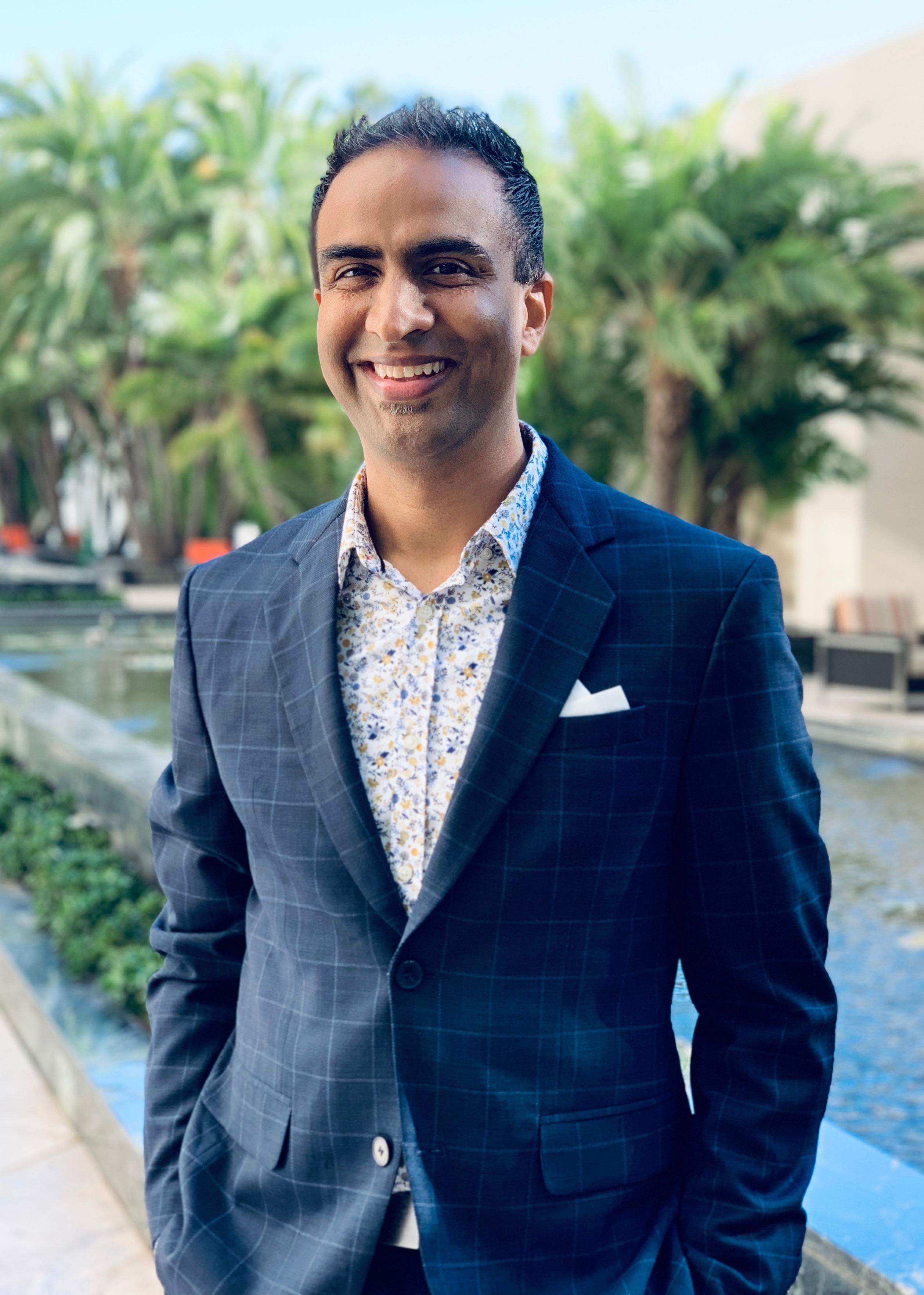 Kapil Assudani Chief Information Security Officer Edwards Lifesciences
Kapil Assudani Chief Information Security Officer Edwards Lifesciences
Kapil Assudani knows it’s not enough to be smart.
Raised in India, the second most populous country in the world, “you pray to get into a decent school even after scoring 90 percent on an exam,” says Assudani, now a cybersecurity expert and the chief information security officer at Edwards Lifesciences. Instead, he has learned how to thrive in an ecosystem that centers on the philosophy of “survival of the fittest.”
When Assudani was accepted into the University of Missouri–Kansas City to pursue a master’s in computer networking, he arrived in the United States with $6,000 in his pocket and absolutely no background in computer science.
That experience definitely “put his survival instincts to the test,” Assudani recalls, and instilled in him the importance of resilience and discipline. But it was when he landed his first position in the US that his eyes truly opened to the realities of the field he had chosen.
“I worked for this guy who was really, really smart but was a sort of knowledge-hoarder,” Assudani says of that first position. “He wouldn’t share any knowledge or even let me access some of the systems as a job security measure.”
“But my CIO dropped in one day and fired him, then looked at me and said, ‘You have to handle everything now,’” Assudani continues. “I knew nothing but was asked to make it happen. I had to learn everything from scratch, and I did. As a leader, I had to take educated risks, be decisive, and willing to make tough calls.”
As Assudani has moved up through top companies such as EY, Symantec, Blue Cross Blue Shield, and Kaiser Permanente, those lessons stayed with him. His transition from a “breaker,” or ethical hacker, to a “builder,” or architect and strategist, has been marked by a need to become ever more comfortable in making decisions clouded by uncertainty. And he’s learned to master the art of decomposing complex problems into simple ones.
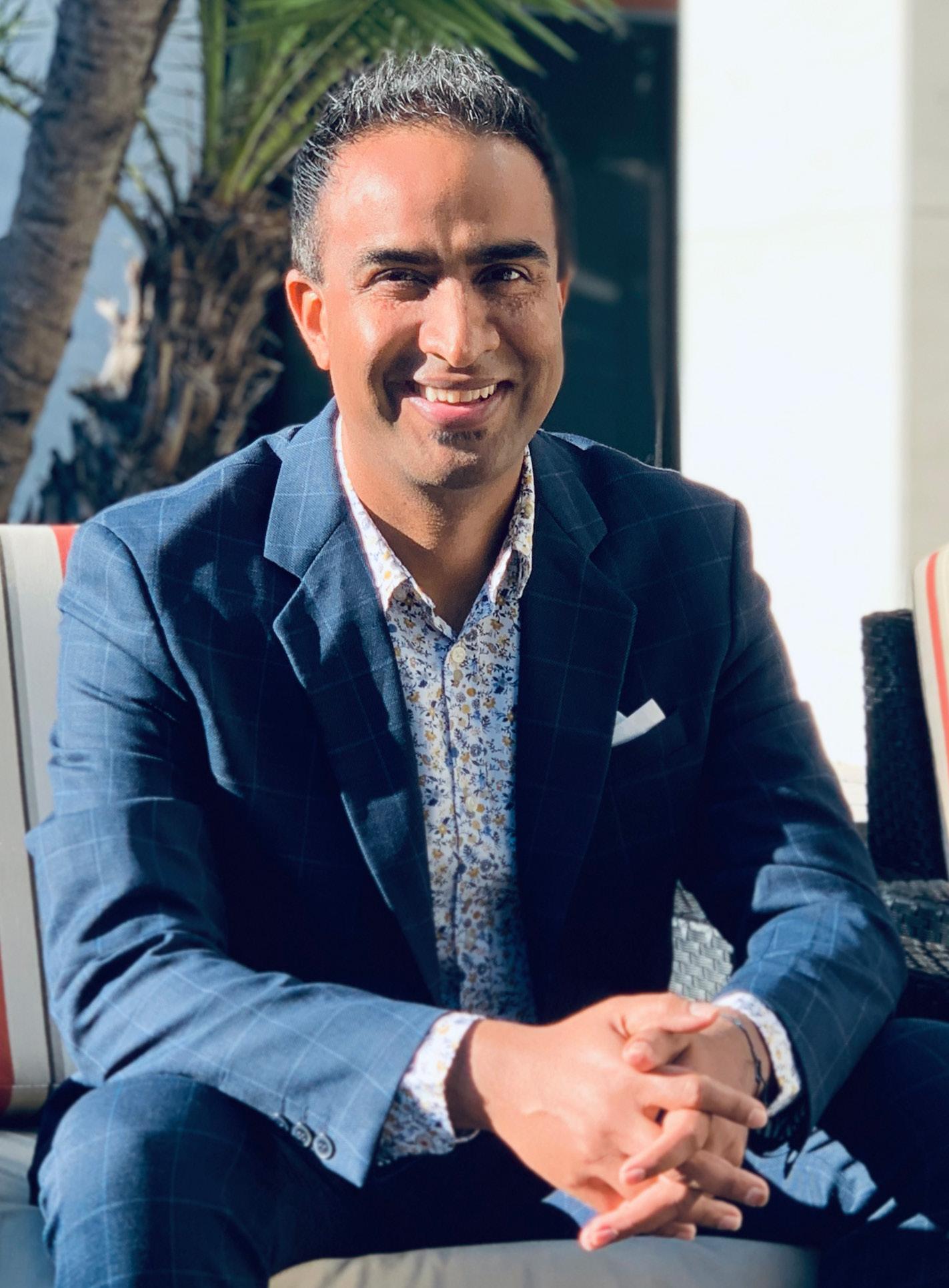
When you are a white hat breaker, Assudani explains, your sole responsibility is to break into a company’s network and help them identify and understand the flaws in their security system. “You are considered a hero when you hack into those companies,” Assudani laughs. “And it’s pretty easy: as a hacker, you just have to find one gap in the system and then it’s game over.”
But as a builder, Assudani’s job became much more complicated. “Unlike an adversary who just has to find one security hole and claim glory, with a security team, you have to find—and plug—each and every gap that might be there while also finding a balance with your business’s needs and operations,” he explains.
Luckily, his nearly fifteen years in the field have given him ample time to find that balance. According to Assudani, a cybersecurity program that successfully
works within that balance must, above all, be contextual. In other words, the program must mesh well with both the culture of the IT team at a given company— the team’s skill sets, the individual personalities on the team—as well as the culture of the organization as a whole.
Assudani notes that these security programs must be tailored to individual teams and organizations, or they cannot be widely applied across the industry. “A lot of times, leaders try to apply the security programs they used or built at previous companies to their current organizations,” Assudani says. “But it doesn’t work, and they experience huge disconnects and pushback because of the disruption and lack of effectiveness. It’s like trying to fit a square peg in a round hole.”
The need to tailor these security programs to the context in which they are applied is also a challenge in terms of the time it takes to build a mature program. “Quality comes at a cost,” Assudani notes. Because the programs take time, money, and resources to build, security leaders like Assudani must also have a robust strategy to avoid breaches effectively and to concurrently fight the never-ending war against hackers.
“Hackers are not waiting around for us to build a mature program over the course of years,” he points out. “They’re knocking on your perimeter every single minute. So, the question becomes, how do you identify the right priorities—the initiatives that will allow you to efficiently build a security hygiene baseline—so that you have time to build a mature program over it?”
To Assudani, his biggest asset is always his team. Having the right team is critical to gaining impactful wins in a short period of time, he says, which is the best way to earn the trust of the company’s leadership and expand programs. Assudani has developed his own system for developing and strengthening his teams, which centers on organizational performance, candid and real time feedback, and establishing trust.
“Giving candid feedback in real time should be a habit, even if it’s as simple as a quick ‘kudos’ or a thumbs up or down,” he says. “Your team will appreciate this style because they’ll know what's needed to succeed immediately rather than knowing after failing. You have to back your people up at all times—it gives them the freedom to create and innovate worry free. Ultimately, wins belong to the team, losses to the leader.”


And throughout all those wins and losses, and the constant stress test that is the cybersecurity industry, Assudani remains focused on the “great sense of accomplishment” he gains from exercising his passion for information security in the healthcare industry— especially within a cutting-edge medical equipment company like Edwards Lifesciences.
“Education, healthcare, and security are the fundamental domains that build up a nation, and I have found a way to touch all three,” Assudani says. “Healthcare is such a great cause—there is no feeling equivalent to seeing our patients come back to us smiling and telling us how they are going to live longer than they expected because of our quality products.”
As CISO of Edwards Lifesciences, Assudani remains committed to protecting that noble mission. AHL
“[With] a security team, you have to find— and plug—each and every gap that might be there while also finding a balance with your business’s needs and operations.”
Defend against data breaches and cloud threats from hackers. Secure PHI, EHR, and other sensitive data in the cloud. Simplify compliance with HIPAA, HITECH, and more.
The Netskope Security Cloud helps organizations with safe cloud use by securing sensitive data like PHI across all your cloud services – from ones like Microsoft O ice 365, Box, Salesforce, and more, to shadow IT ones you may not know your employees are using.
Netskope is the leader in cloud security. We help the world’s largest organizations take advantage of cloud and web without sacrificing security. Our patented Cloud XD technology targets and controls activities across any cloud service or website and customers get 360-degree data and threat protection that works everywhere. We call this smart cloud security.
To learn more, visit www.netskope.com
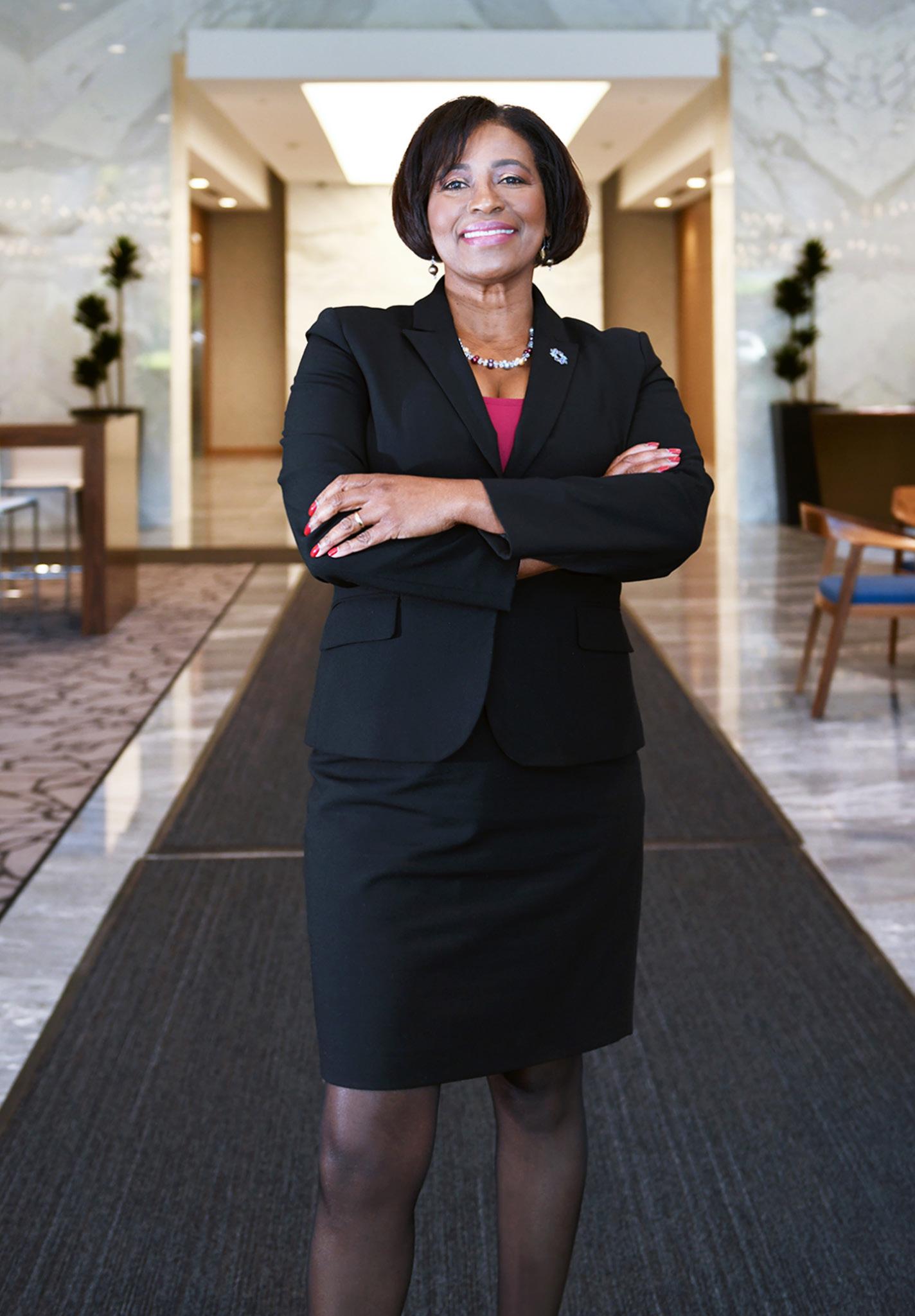 Jaclyn Kronstedt
Jaclyn Kronstedt
As Hackensack Meridian Health (HMH)’s vice president of benefits, this mind-set is the hallmark of Wright’s career. Just ask her about her position and how she successfully manages benefits for thirty-five thousand team members at New Jersey’s largest and most comprehensive health network, and the talk immediately turns to her team.
Wright praises her own bosses—CEO Robert Garrett and Executive Vice President and Chief Experience Officer Nancy Corcoran-Davidoff—for their visionary leadership, as well as her own benefits team, vendor partners, and virtually every other team at the network before taking any credit.
“It’s not so much about me as it is the village,’’ she says.
Wright’s modesty is genuine, but so are her accomplishments. Since joining Hackensack University Medical Center as a benefits manager in 1991, Wright has graduated into larger roles and now serves in a major leadership role at Hackensack Meridian Health, the creation of a merger three years ago between Hackensack University Health Network and Meridian Health.
“I’ve become accustomed to driving organizational change,” Wright says. “Some of those initiatives I’ve driven have been quite challenging in the past.”
“It is so refreshing to know that we have a direct line to Paulette whenever it comes time to discuss service delivery and strategy,” says Kim Wylam, president and managing partner of Baker Tilly Vantagen. “She has a vision and is very willing to both share it and directly understand how we can uniquely help her shape it. This level of access and inclusion are unique for a large employer. This way, Paulette’s way, makes all the difference when it comes to ensuring that we remain connected to the organization’s emerging interests and motivated to perform at a high level.”
At Hackensack University Medical Center, Wright designed and led an award-winning health and wellbeing program that included onsite coaching and a zero-dollar coordinated care program. The organization was able to provide counseling for people struggling with the three most prevalent diseases: diabetes, high blood pressure, and high cholesterol. Currently, over four hundred team members are still actively using the program.
As Paulette Wright’s career has flourished for nearly three decades, a key to her success is her inclusive approach or, as she describes it: “It takes a village.’’


In 2014, Wright was able to introduce a new holistic integrated PTO access management platform called My Time. “This evolving project faced challenges common to integration initiatives: it required full-management buy-in and a significant cultural change for the organization,” Wright says. A company-wide survey scored its highest rating in four years following its introduction, and My Time was later adopted by the American Society of Healthcare and Human Resources Organization.
Wright also led the redesign of the pension benefits from a defined benefit plan to a defined contribution plan. Prior to the implementation, organizational participation was only 38 percent. Participation then rose to 95 percent. “Those outcomes are what really helped propel me forward in my career,” Wright says.
Perhaps Wright’s most significant contribution came with Hackensack’s 2016 merger of HMH, which now includes seventeen hospitals, more than five hundred patient care locations, and seven thousand physicians. The merger quadrupled the health system’s team members from eight thousand to thirty-five thousand. “The integration consisted of over one hundred different PTO programs,” Wright says. “From the outset, it was extremely nerve-wracking.”
The integration meant scrapping thirteen different payroll systems and medical plans, six life insurance plans, six union contracts, multiple decentralized
policies and processes, as well as 401(k) retirement and vendor contracts.
“Bringing together the multitude of employee benefit plans and programs into one harmonized platform, while meeting the needs of all parties, was a challenge,” recalls Joe Milano, area vice president of Gallagher. “Paulette’s passion and commitment to both HMH and their team members was her driving motivation. Her ability to ask the right questions, seek the right data and then transform all these pieces in a cohesive narrative to inform senior leadership was instrumental in her ability to successfully achieve the ‘OneHMH total rewards program.’”
“Right out of the gate, step one was to articulate and define a single total rewards philosophy based on the Hackensack Meridian Health’s mission, which is to transform healthcare,” Wright explains. “We also used our shared beliefs to guide the design, ensuring every decision we made was compassionate (had the team members at heart), collaborative (it was iterative and included feedback of the team), creative (we imagined the best overall plan for our team), and courageous (we made some tough decisions about what would work best for all team members).”
Wright says that the support she received from the larger organization was essential to the successful integration. “Every dollar that was identified as savings
“We used our data to assess, develop, and measure the impact of current states versus possible future states that really helped us see where we needed to go.”
Paulette Wright Hackensack Meridian Health
Connect with us: bakertillyvantagen.com
Discover how passion for service can take your Human Resources to a new level. Your employees will be invigorated by technology yet not feel left behind when they want to connect with a live person to answer a question.
We partner with hospitals and health care systems to do the things that keep employees happy, healthy and connected to your mission. Our model is purposefully designed to extend the reach and capability of your HR operations. It has produced over 20 years of success stories featuring organizations that share your narrative. We take great pride when our passion for what we do matters to you.

What we do is give you the ability to do your important work.
That’s what matters most to us.
Baker Tilly Vantagen is proud to recognize the achievements of:
was approved by the organization to reinvest back into the team member, creating a total rewards program,” Wright says. With the help of a large team of vendor partners and leaders throughout the organization, Wright was eventually able to enroll all thirty-five thousand team members in a single, new HMH program.
TIAA, Hackensack’s retirement plan provider, is just as pleased to be part of the competitive and inclusive total reward package Hackensack makes available to its team members. “Paulette, along with the rest of the Hackensack team, has done a terrific job developing and implementing a comprehensive 401(k) plan,” says Colin Pierce, TIAA’s managing director of healthcare market. “TIAA has been fortunate to be part of Hackensack’s efforts to improve the financial wellbeing of their team members with such an impactful retirement planning process.”
The path to a harmonized total rewards program had to be paved with good, hard data. “Data is king, and in our situation, we could not have arrived at a harmonized program without reliable data,” Wright says. “We used our data to assess, develop, and measure the impact of current states versus possible future states that really helped us see where we needed to go.”
Any of these accomplishments would be a point of pride. Collectively, they are testimony to Wright’s thirst for excellence and dedication to team members. The satisfaction of those team members is how Wright says she’ll ultimately judge her own career effectiveness.
Mercer’s client manager, Sandra Pemberton, states, “Paulette was very instrumental in working with Mercer, a long standing strategic partner, on the integration and harmonization of Hackensack Meridian Health retirement, healthcare, and total rewards programs; on obtaining the optimal solution; and creating a best place to work while driving organizational
performance and focusing on team members experience and engagement.”
“Success will be measured in the feedback of our team members,” Wright says. “It really is about the village here that we’re talking about because it was their feedback in their surveys and the stories they’ve shared about their outcomes that are the motivation for me to continue driving change.
“In providing these programs,” she continues, “we listen to the feedback of everyone in the organization, and I want to be able to hear the team members here singing the praises of these benefits programs.”
Completing this total rewards program not only served in the workforce’s best interest, but also established Hackensack Meridian Health’s system-wide philosophy centered on collaboration, creativity, compassion, and courage to serve its patient population and its own team members. AHL
With healthcare mergers and acquisitions (M&A) activity on the rise, one fundamental success factor is how well an organization integrates its biggest asset―its workforce—within the new entity.
Every HR professional plays a critical role in bringing together distinctive workforces and helping the combined organization achieve its goals. John Kahle, managing director of healthcare sales at TIAA , shares four best practices to help healthcare HR achieve M&A success.
• Be transparent and get everybody on the same page.
• Keep culture at the heart of an organization.
• Take a total compensation approach.
• Remember: M&A is more than a business transaction—to employees, it’s personal.
“Success will be measured in the feedback of our team members.”
GC Brian Savage uses his legal expertise to help unite the two sides of Teva Pharmaceuticals
By Sara DeeterSavage has always been fascinated by the law, particularly as it is applies within the healthcare space. “The science of it all is really interesting, and because it’s so highly regulated, there is a lot to navigate from a legal perspective,” explains the GC, who worked as an associate at Dechert LLP after graduating from Yale Law School in 2009. “All this complexity makes our work both challenging and engaging—from R&D planning to the approval process to bringing products to market, there are so many pieces to the puzzle.”
But the highly regulated nature of the pharmaceutical industry means more than just an interesting challenge, Savage notes. Because healthcare rules and laws are constantly evolving, lawyers working within pharma must “always be on their toes,” he says, “able to give sound legal advice on just a moment’s notice.”
“Brian handles numerous commercial and antitrust cases for Teva and dives into each one as deeply as his outside counsel,” says Jay P. Lefkowitz, litigation partner for Kirkland & Ellis LLP. “That makes him an invaluable partner, whether developing strategy, preparing for arguments, or negotiating settlements.”
Even greater flexibility and adaptability is expected of the lawyers at Teva, Savage says. Teva may be known
As general counsel of US generics at Teva Pharmaceuticals, the most prominent name in the world of generic pharmaceuticals, Brian Savage considers himself as much a business counselor as a lawyer. And indeed, Savage’s knowledge of the pharmaceutical marketplace and critical insights into business operations have enabled him to walk a fine line at Teva, where company leaders aim to balance their production of both specialty and generic products.
for its generic products, but it sells specialty products as well. When Savage first joined the company as executive counsel in 2015, there was a clear dividing line between the two areas of business. In one sense, that line still exists, since Savage primarily supports Teva’s generics business. “But,” he says, “we have made a strategic choice to really break down those barriers and view ourselves as one company with a singular set of goals that we’re all working towards.”
“The thought is that we can maximize our success—and best serve patients’ needs—by collaborating more closely together. We want to make sure not only that the right hand knows what the left hand is doing but also that both hands are working together to achieve our common goals.”
That effort—to make Teva’s business operations more cohesive—can present Savage and his legal team with a number of different challenges. As he describes, there are certain decisions that he and his colleagues might make if they were focused only on the generic side of the business. But, those same decisions could also affect the specialty side of the business as well, and the impacts on both need to be carefully considered: “You have to be careful, deliberate, and mindful of all the possibilities when you’re formulating legal arguments and taking legal positions.”
It is therefore a great help, Savage points out, to able to work across the aisle with his colleagues in the specialty side of Teva’s business. “Having that kind of collaboration is pretty neat,” he offers. “We all exist in both spaces, really.”
There are also more specific reasons for Teva’s breakdown of the barriers between the specialty and generic businesses Savage emphasizes. Among them is the company’s work in the biosimilars market, where Teva has an advantage over companies that focus solely on specialty or generic products.
“Biosimilars occupy a kind of middle space between specialty and generics,
“At Teva, we have made a strategic choice to really break down those barriers and view ourselves as one company with a singular set of goals that we’re all working towards.”
Serving both the innovators and investors in a rapidly-changing, technology-driven economy, we partner with our clients to practice law with integrity, ingenuity, agility and ambition.

Learn more at goodwinlaw.com.
which creates opportunities for companies like Teva that have expertise in both areas,” Savage says. “In the US, the biosimilars market is still ramping up in many ways, so it’s a really exciting time. The products themselves are relatively new, and so are the laws that have been implemented in the past few years to encourage their development and commercialization.”
But through all of the challenges inherent in a fast-moving industry like healthcare, Savage urges his fellow attorneys to remain focused on the bigger picture.
“We’re always busy, and there are always new laws to analyze, and new regulations to review,” he says. “But we can’t lose sight of our role in the healthcare industry. As an in-house lawyer, you support a business and need to keep your eyes on the prize.
“At Teva, we’re trying to help people, to make innovative new medicines and make them better, cheaper, and more available to the patients who need them,” Savage continues. “At the end of the day, we’re in a line of work that fundamentally exists to help people.” AHL
Congratulations, Brian Savage on your recognition.“We can’t let ourselves lose sight of our role in the healthcare industry . . . At the end of the day, we’re in a line of work that fundamentally exists to help people.”
 By Peter Fabris
By Peter Fabris
Atrium Health’s Chris Johnson believes a healthcare organization’s financial standing is as important as its clinical acumen—and he and his colleagues protect that at all costs
Chris Johnson, with more than thirty-five years revenue cycle experience, has spent the past twenty-one years of his career at Atrium Health leading various components of revenue cycle operations for the Atrium Health owned facilities and affiliated or regional facilities.
Johnson’s most recent project began in 2015 and involved a multiyear implementation plan to migrate Atrium Health’s owned facilities to a new accounts receivable software platform that combines patient balance billing from both the hospital and physicians into a single platform. In order to capture maximum efficiency from this new software, Johnson led the formation of the Unified Business Office,
combining patient facing activities from the legacy hospital and professional billing systems.
While the combination of separate and distinct customer service call centers, cash posters, credit processors, and correspondence teams proved to be difficult in the short term, it was well worth it in the long run. During the transition, customer service representatives had to use three different systems: the new unified Epic platform, as well as two legacy billing systems. Though the system was cumbersome and inefficient, it was a necessary bridge to a more effective solution.
“We didn’t adequately anticipate the complexities for our internal team with three different billing systems,” admits Johnson, who is vice president of revenue cycle management, regional facilities/UBO at Atrium. When patients phoned in to ask questions about bills, customer service representatives needed extra time to scour the data from the multiple systems with different user interfaces and process flows. Even with additional training, migrating between multiple systems in a fast-paced call center proved to be difficult. As a result, Johnson says, wait times, length of calls, and abandonment rates all increased.
Now that the migration to the new system is complete, all those metrics have improved—not only from their spike during the adjustment period but even from where they were originally, prior to the new billing platform. Most importantly, patients can resolve their billing issues by viewing one bill and by calling just one phone number, making for enhanced customer service and better cash flow. Moreover, these improvements have also saved Atrium Health $700,000 annually in statement
Chris Johnson VP of Revenue Cycle Management Atrium Health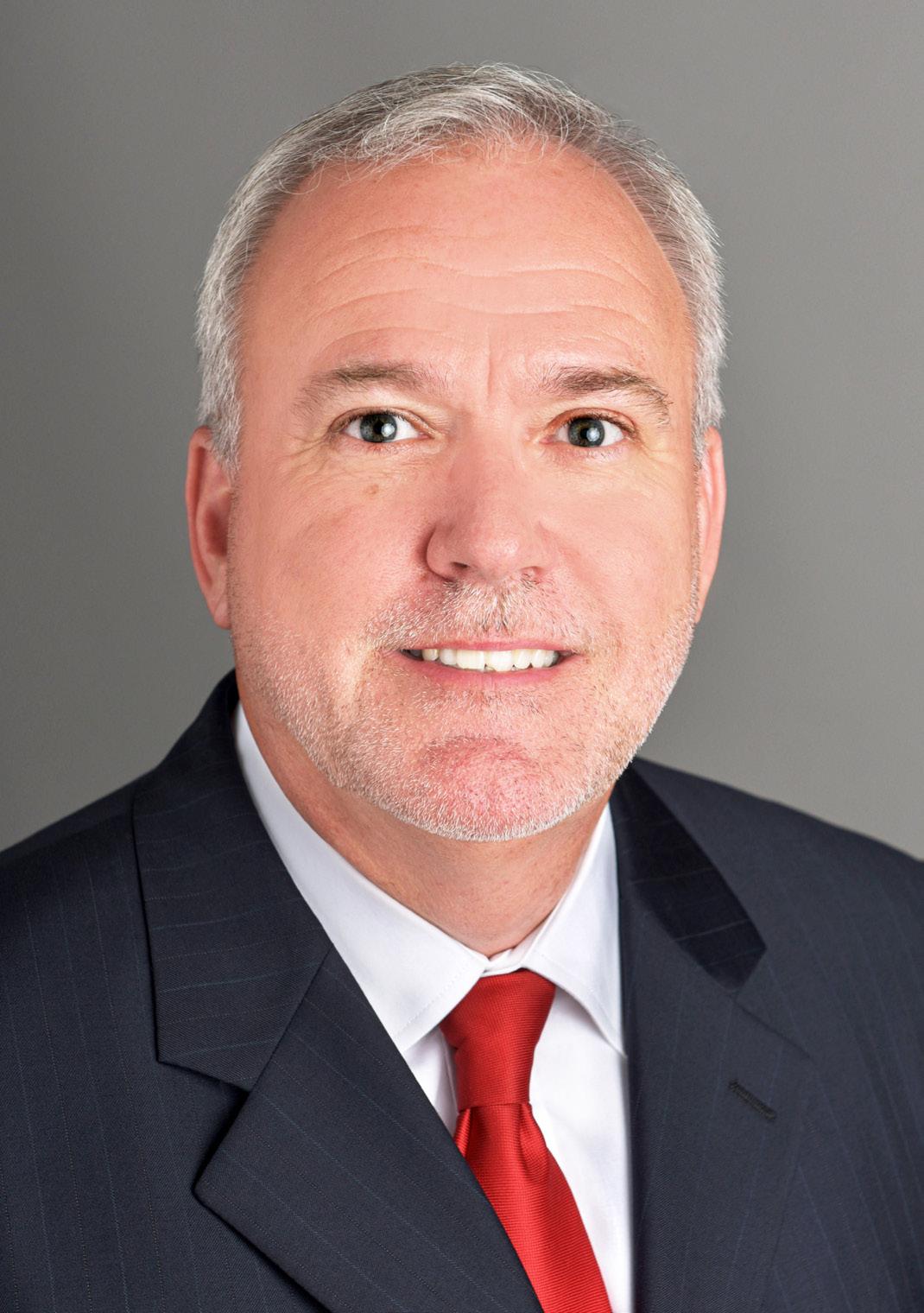
In addition to having great mentors, Chris Johnson credits his involvement with industry groups as a key to his success. “By nature, I am a relatively introverted person,” Johnson says. Participating in activities of the Healthcare Financial Management Association (HFMA), and later taking on leadership roles in that organization helped him come out of his shell.
Johnson joined HFMA to broaden his industry education. After a while, HFMA acquaintances asked him to join leadership committees. Taking on the role of program council director for the North Carolina Chapter was a daunting step.
One of his duties in that role was to open and close multiday meetings. “For the first time in my life, I was close to having a panic attack,” he recalls. He not only survived the experience but also gained great confidence in his leadership ability while quickly learning that any leader is only as good as the team that surrounds him. That knowledge has served him well and prepared him for a multitude of challenges throughout his career. Johnson freely acknowledges any level of success he has achieved throughout his career is a direct result of the many talented individuals on his respective teams.
and postage fees by reducing the number of bills sent to patients.
Now that the system implementation is complete the organization has solidified its footing—and the results speak for themselves. Atrium’s revenue cycle team has enjoyed record cash years in 2017, 2018, and are on track for similar results in 2019.
Much of this improvement is due to teamwork between clinical and financial groups, Johnson says. A multidisciplinary committee focused on reducing revenue lost to third-party denials includes members from patient access, patient accounting, health information management (HIM), case management, radiology, surgery, and other clinical areas.
Members of the patient accounting team shadowed leaders in several clinical areas to gain insight into their daily operational processes, which better prepared them to jump through necessary bureaucratic hoops to turn payment denials into approvals. As a result, Atrium decreased its final denial percentage from 0.76 in 2016 to 0.39 in 2019, representing additional reimbursement of $29.2 million.
Atrium is an organization on the move and if a multiyear computer system implementation wasn’t enough to keep the revenue cycle team busy, in January 2019 the organization, which serves a large area of the Carolinas, combined with Georgia-based Navicent Health, allowing Atrium to expand into new territory. For Navicent, the transaction would boost its ability to improve services such as telehealth offerings and save money through the increased buying power of the larger partner.
While mutually beneficial, the transaction still posed significant challenges for the revenue cycle teams of both organizations. Systems and operations needed to be reexamined to determine how to manage revenue cycle operations as a combined organization. Johnson, with insights gleaned from leadership positions for the Healthcare Financial Management Association, was tasked by Atrium’s senior vice president of patient financial services, to lead the operational team that would execute these plans.
As the organizations combined, the goal was to ensure that both benefitted from processes that allowed for optimal reimbursement. This included taking a careful look at where financial teams spent their time.
“We realized that having our internal staff focused on
MDS (Medical Data Systems, Inc.) delivers an industry-leading, comprehensive suite of revenue cycle recovery solutions. Leveraging the power of 33 years of healthcare recovery work, a tenured team of professionals, and proprietary information technology, we offer the most adaptive, customizable, and comprehensive solution for self-pay and insurance recovery. Extended Business Office/ Early-Out Services



• Self Pay Recovery & Call Center






denial insurance appeals, as opposed to other parts of revenue collection was most effective in our revenue cycle performance,” Johnson explains.
It is this type of operational analysis that has enhanced Atrium’s revenue cycle success. During the past three years, Atrium has optimized internal resources in areas of expertise such as insurance billing and follow-up with the help of external revenue cycle partners specializing in areas such as motor vehicle accidents, worker’s comp, insurance discovery, estate claims, and zero balance account review. As a result, these partnerships uncovered more than $41 million in additional reimbursement to the system,





This continual improvement of the process, through innovation and sometimes basic blocking and tackling, is what drives Johnson’s passion for his job, as it enables the organization to continue its mission. “I was not called to be a clinician which is good for me and the patient,” Johnson says. “However, I truly believe I and other revenue cycle leaders play a role in patient care. The clinical operation is not going to work without a sound financial standing. Even the most dedicated clinicians expect to be paid.” AHL
DCM Services shares in the excitement of Chris Johnson’s continued success and contagious passion. As the industry leader in specialty revenue cycle management solutions we drive higher performance at crucial stages in the recoveries process, having recovered millions in partnership with the Revenue Cycle Management team at Atrium Health.
“ Meduit congratulates Chris Johnson for this well-deserved honor. As vice president of revenue cycle management for Atrium Health, Chris makes a substantial and tangible difference for Atrium and is a valued executive partner for the entire Meduit team.”
–Rhonda Silver, Sr. Vice President of Insurance Operations“I truly believe I and other revenue cycle leaders play a role in patient care. The clinical operation is not going to work without a sound financial standing.”
Executives know there is an increasing need to help individuals manage their own health anywhere and anytime. To do that, healthcare leaders are developing products and services and offering resources catered to different communities’ needs—all aimed at motivating them to stay engaged with their health and empowering them to be their best, at home or at work.
130. Cheryl De Kleine
138. Bart Trench
142. Rena Freeman
146. Rick Kidwell
152. Mark Weiss
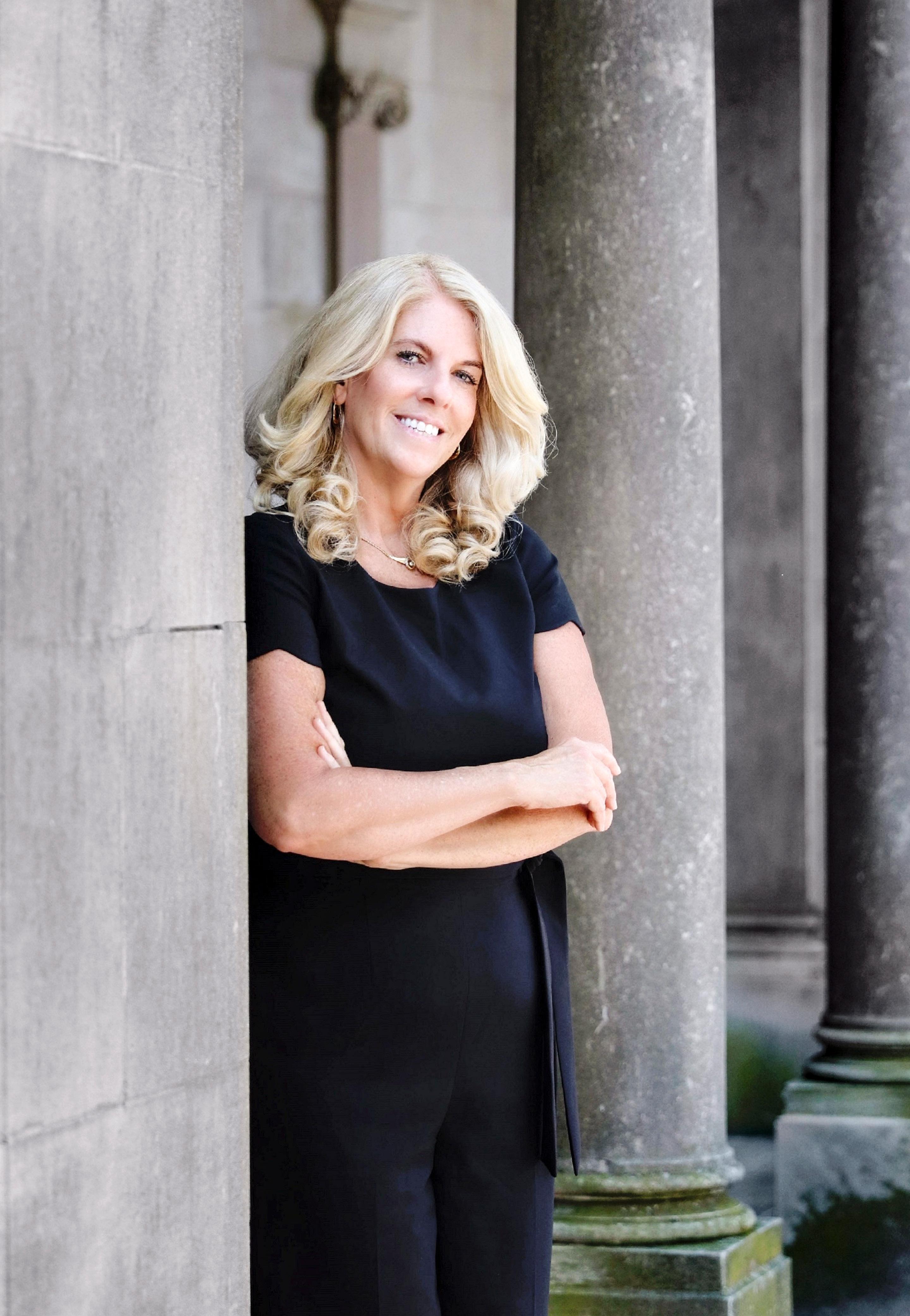 Cheryl De Kleine Senior Director of Claims Management and Litigation Counsel Ascension
Cheryl De Kleine Senior Director of Claims Management and Litigation Counsel Ascension
Ascension’s Cheryl De Kleine has spent decades moving through the healthcare space, and she’s learned that patients and physicians alike are best served when they’re told the truth
By Sara DeeterIt means protecting and enabling talented healthcare providers to continue their life-saving work. It means stepping into a doctor’s shoes when none are available, as she was forced to do when she delivered her second child by herself.
It means telling hard truths when things inevitably go wrong.
“The bottom line is to do the right thing,” De Kleine says. “I don’t know where ‘tell the truth’ got so convoluted in this world, but if you made a mistake, you should accept responsibility, apologize, and just tell the truth.”
As De Kleine sees it, her clients at Ascension are the patients themselves, not an insurance carrier or even the hospital system. “This means that we are heavily focused on patient safety and the improvement of healthcare,” De Kleine explains. “But it doesn’t mean that we don’t have lawsuits or trials—we do. If we believe that the medicine or care that was provided was within the standard of care, we’re going to aggressively defend the hospital system and healthcare providers involved.”
But if any incident occurs at an Ascension hospital that involved liability on their part, De Kleine says, she and her team do not shy away from their
ethical responsibilities to the patient. “We will approach the patient, and their family, and tell them we made a medical mistake,” she explains. “We will answer their questions as best we are able; and if it’s appropriate, we will compensate them. It’s our belief that this will help heal the patient and their family. It also helps heal the healthcare provider, who has to live with having made a mistake, and the system as a whole because we can learn from our mistakes, predict better practices, and improve patient safety.”
This philosophy is at the heart of Ascension’s CORE (Communicate Openly, Resolve Early) program. CORE is similar to the PEARL (Process for Early Assessment, Resolution, and Learning) program that De Kleine led at Stanford as vice president of claims and litigation for the Risk Authority medical network and director of claims and litigation for Stanford Healthcare and Stanford Children’s Health.
De Kleine says that her leadership of that communication resolution program, and her overall perspective on communication in the healthcare space, has been fundamentally shaped by her work with Leilani Schweitzer, a
To Cheryl De Kleine, senior director of claims management and litigation counsel at Ascension, it means having passion and purpose within her career as an attorney.
Bardsley, Benedict & Cholden LLP is a 23 attorney legal services firm headquartered in Philadelphia, PA. BBC Law provides legal counseling and representation in all of PA and NJ along with NYC and WV.
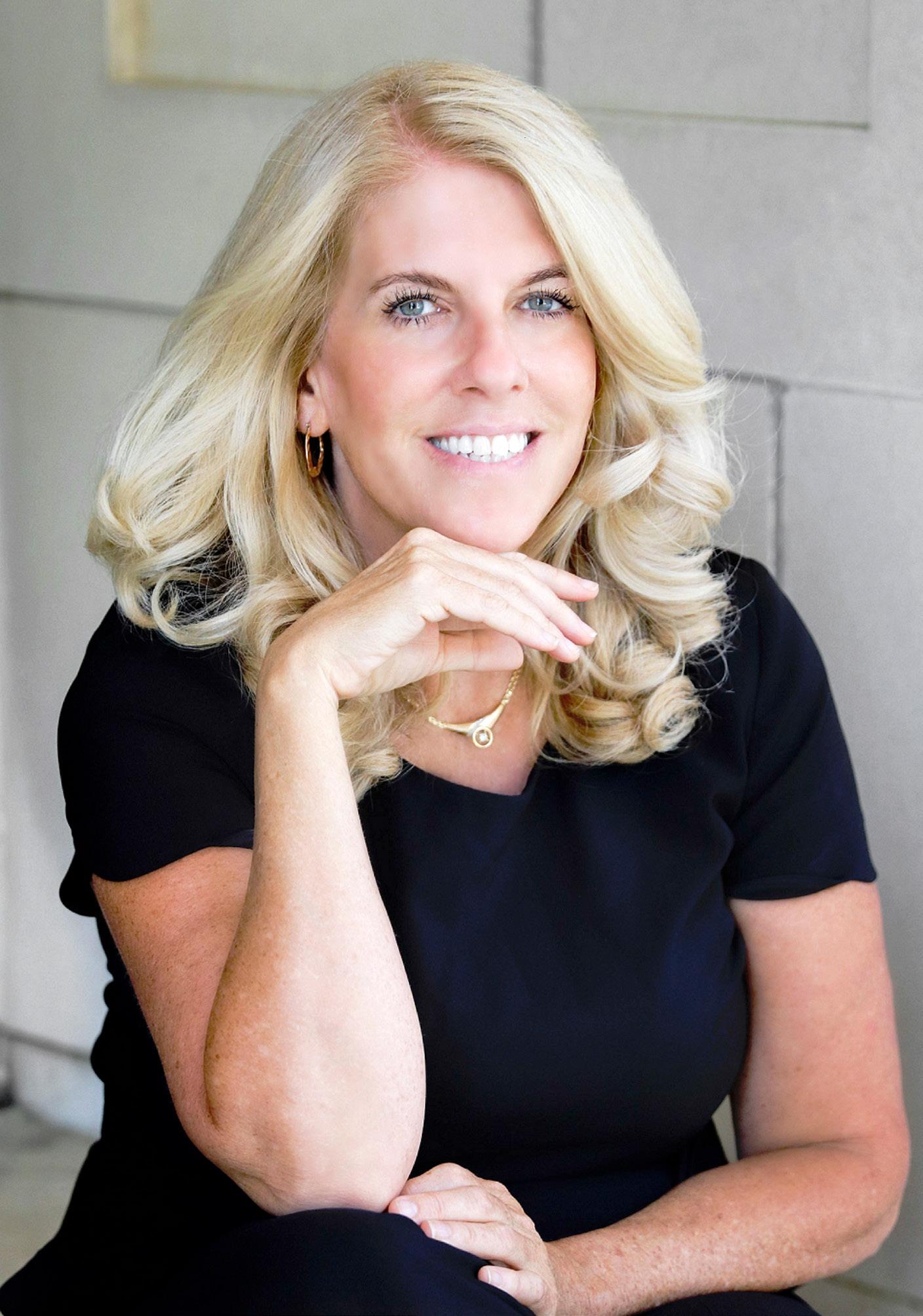
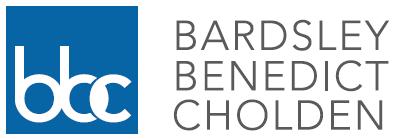



Our clients include local, national and international businesses, insurance companies and healthcare providers. In addition to handling a wide range of disputes, we have a general and commercial litigation practice, a trial practice and a national damages mitigation and Medicare compliance practice.
.bbclawfir m.com
“The bottom line is to do the right thing. I don’t know where ‘tell the truth’ got so convoluted in this world, but if you made a mistake, you should accept responsibility, apologize, and just tell the truth.”
Outside of Ascension, Cheryl De Kleine encourages medical communities and professionals around the world to confront the truths of patient care. But sometimes, she points out, confronting the truth isn’t as simple as it seems.
“We always talk about medical errors and misdiagnoses,” De Kleine says. “Some studies actually note that medical errors are the third leading cause of death in the United States. It just depends which study you’re looking at.”
It can be difficult to find the truth, De Kleine knows, but everyone in the healthcare industry can do something to help get closer to it. De Kleine believes her part is to use her platform as senior director of claims management and litigation at Ascension and as president of the Collaborative for Accountability and Improvement to help spread communication resolution programs throughout the United States and the world.
PEARL patient liaison for Stanford University Hospital’s Risk Management.
“Leilani’s son died at Stanford from a medical error when he was just twenty months,” De Kleine explains. “She went through early resolution efforts there, which helped her to some extent, and now she is an international advocate for greater disclosure and transparency in healthcare. When I met Leilani, she explained how they put into place appropriate safety measures so it wouldn’t happen again. She, and her son, changed the purpose and direction of my life; she’s just an amazing woman, colleague, and friend.”
It is largely because of the sense of purpose provided by her commitment to patient care and transparent communication that De Kleine feels so fulfilled in her work at Ascension. “I love this job more than any other job that I have had,” says De Kleine, whose path to Ascension spanned roles in the professional liability insurance industry and medical liability defense space, a clerkship at the Superior Court of the State of New Jersey, and a thirteen-year career as an adjunct history professor—not to mention her claims and litigation work at Stanford University.
Of course, all of that followed the twelve-year period in which De Kleine earned a bachelor’s degree in history from Fairleigh Dickinson University and attended an additional four years of law school at night while raising her three children.
“I obviously took the long way to get to where I am now,” De Kleine says, laughing. “But I think that
“I’ve met so many different people and had so many different experiences. I think that helps me to keep an open mind and gain a new viewpoint on life.”
ARCADIA SETTLEMENTS GROUP SALUTES & CONGRATULATES

ON HER LEADERSHIP AND INVALUABLE CONTRIBUTIONS TO ASCENSION’S LITIGATION DEPARTMENT.
Our St. Louis team is proud to have partnered with Cheryl and her colleagues at Ascension for over 20 years to help people made vulnerable by injury achieve long-lasting financial security.
We offer structured settlement consulting services in the following practice areas:


• Medical Malpractice
• Worker’s Compensation
• General Liability
• Minors & Injured Children
• Medicare Set-Asides


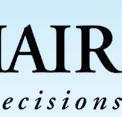

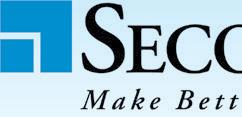
journey provided me with a really good perspective on things—I’ve met so many different people and had so many different experiences. I think that helps me to keep an open mind and gain a new viewpoint on life.”
De Kleine’s partners like ProAssurance Healthcare appreciate her fresh perspective to help guide projects. “Cheryl’s claims management experience is invaluable,” says Mike Severyn, regional vice president of claims for the professional liability insurance division at ProAssurance. “Now that Certitude, ProAssurance’s professional liability program with Ascension, has grown to almost four thousand physicians, we appreciate her ability to navigate complex legal issues.”
De Kleine’s determination to remain open to new experiences is what pushed her to move to Stanford, and later to Ascension, despite the concerns she received from those around her. “I think some people thought I was crazy to pack everything up and move across the country,” she chuckles. “I think there is maybe a misperception that if you’re out of your twenties, you shouldn’t just pick up and do some crazy thing like move across the country, where you don’t know anybody, to start a completely new job.
“It was exciting and challenging all at the same time,” De Kleine continues. “But I’ve learned to trust that everything in my life is taking place at the right time and in the right place—whether it’s good or bad, it will get me where I’m supposed to be. I just have to continue pushing myself and challenging myself so that I stay passionate about what I do.” AHL
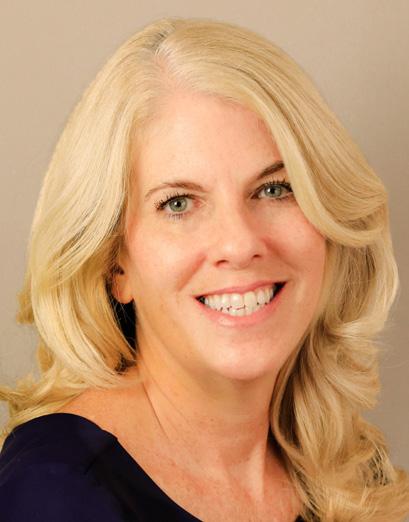

Through the Certitude program, ProAssurance and Ascension have worked together to provide liability coverage and malpractice claims defense to over 3,500 Ascension health ministry affliated physicians.
As part of the defense team, Cheryl exemplifies the value we place on deepening superior relationships with unbending integrity.
We salute her tenacious commitment to defending the medical professionals serving in Ascension ministries.
PROTECTING good medicine and the pursuit of positive outcomes
Bart Trench has nearly twenty years of HR experience, two master’s degrees, and a wealth of experience handling human capital. But Trench’s extensive résumé isn’t enough to convince the HR professional that taking on a head of benefits and wellness position at Protective Life Corporation in Birmingham would be a work-mandated walk-in-the-park.
“This is a new situation for me, as I was never expected to be a true expert in benefits before,” Trench admits. “HR can be so complex in its individual roles that I used to joke that the only time I paid close attention to the benefits was when I was applying for my own.”
But after eighteen years of business-supporting HR roles, Trench says he’s been able to key in on what’s best for maintaining and keeping employees healthy and happy, what’s best to keep the business moving forward, and how Protective Life has managed to find the sweet spot in the middle.
From the outset, Trench said that while benefits may be a new HR focus for him, his preparation for the role was somewhat the same. “Early on I put together a three-year plan of what I was hoping to accomplish each year and stagger different initiatives,” Trench says. In 2017, he knew that he would be eyeing a change in the benefits administrative system for implementation in 2020. “I was being bombarded by all sorts of vendors who wanted our business, and that plan helped me determine whether to tell them that what they were offering wasn’t on my road map or to contact me in a year or two.”
Trench says that Protective Life provided invaluable leadership support from the very beginning, which has made his job significantly easier. “With a company our size, you have to find the right balance of supporting employees, helping them engage while still being a good steward of company resources,” Trench explains. “I think we’ve found that right balance and a lot of credit goes to good leadership here.”
The wellness benefits at Protective Life are impressive for not just the variety of options available to employees, but also the focus for genuine employee engagement. Last year, Protective Life introduced a new high deductible health plan that Trench says is maybe one area where the company was slightly behind the times, but the rest of the wellness offerings put Protective well ahead of its competition.
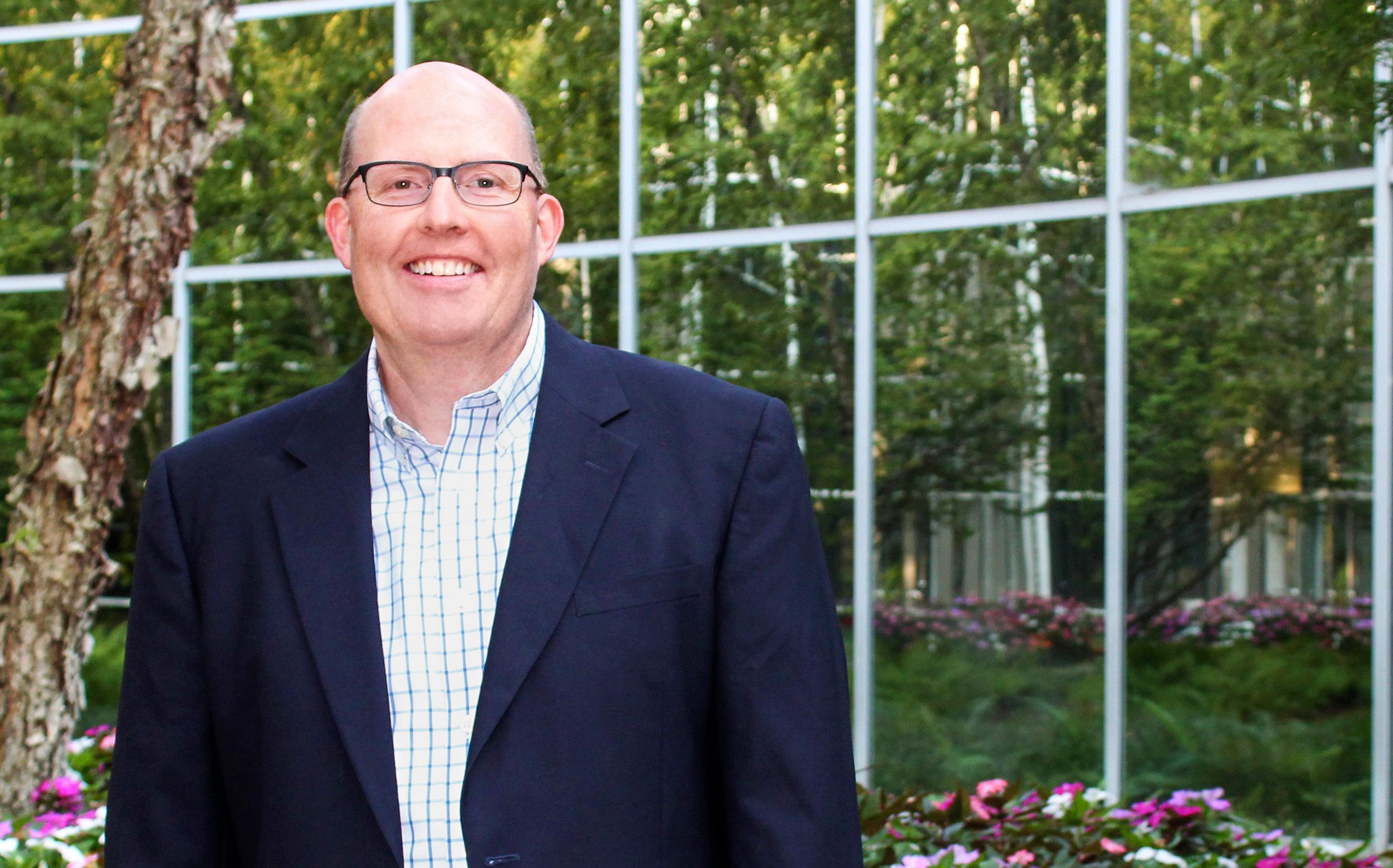
In collaboration with Birminghambased Pack Health, Protective Life offers disease management and health coaching free of charge. Expecting parents are offered free telehealth services through
Maven from the time parents find out they’re pregnant until six months after the baby’s arrival. “It’s everything from lactation experts after the baby comes to the mental health issues that can sometimes accompany new parents,” Trench says. Regardless of the need, Protective Life picks up the check.
In partnership with Chip Rewards, Protective outfits each new employee with a Fitbit and through its internal Pro Health Rewards program, employees are able to turn steps into points and points into money, up to $700 a year. “Our goal is to offer another way to offset
health expenses,” Trench says. “If you’re taking part in these programs, chances are you’re probably living healthier, but things do pop up, and these rewards can go towards meeting a deductible if necessary.”
The coming year includes the implementation of the previously mentioned benefit administrative system. “This will allow us to put all of the benefits resources and enrollment in those benefits in a single place,” Trench says. “The accompanying mobile app is great as we thought employees should be able to access these benefits on their phones in 2019.”
Trench is the first to admit that their “meat and potatoes” insurance plans aren’t as cutting edge as their health and wellness offerings, but the HR professional says for a company its size, Protective Life takes its employees health incredibly seriously. “This company has a long history of supporting employees: from our gym at our corporate headquarters to our thirtytwo-hour-a-week nurse practitioner to our full-time wellness director,” Trench says. “Not many companies our size were willing to hire a dedicated wellness employee.”
Benefits may be new for the department head, but Trench has made new paths before. He came to the HR field with a clinical psychology and behavioral health background. As Trench continues to get more comfortable in his benefits role, he says his pragmatism will continue to guide his vision for the wellness programs at Protective Life. “We’re not going to implement programs just to do it,” Trench says. “We’re finding the right balance for what’s the employee’s capacity to take all of this on and what’s right for the company.” AHL
“We’re finding the right balance for what’s the employee’s capacity to take all of this on and what’s right for the company.”
Three decades is a long time—plenty of time for both individuals and organizations to grow, change, and evolve.
Rena Freeman has certainly seen, and experienced, a lot of change during her twenty-seven years with the AdventHealth nonprofit care system. But despite all of those changes, one thing remains crystal clear in Freeman’s mind: AdventHealth is the only place she wants to be.

When Freeman started working for AdventHealth’s largest affiliate hospital—Florida Hospital—as a compensation analyst, she was driven by a sense of curiosity. “That is something I would recommend for anybody, whatever role they’re in. You have to be able to understand how things work and be aware of how different elements work together,” says Freeman, who is now vice president of total rewards.
Asking those questions—questions like, “How does what you’re working on
After witnessing the evolution of AdventHealth, Rena Freeman capitalizes on all that she has learned to advance the interests of both the organization and the employees who believe in its missionRena Freeman VP of Total Rewards AdventHealth
drive change in people’s pay?”—propelled Freeman through increasingly senior roles at AdventHealth (formerly known as Adventist Health System). But Freeman quickly realized that she couldn’t take those promotions for granted. “For a long time, I thought that my hard work would be noticed and that I would get advanced because of that,” she explains. “But I learned that you have to ask for it—you have to make it known that you want to take that step.”
In fact, early on in her career, Freeman looked beyond AdventHealth to gain the kind of job title she was seeking. But while her title may have improved, the culture she was working in had not. “The other organization was not focused on a mission like AdventHealth’s; they were just looking out for themselves,” Freeman remembers of a particular management team. “I moved right back to Florida Hospital after about a year because I knew that I wanted to work for people that had integrity, people that I liked working with.”
That integrity, and the mission-mindedness of AdventHealth’s leadership, has remained consistent throughout the organization’s lifetime, Freeman says, even as AdventHealth has acquired other hospitals and expanded into other states. “AdventHealth has always
Rena Freeman has yet another reason to love working at AdventHealth—her husband has worked there on and off as photographer for quite some time now.
“It’s interesting, working together. Positive, for the most part,” Freeman laughs. “We don’t have any crossover in reporting, so we’ve always kept a line between our work. And it is nice—when I go to his work events, for example, I run into people that I know and can chat with. I don’t feel like an outsider.”
Advent Health is a pioneer in people-centered retirement designs and programs, helping each employee meet his or her individual retirement goals.
Alight has been a proud partner for over 25 years.
Alight Solutions is the leading provider of benefits administration and cloudbased HR and financial solutions. Learn more at alight.com.
been extending the healing ministry of Christ,” Freeman says. “Even in a business role, I can still be involved in that mission. I stay here because I feel that there is a purpose to what we’re doing.”
As VP of total rewards, Freeman plays a large role in attracting and retaining talented people who can help deliver on AdventHealth’s mission. “We are in a competitive environment right now,” Freeman explains, “so having the right package is key to attracting and retaining that workforce. We’re always assessing the marketplace and how that compares with what we’ve been planning.”
That can be challenging at times, of course. “How we are paid, as an industry, directly impacts what we can and cannot offer to our talent,” Freeman remarks. “But AdventHealth has really talented clinical leadership, and a strong focus on how our bottom line allows us to continue to reinvest in the health of our communities. I think that tie to our communities, and the dedication to the health of our communities, has been what has given us staying power.”
But it isn’t just the industry-wide financial fluctuations that make Freeman’s job so complex. Employees at any healthcare organization, especially one so wide-ranging as AdventHealth, have a huge spectrum of pay, Freeman notes. Whether an individual is on the
lower or higher end of that spectrum, Freeman prides herself on being compassionate and examining the needs of that individual.
As Freeman points out, however, acting with compassion does not mean acting without thought. “I always say that I’m soft-hearted but not soft-headed,” Freeman says laughing. “You have to be compassionate towards your workforce, especially the ones whose labor is unfortunately just not valued as much in the marketplace, but that doesn’t mean that you should pay way above market. You can look at other things you can do for your workforce, at things they need beyond pay like references to services available to them or extra help understanding their benefits.”
Perhaps one reason why Freeman dedicates herself to AdventHealth employees so single-mindedly is the trend she has seen in both healthcare and the business world at large.
“I have seen a real change in how human resources is valued and viewed by top management,” she says. “But before, in any industry you looked at, it was looked at very much as an expense. It has taken a long time for executives to really see their people as clients, as something that they need to value. They’re not an expense at all but rather a competitive advantage.” AHL
The future of work is brighter, simpler and designed around people.
“I think that tie to our communities, and the dedication to the health of our communities, has been what has given us staying power.”
Mercer is honored to continue our partnership with Rena Freeman and AdventHealth.






We congratulate Rena on being an inspiring and influential executive leader. We wish her and AdventHealth continued success.

Rick Kidwell emphasizes openness, availability, and honesty to achieve better results for his legal team and colleagues at UPMC
 By KC Esper
By KC Esper

“I see my role as one that’s evolved into more of a counselor,” he says. “I provide legal advice on dealing with adversaries and claims or things of that nature. Now, it’s more about listening to people or providers about their troubles and offering them insights on how we can work everything out.”
While Kidwell’s tenure taught him a great deal about law, it taught him even more about human nature. He no longer saw himself as a problem-solver solely using his legal expertise. Instead, he became adept at using a different—and perhaps a more powerful—tool to mend issues: empathy.
Fresh out of law school, Kidwell joined a private firm in Baltimore called Miles & Stockbridge. During the first fifteen years of his professional career, he handled myriad cases mostly surrounding product liability work, but he quickly realized that rare medical malpractice cases piqued his interest most. So, when he was referred to Johns Hopkins for a position as managing attorney for claims and litigation, he jumped at the chance to interview with them.
“When this opportunity came along, I plunged right into it. I guess you could say I was thrown into the deep end, but because I’m so tall, I didn’t drown,” jokes Kidwell—who, by the way, is six and a half feet tall.
“Once there, I found that doctors teach medicine as much as they practice it,” Kidwell continues. “It gave me a greater appreciation for the pressures they work
under and an understanding of medical malpractice cases because nothing is black and white. It’s tough to always know the answer in real time and much easier to see something in retrospect.”
Kidwell happily took any chance to shadow a doctor in the emergency room or during a surgery. He learned about the circumstances that dictate specific decisions in an operating room, about the complex task of accurately reading x-rays, and the intricacies of treating patients based on their specific needs and complications. Naturally, these firsthand experiences subsequently informed Kidwell’s legal work.
“We have to convince juries to put themselves in the position of a doctor or nurse,” he says. “Show them that this is what we know and this is what we can do about it at the time, but at the end of the day, we may not control the final result.”
Kidwell, who came to Johns Hopkins without a preconceived medical mind-set, discovered that, through these firsthand experiences, his ability to connect with patients, juries, doctors, and lawyers strengthened tenfold, making him a valuable asset to colleagues internally and externally.
“Rick Kidwell’s remarkable background as a trial lawyer, healthcare expert, and risk management executive provides him with the expertise to address a broad spectrum of legal and administrative issues,” John Conti, president and CEO of Dickie, McCamey & Chilcote, says of his colleague. “Our legal team endeavors to work seamlessly with Rick on a daily basis to
When Rick Kidwell joined the University of Pittsburgh Medical Center (UPMC) as senior associate counsel in 2004, he already had more than twenty-six years of law experience under his belt. Throughout that time, Kidwell carved a name for himself within healthcare law as not only an esteemed and practiced lawyer but also as a trusted advisor for patients, doctors, and stakeholders throughout the system.
efficiently resolve whatever question or challenge may arise.”
When Kidwell moved to UPMC almost eleven years later, he was delighted to discover that the organization upheld a similar atmosphere centered on learning. He immediately got to work building relationships with key partners so that the whole organization could work together better.
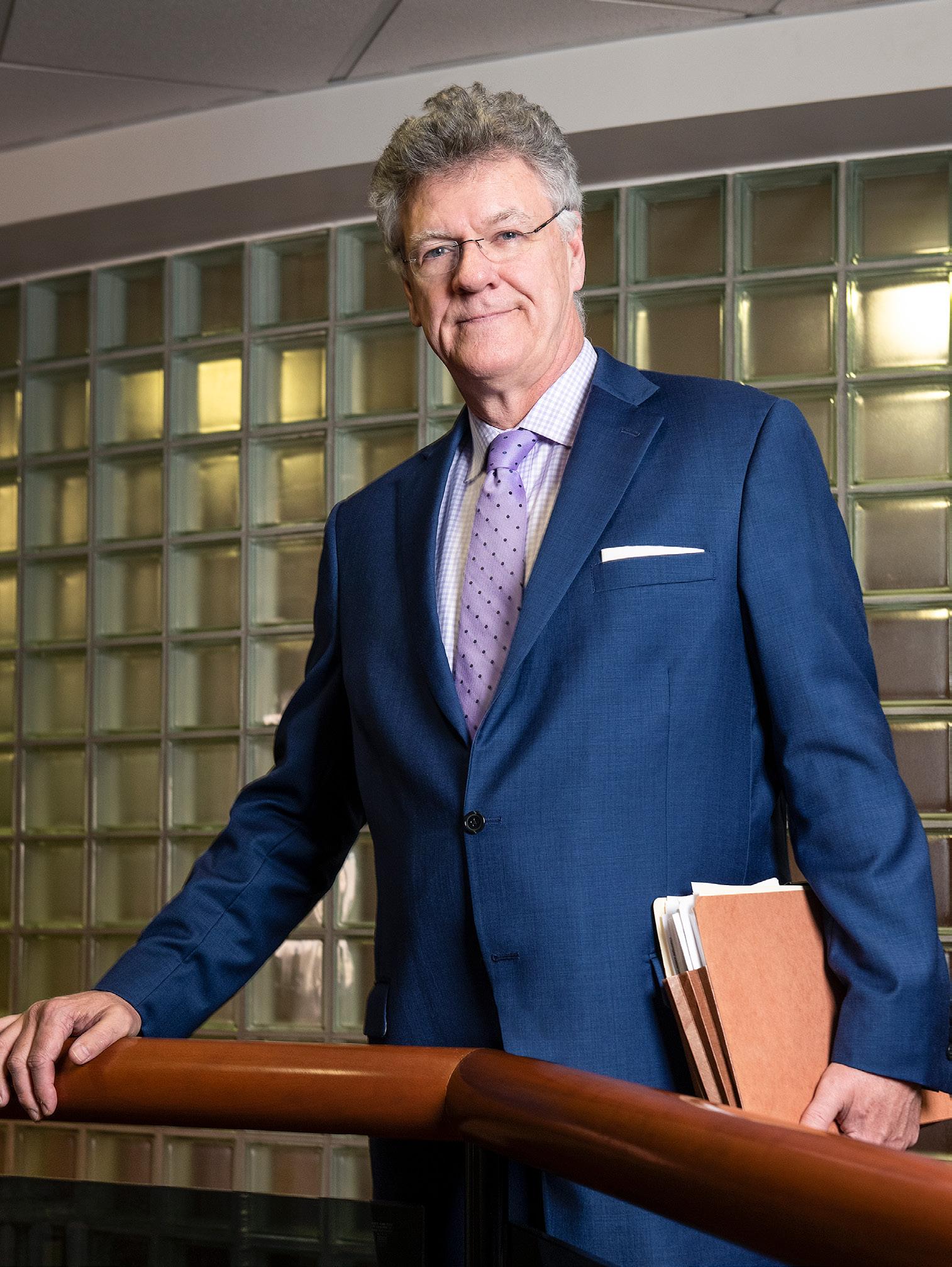
Above the Bottom Line
“The first thing I had to do was get my arms around the behemoth that is UPMC,” Kidwell remarks. This is no exaggeration—the organization is huge. Spanning across Pennsylvania and now with locations in New York, UPMC has more than 40 hospitals, 87,000 employees, and 5,500 beds.
Since 2004, UPMC has practically doubled in size. But even as the organization has experienced consistent growth over the years, Kidwell has made an effort to close the gaps between the sprawling campuses.
“I’ll get on the road and spend afternoons at different hospitals,” he explains. “I make sure that I attend meetings periodically in each of the hospitals, whether it’s a patient safety, risk management, or executive board meeting. I like to let them know that I’m here to work with them and keep those lines of communication open.”
In fact, to Kidwell, open communication is vital in ensuring that the human aspect of medicine shines through each step of the way—and he encourages his team to hold it in equally high regard. Similar to how doctors have prescheduled on-call weeks, Kidwell has adopted a system to have his team available 24/7 to provide legal advice and support .
“Physicians, nurses, and social workers can pick up the phone and call one number to talk to a lawyer,” he explains. “Then it connects them instantly to one of us so we can answer any questions they have about decisions, issues, or emergency situations.”
“It’s about finding common ground. Disclosing any errors we make is the right thing to do, and it’s best to talk to people upfront, candidly and transparently.”Mark Bolster/UPMC Creative Services
www.noblemediation.com

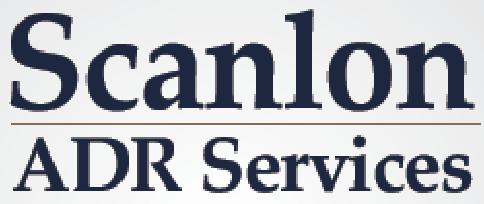



(724) 925-1123


Noble,
Esq. Hon. Gary P. Caruso, Ret. Hon. Damon J. Faldowski, Ret.Western Pennsylvania's leading ADR firms agree that Rick Kidwell single-handedly changed the ADR landscape throughout Western Pennsylvania. Before his arrival, Medical Malpractice Mediation was next to non-existent. We heartily congratulate Rick for raising the ADR bar for all of us.
Rick Kidwell’s mediation efforts have not only offered him recognition inside the various institutions at which he’s worked. He’s also been featured in two nonfiction books, Josie’s Story and The Immortal Life of Henrietta Lacks
Both books, which tell stories of families who were involved in unique medical lawsuits, feature Kidwell’s thought leadership as he helped guide the families and remedy their situations.
On a flight back to Pittsburgh from Greece, Kidwell noticed a woman reading The Immortal Life of Henrietta Lacks. “Let me know when you get to page 225,” he told her, explaining that he was the lawyer featured in the narrative. At the end of the flight, the woman, having finished the book, excitedly asked if Kidwell would sign her copy.
Appropriately, he added a note to accompany his signature: “Always do the right thing.”

The idea of the on-call system, Kidwell goes on to explain, is that it allows lawyers and healthcare professionals to work out problems in real time to find a solution rather than waiting until the problem potentially gets worse. Avoiding legal confrontations in the long run allows UPMC to protect its employees to better serve its clients.
In this vein, Kidwell took communication a step further, founding a mediation program that encourages communication between patients or family members wronged in medical malpractice cases, the patient’s lawyer, and a UPMC lawyer like Kidwell.
time in court, less money spent by both parties, and more actionable solutions. “It’s about finding common ground,” Kidwell says. “Disclosing any errors we make is the right thing to do, and it’s best to talk to people upfront, candidly and transparently, rather than sticking our head in the sand and ignoring something—or worse, covering it up.”
(412) 281-8908



Hon. Eugene F. Scanlon, Jr., Ret. Hon. Stephen P. Linebaugh
“We have a mediator/facilitator help us try to resolve whatever issues there are in a nonadversarial, less confrontational, and much more efficient, less expensive way,” Kidwell says. “It gives us a chance to explain how things happened and assure them that it won’t happen again to somebody else. It gives patients and family members a sense of satisfaction, knowing that they’ve accomplished something to help other people.”
Since starting the program, the legal team settles nearly 90 percent of the cases it mediates. That means less
In total, Kidwell’s knack for harnessing the power of empathy has earned him accolades among peers and patients alike. Though the idea of helping, not hurting, seems simple, many in the healthcare industry walk a tightrope trying to bring this idea to life. But over the past forty-plus years of Kidwell’s career, he’s learned that staying balanced when it comes to the high-wire act of healing other people relies on employing a fundamental tactic: doing the right thing. AHL
Dickie, McCamey is justly proud of its decades-long service to UPMC, a world renowned healthcare system. With a sustained focus on providing value, we embrace our role as the go-to firm for trial and appellate excellence, as well as a broad array of healthcare counseling matters.
Since 1906, our lawyers have helped members of the health care industry navigate the present and chart the future.

The lawyers of Dickie McCamey are nationally ranked in seven practice areas and regionally ranked in 27 practice areas, according to U.S. News & World Report and Best Lawyers®
20 LOCATIONS | 11 STATES | 1 FIRM
 By Billy Yost
By Billy Yost
Real estate in New York City is tight, but Mark Weiss helps Cushman & Wakefield partner with healthcare institutions to make use of any and all space
Executive vice chairman Mark Weiss says the reason Cushman & Wakefield is able to consistently outmaneuver and outmatch its competition in the healthcare space is because of its diligence in stay abreast of any and all changes in the industry.
Operating at maximum capacity is especially essential in New York City where space is tight, competition is fierce, and the physical space requirements are unique. Weiss, member of the company Global Advisory Board at Cushman & Wakefield, and winner of Real Estate Board’s Most Ingenious Deal of the Year award a collective seven times in three different markets, should know. The EVC has completed more than 1,400 transactions in his 32 years of real estate experience.
“The trends in healthcare spaces are toward multidisciplinary practice groups sponsored by the hospital,” Weiss says. “It’s the most efficient blueprint model out there that benefits patients, physicians, hospitals, and insurance companies. The services are delivered more efficiently, which means less waste.” The population density of New York City makes these sorts of practice models what Weiss calls a “flawless environment.”
Part of Cushman & Wakefield’s edge, Weiss says, is a monthly briefing provided to the team on any relevant change or development in healthcare spaces, regulations, or otherwise pertinent information to make sure the ever-changing healthcare landscape can be
accounted for. “We’re out in front of the curve without having to do the heavy lifting ourselves,” Weiss says. “It’s making people like me all over the country better than we ordinarily would be and is part of why I’m so proud to be at Cushman & Wakefield.”
Weiss says that multiple parts of the business stay close to the industry, which allows Cushman & Wakefield to operate more seamlessly alongside their clients’ needs. “Our property management department is, we believe, the best in the business,” Weiss says. “They’re absolutely essential for evaluating the asset base of a healthcare institution, understanding any deferred maintenance issues, which is very common in this space, and using their expertise to properly value the enormous amounts of facilities, whether these institutions want to sell them or not.”
In providing that litany of services, Weiss says the company functions in unprecedented concert with its clients. “It keeps us close to these healthcare institutions, and makes us both feel like we’re partners,” Weiss says. “It gives us opportunities and access to many of their requirements so that we’re engaged and solving problems before anyone else. We become partners by using all of our service lines, not just transactional or financial wizardry.”
Weiss says that along with its clients, Cushman & Wakefield relies on the New York State Department of
Health’s (NYDOH) approval on almost every deal. The EVC says that government is often maligned for inefficacy, but in the NYDOH’s case, it’s a welcome opposite. “The state doesn’t get enough credit as they’re quite efficient with these healthcare providers,” Weiss says. “Everyone understands that you have to play respectfully by their rules, and I think the Department of Health should be praised in this case.”
It’s the DOH’s approval and his respect for the process that prevents Weiss from commenting on anything remotely close to the deals he’s currently working on that will pile on top of his 1,400 transactions. But he says he’s especially proud of a long lead transaction that Weiss says was one of the most intricate of his entire career: the New York Proton Center.
“It was a deal that was made fourand-a-half years ago but only now just opening, and it is a facility that is going to transform medicine in New York City and New York State,” Weiss says. “Hundreds of lives are going to be saved that might otherwise have been lost to pediatric brain tumors, and if there’s ever something that should make me proud professional, it’s that transaction.”
Operating in New York City is not for the faint of heart. But Weiss, who admits to working longer hours than probably anyone he knows, says the “full-contact sport” of New York City real estate is the best teacher in the world.
“I think I’m successful not because of the successes in my career but because of the very many failures I’ve had,” says Weiss, who spends his free time training for triathlons. “Nothing makes you better than failing, being humiliated, and being honest with yourself about what you’ve learned.” AHL
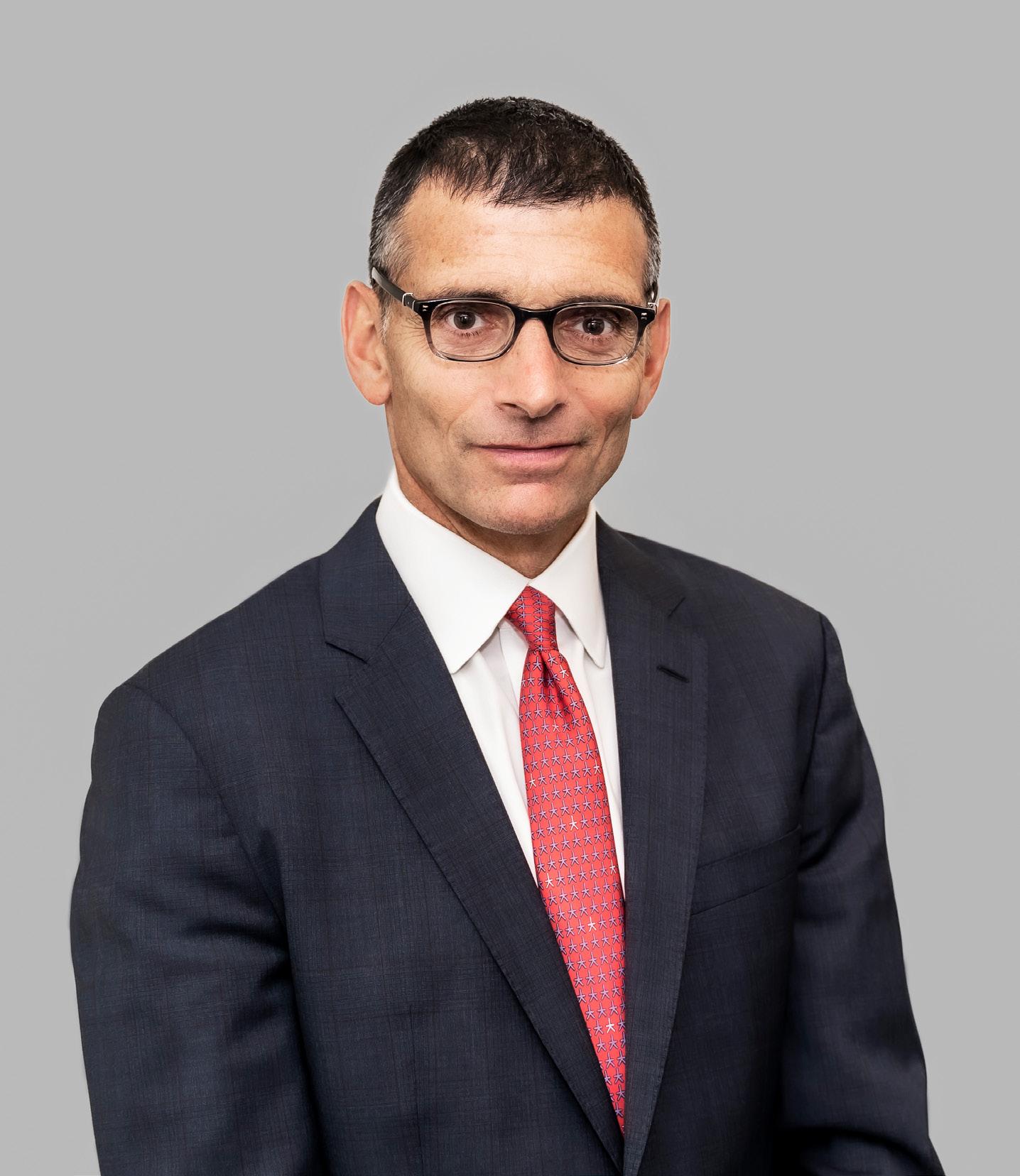
Mark Weiss Executive Vice Chairman Cushman & Wakefield
“Hundreds of lives are going to be saved that might otherwise have been lost to pediatric brain tumors, and if there’s ever something that should make me proud professionally, it’s that transaction.”Jamie Panico Photography
We are pleased to support the leading executives featured by American Healthcare Leader with whom we are honored to work.

As the healthcare industry transitions from volume to value, you need a partner with access to a wide set of solutions that can be customized to meet your goals.

Our experience across the continuum of care allows us to be creative in building solutions for your human capital and risk management needs. Regardless of how and where you provide care today, or plan to provide care tomorrow, we will help you solve the challenges of operating a sustainable healthcare organization while meeting the needs of your employees and your community.
Start a conversation with Gallagher today. www.ajg.com/healthcare
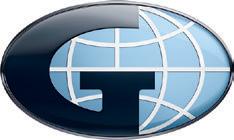 © 2019 Arthur J. Gallagher & Co. 35610A
© 2019 Arthur J. Gallagher & Co. 35610A
We are pleased to support the leading executives featured by American Healthcare Leader with whom we are honored to work.

As the healthcare industry transitions from volume to value, you need a partner with access to a wide set of solutions that can be customized to meet your goals.

Our experience across the continuum of care allows us to be creative in building solutions for your human capital and risk management needs. Regardless of how and where you provide care today, or plan to provide care tomorrow, we will help you solve the challenges of operating a sustainable healthcare organization while meeting the needs of your employees and your community.
Start a conversation with Gallagher today. www.ajg.com/healthcare
 © 2019 Arthur J. Gallagher & Co. 35610A
© 2019 Arthur J. Gallagher & Co. 35610A